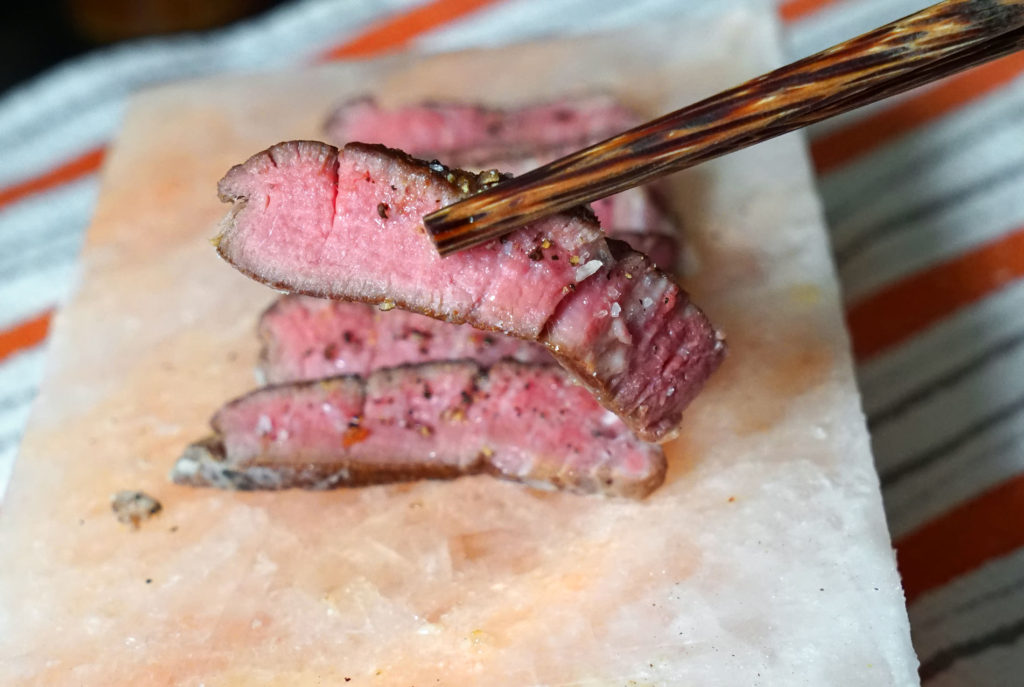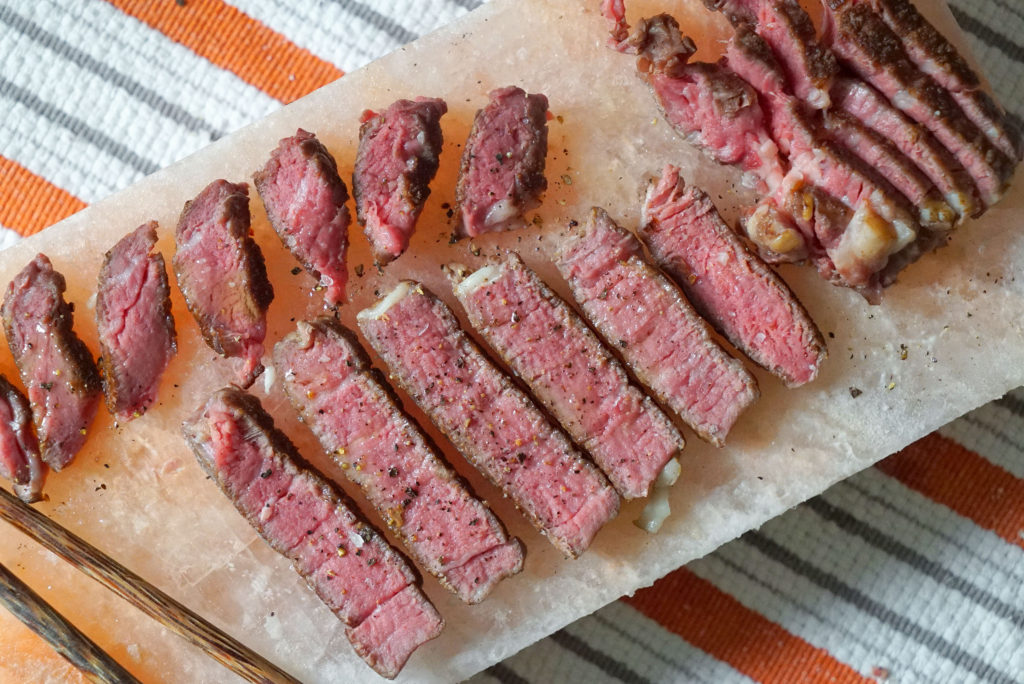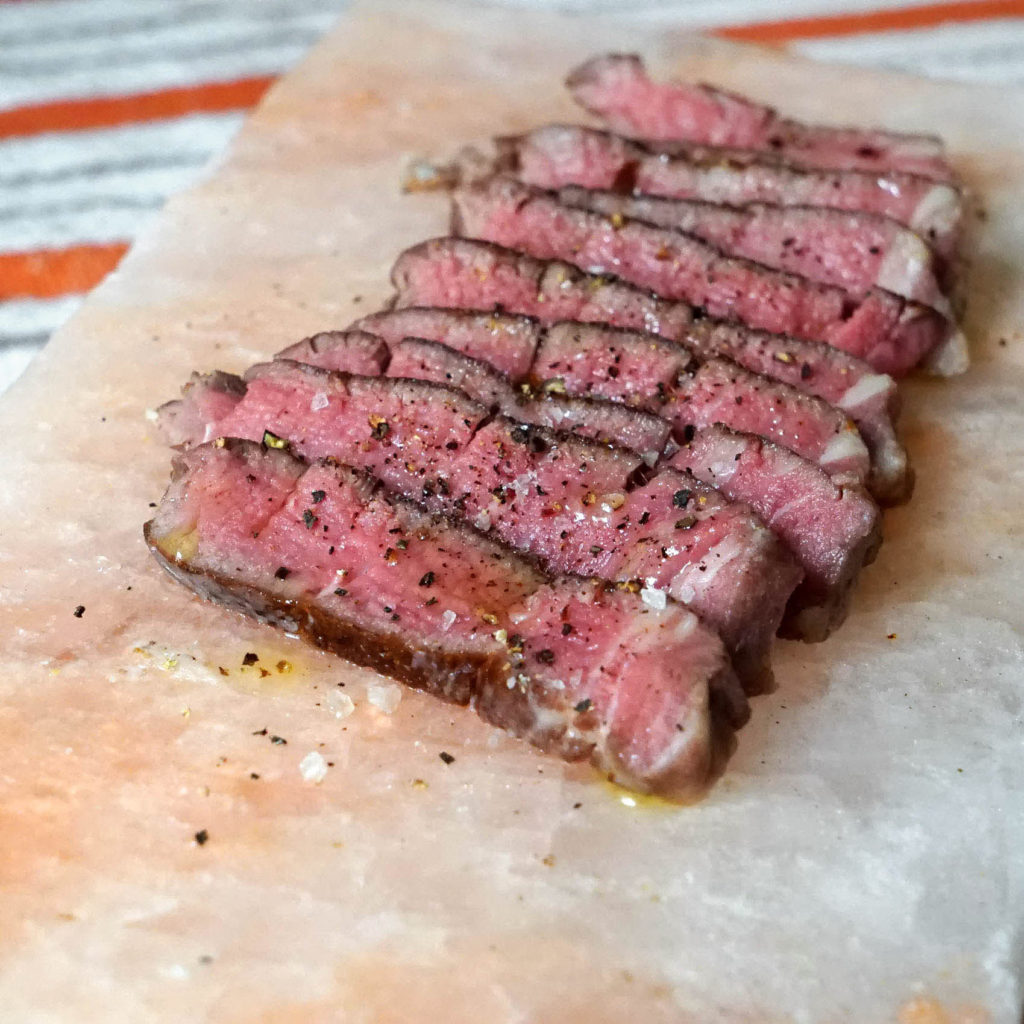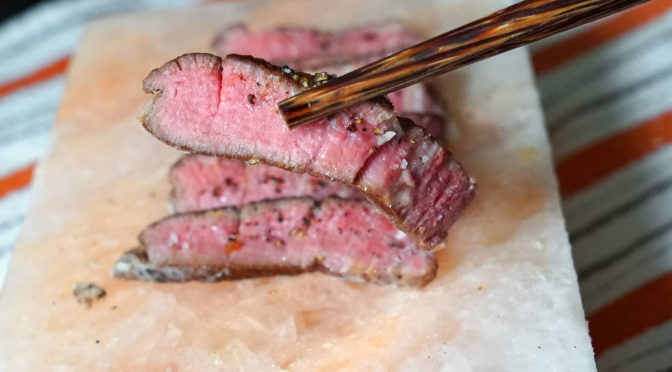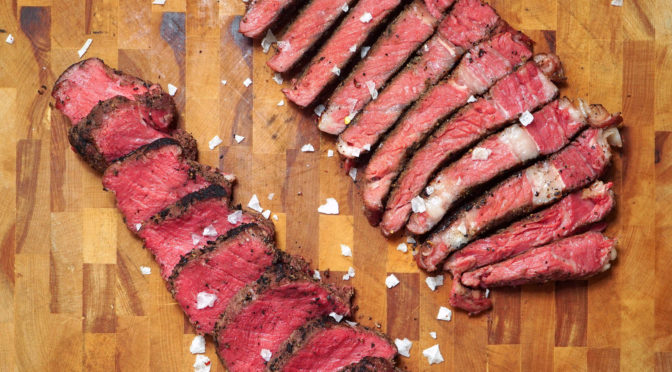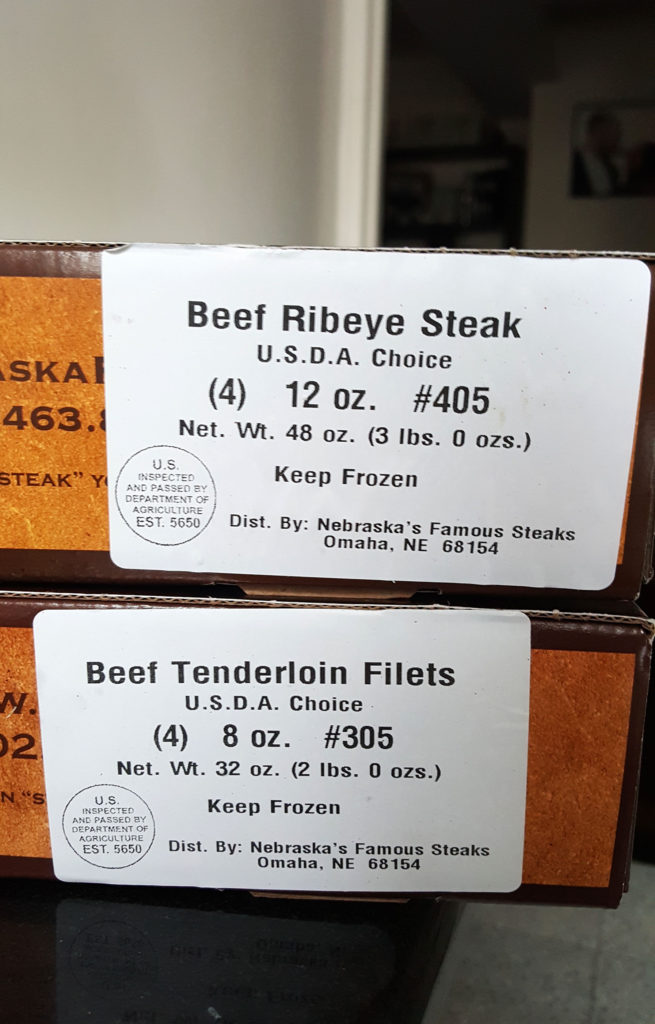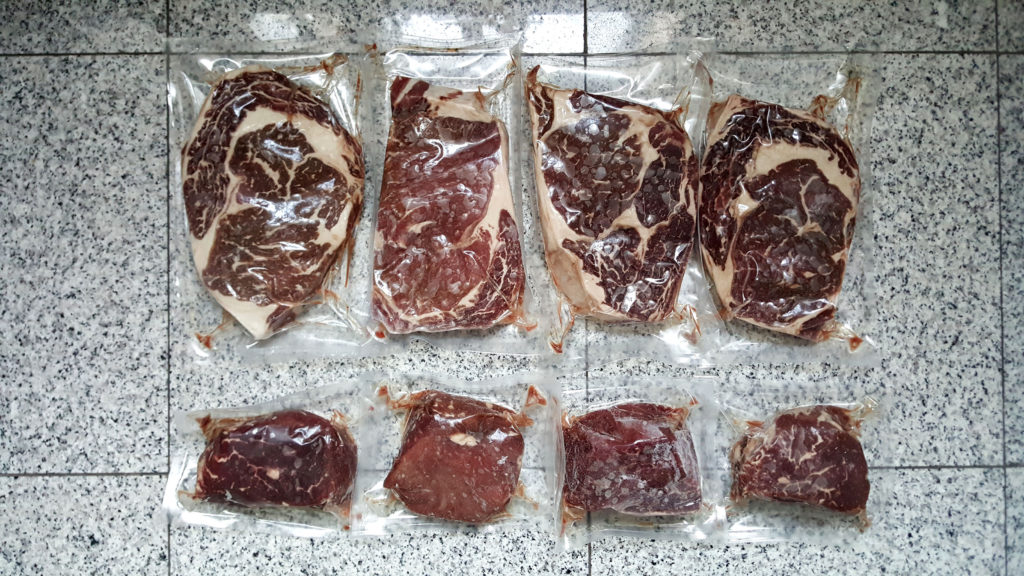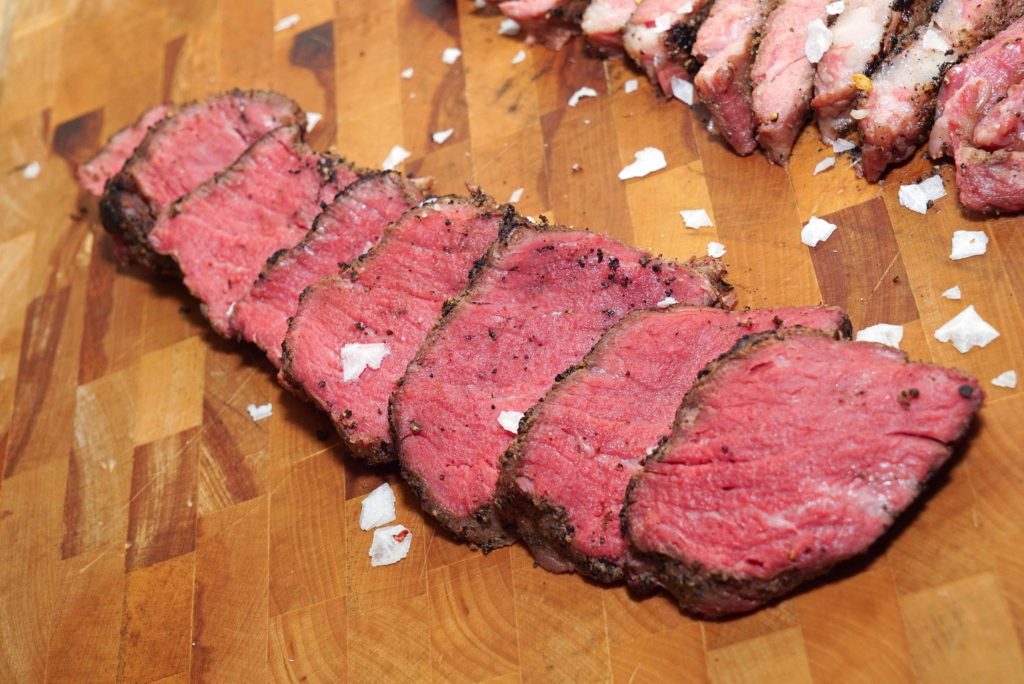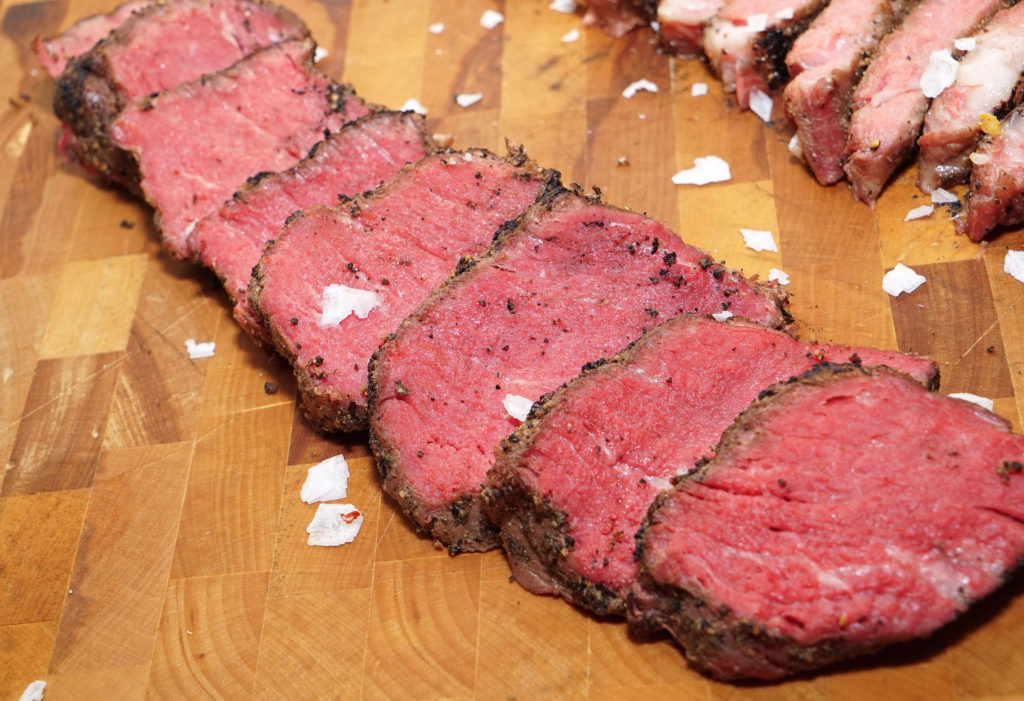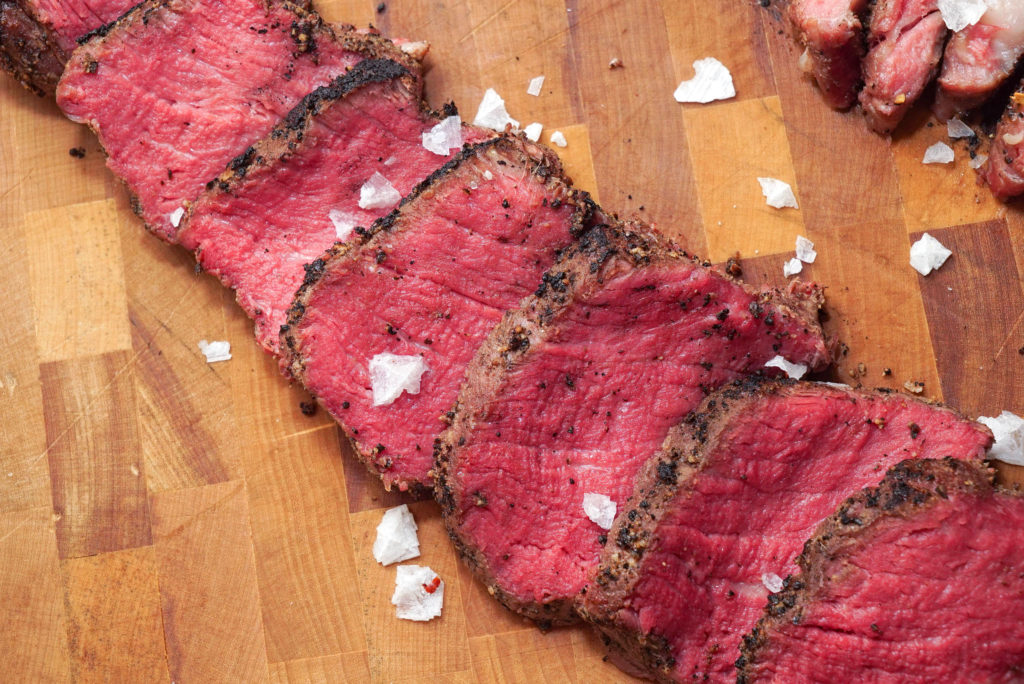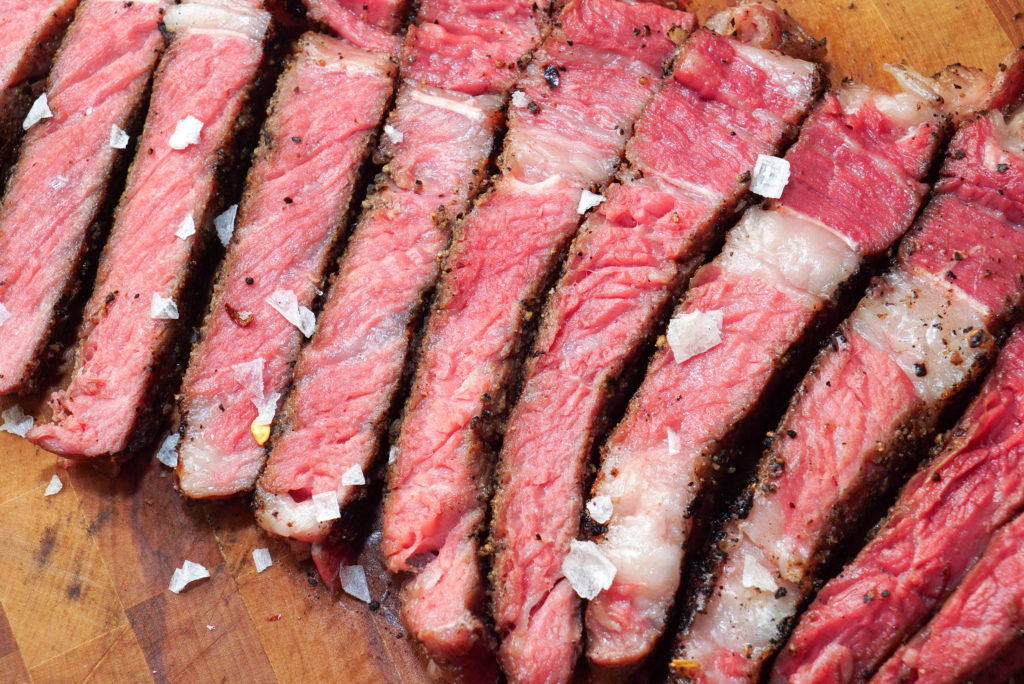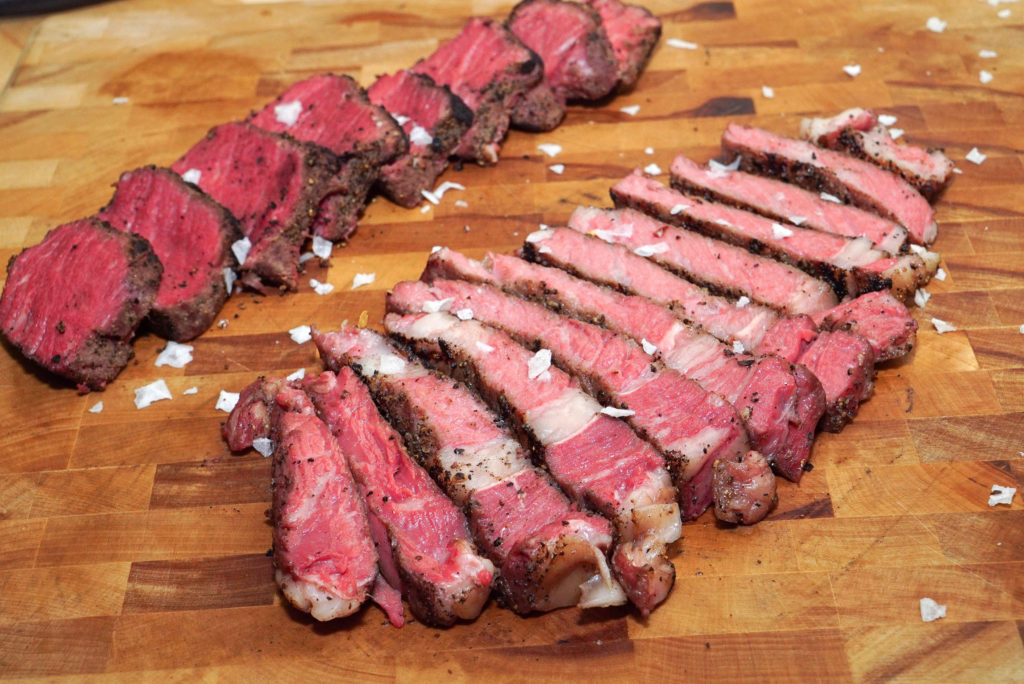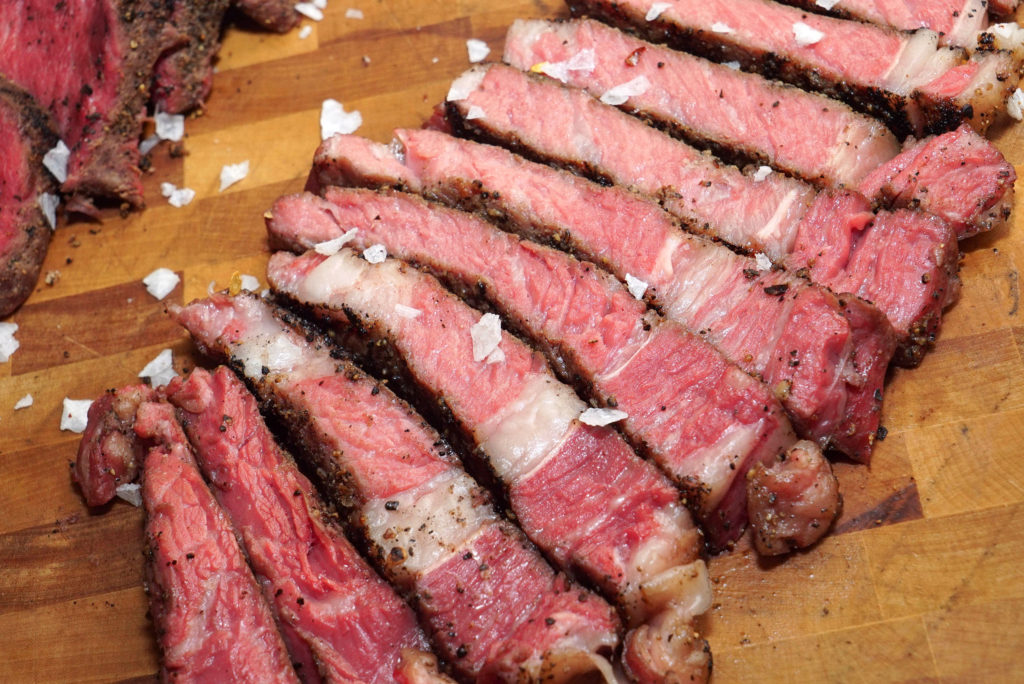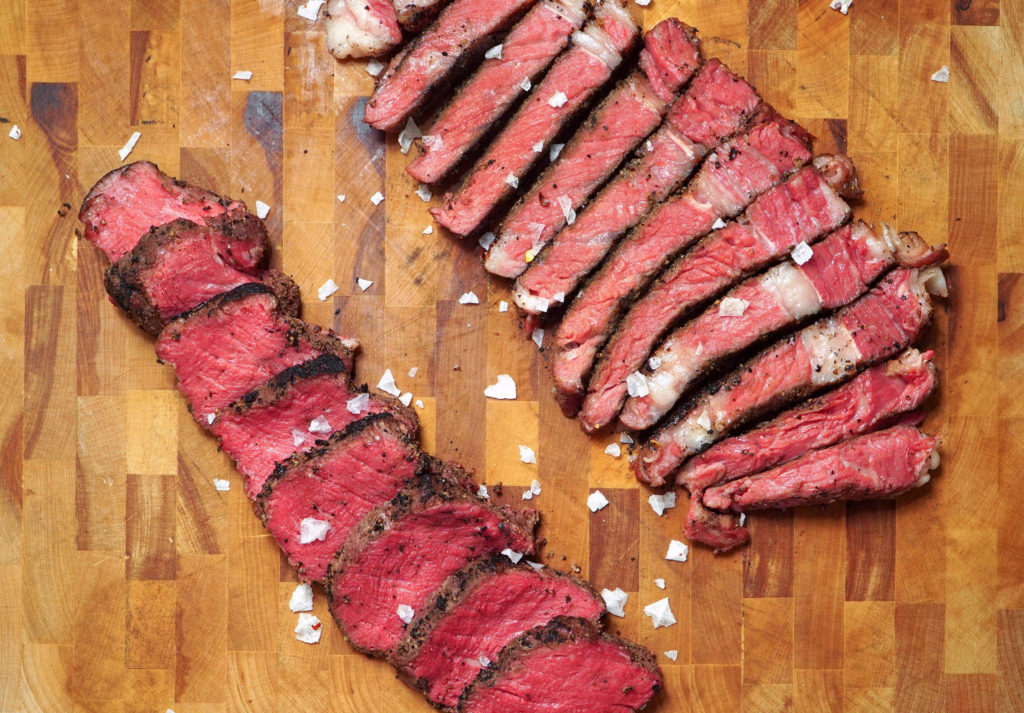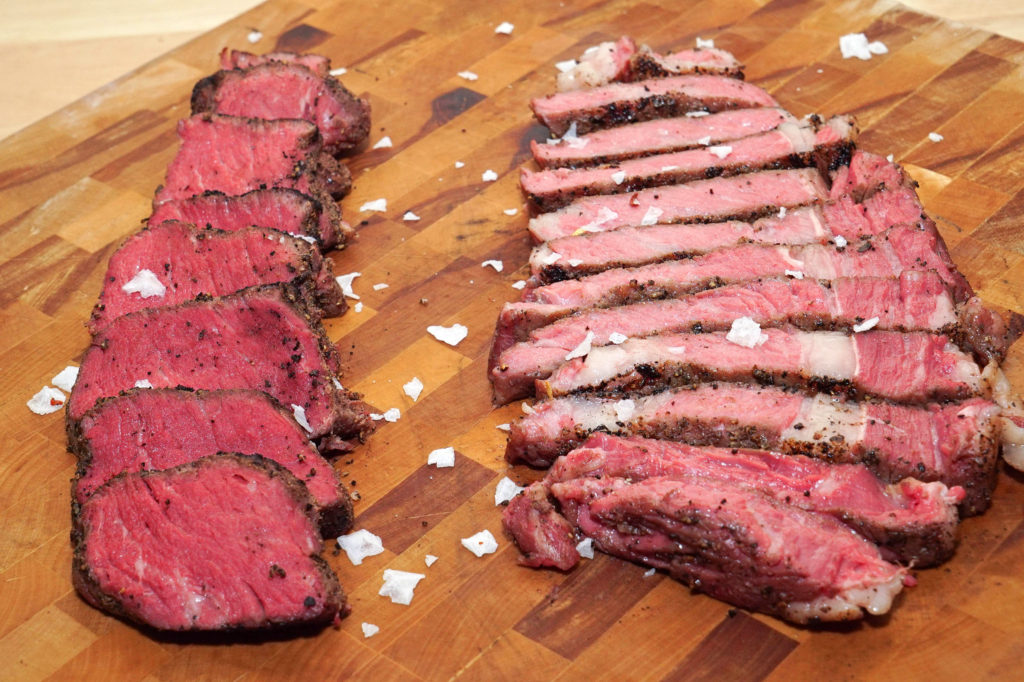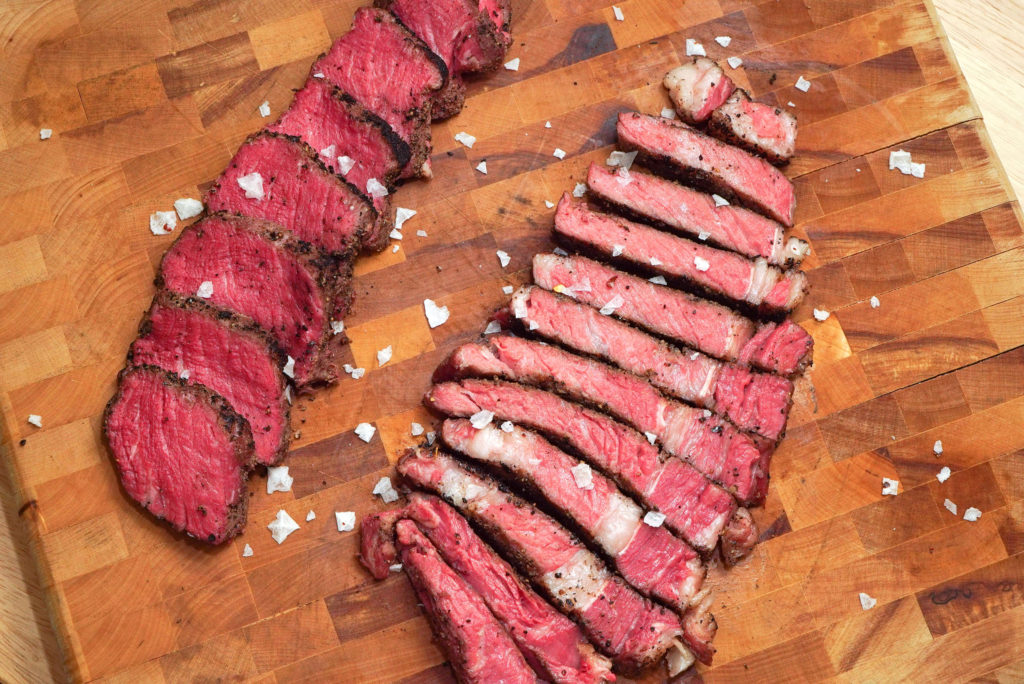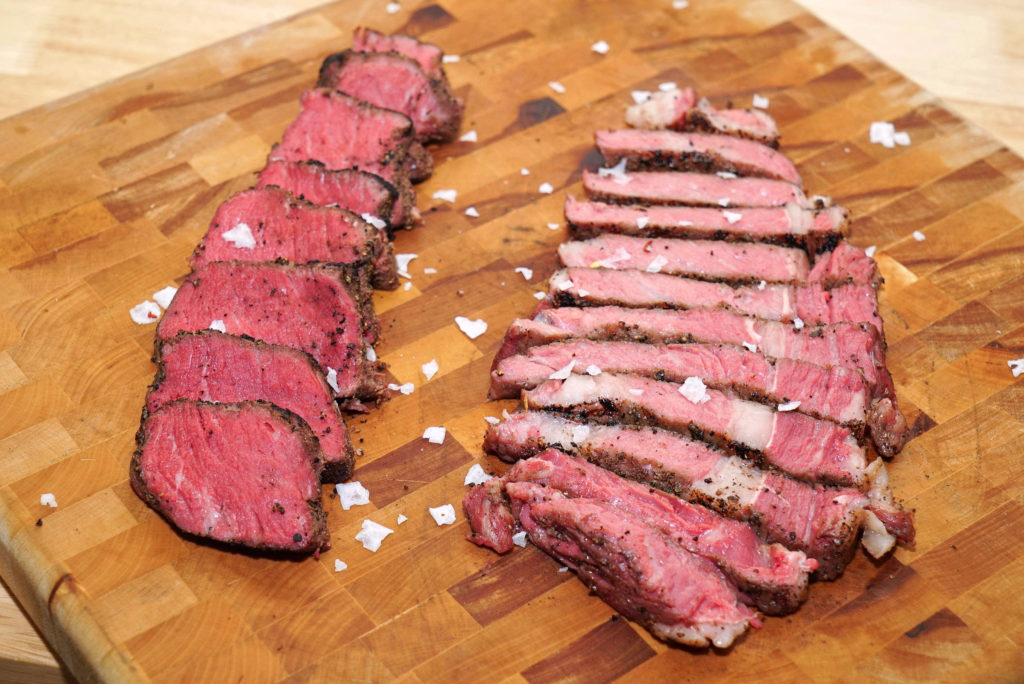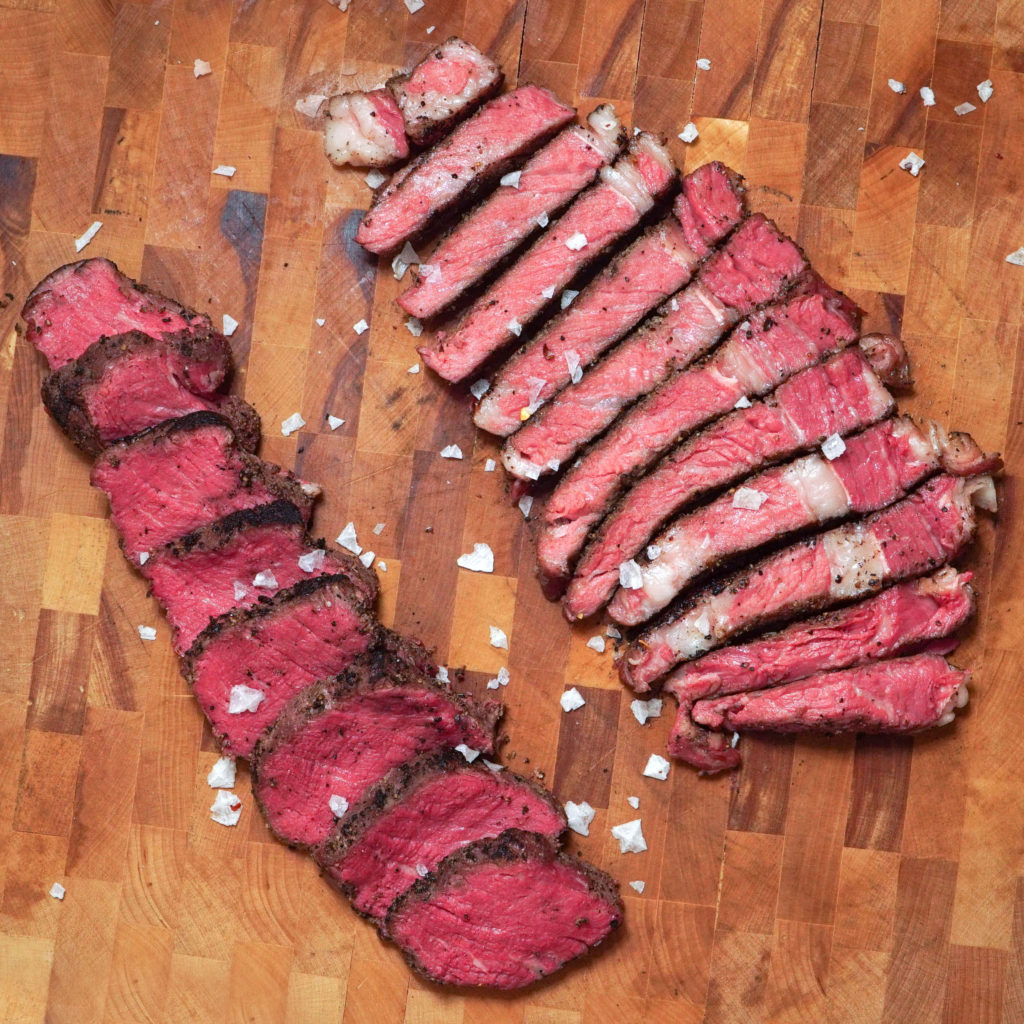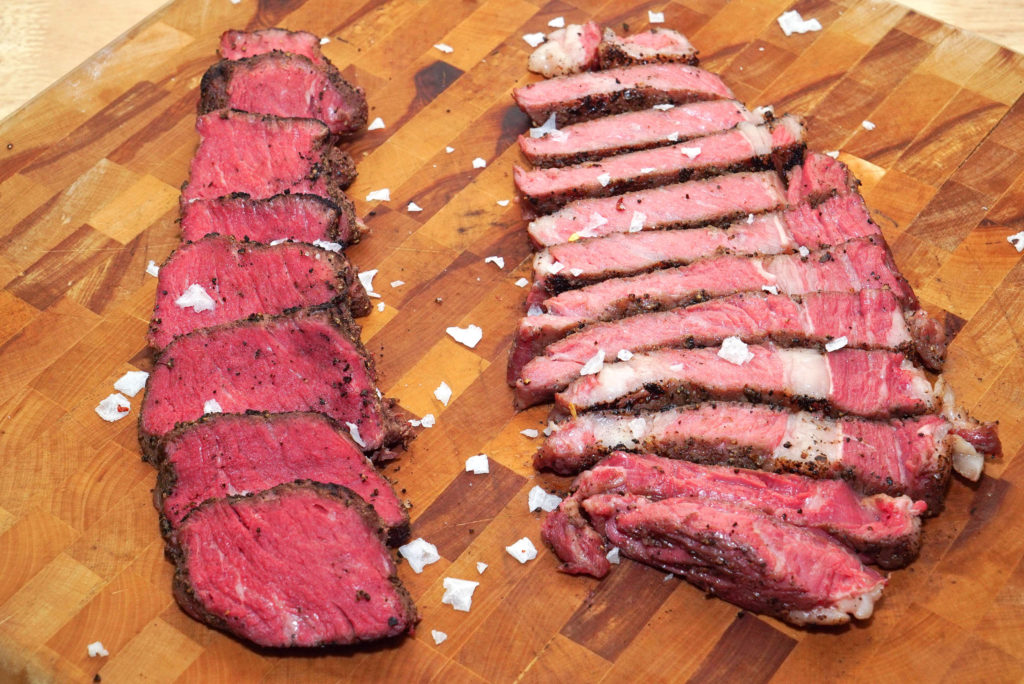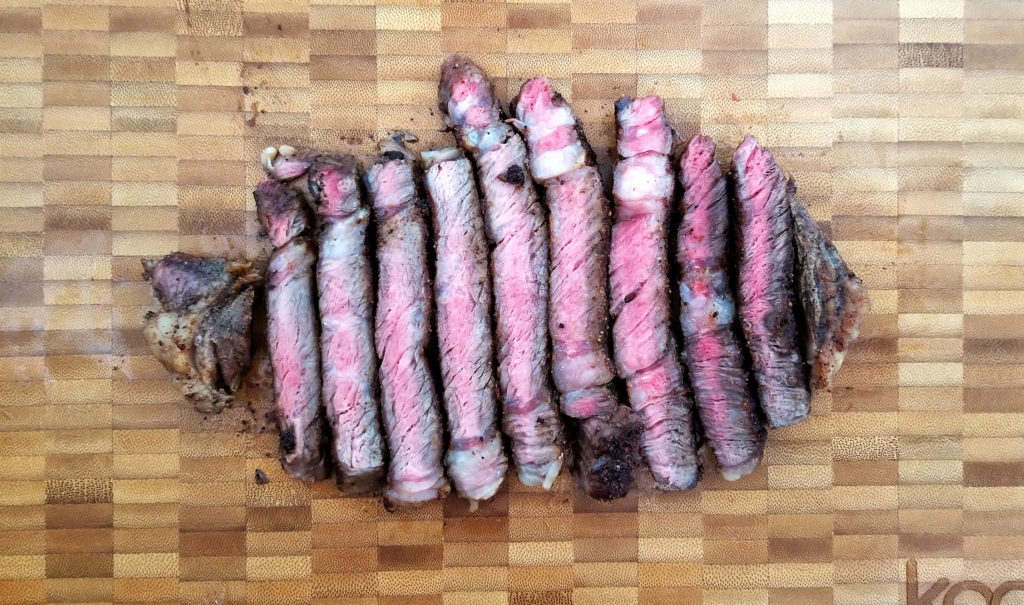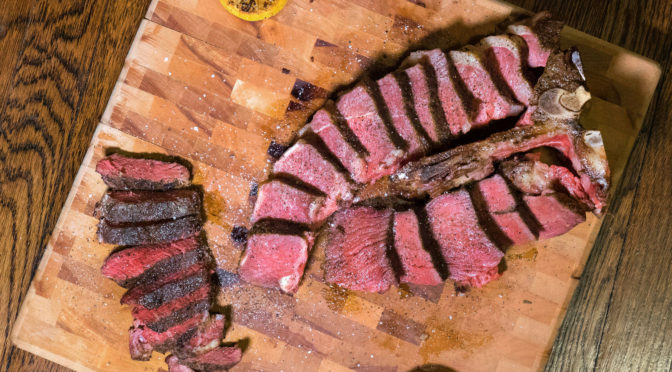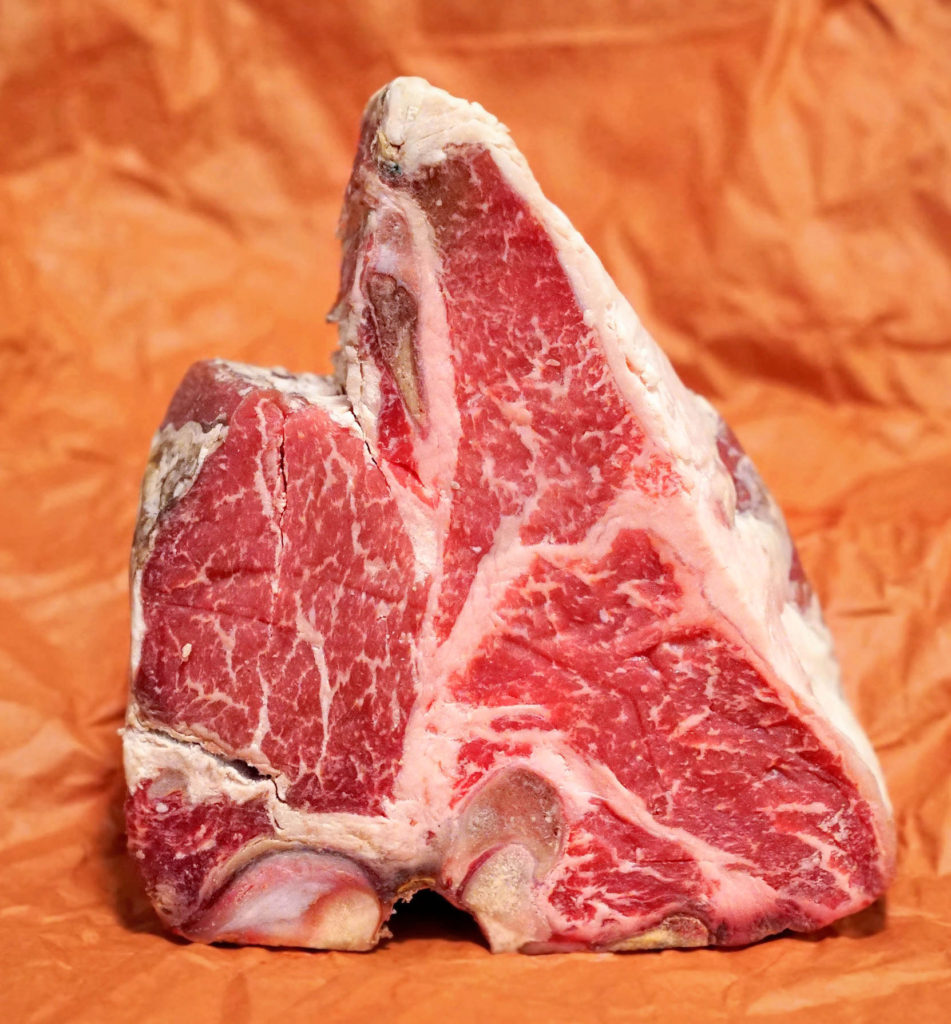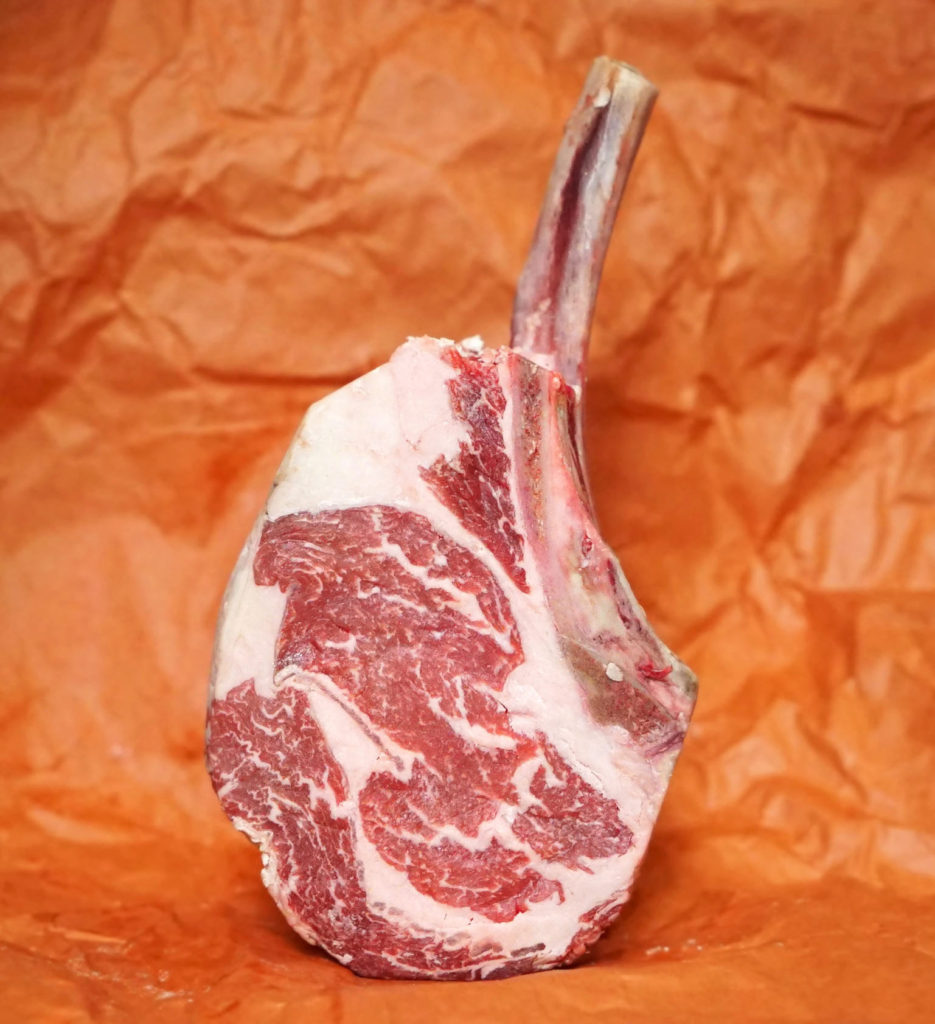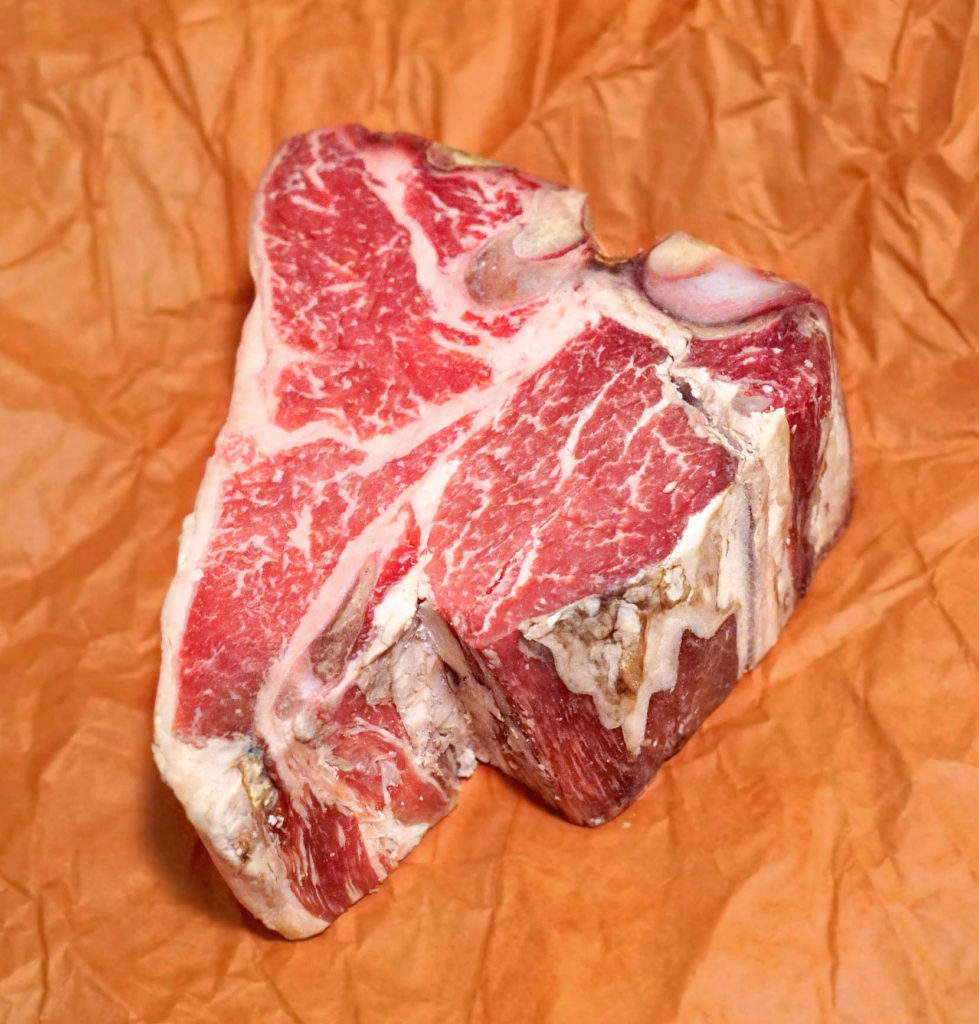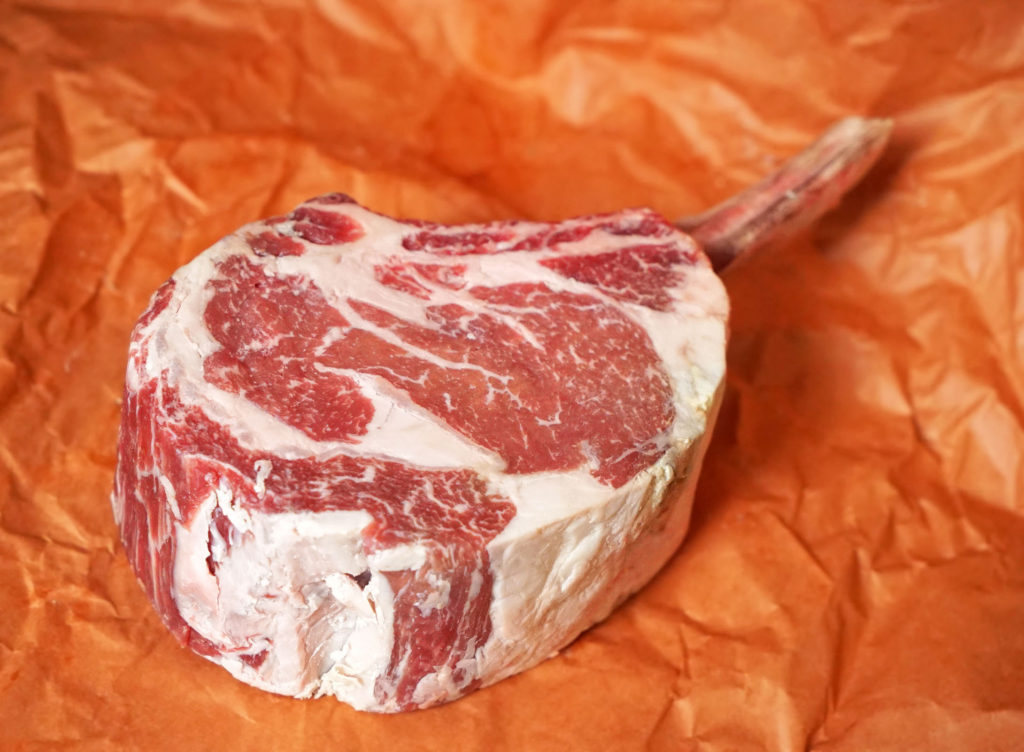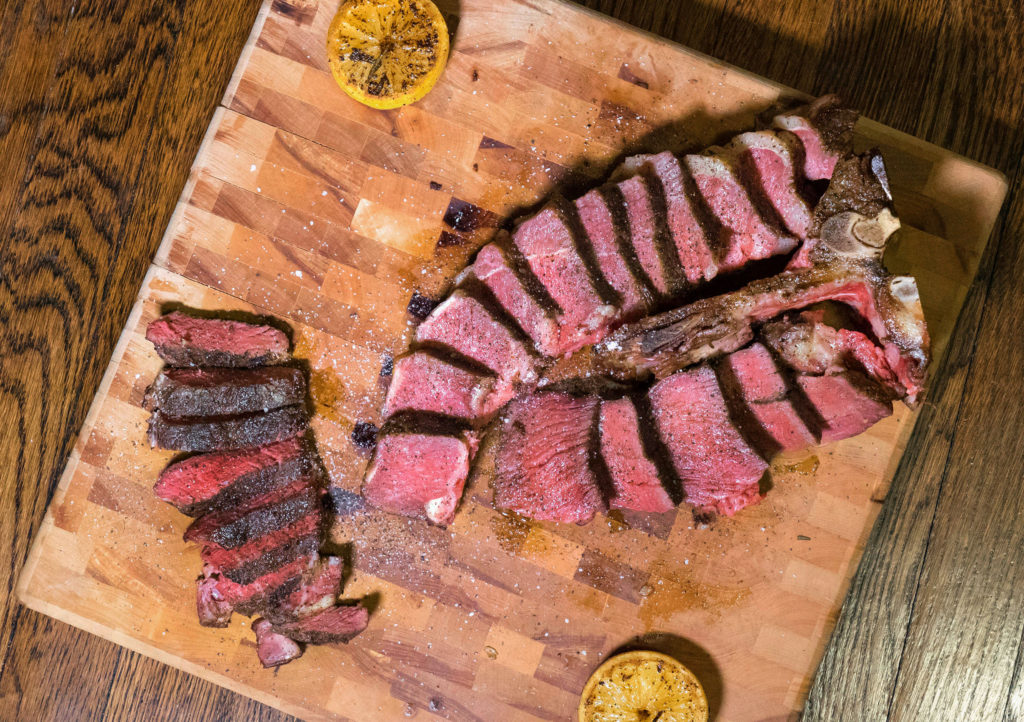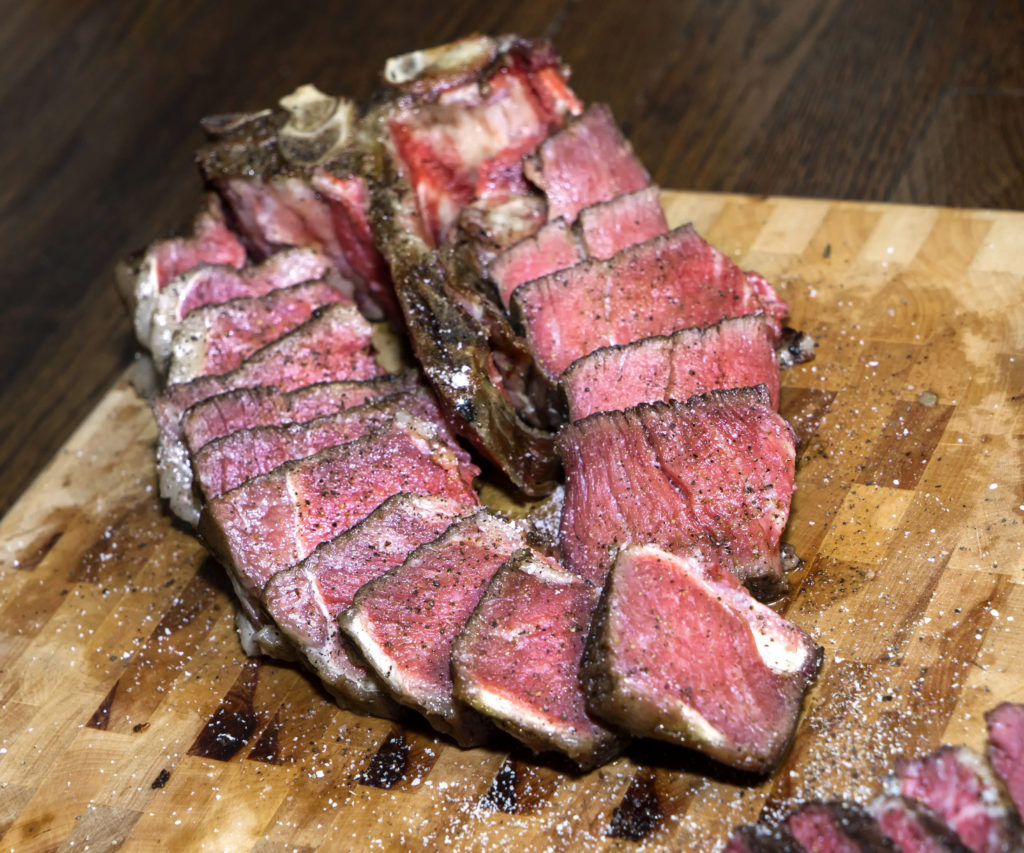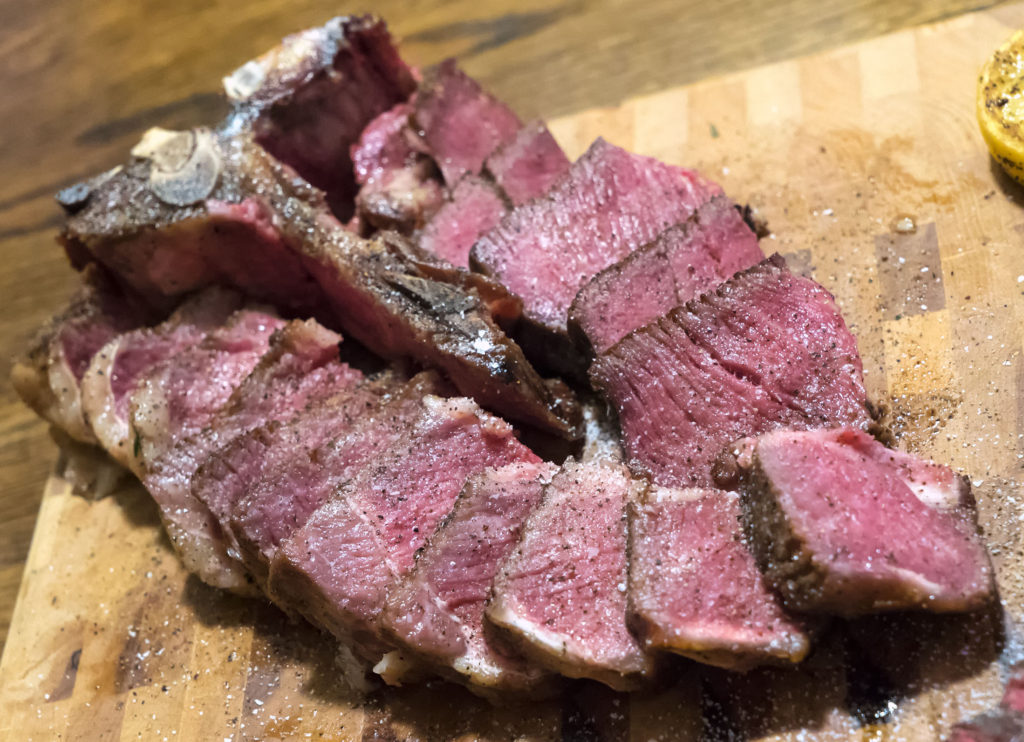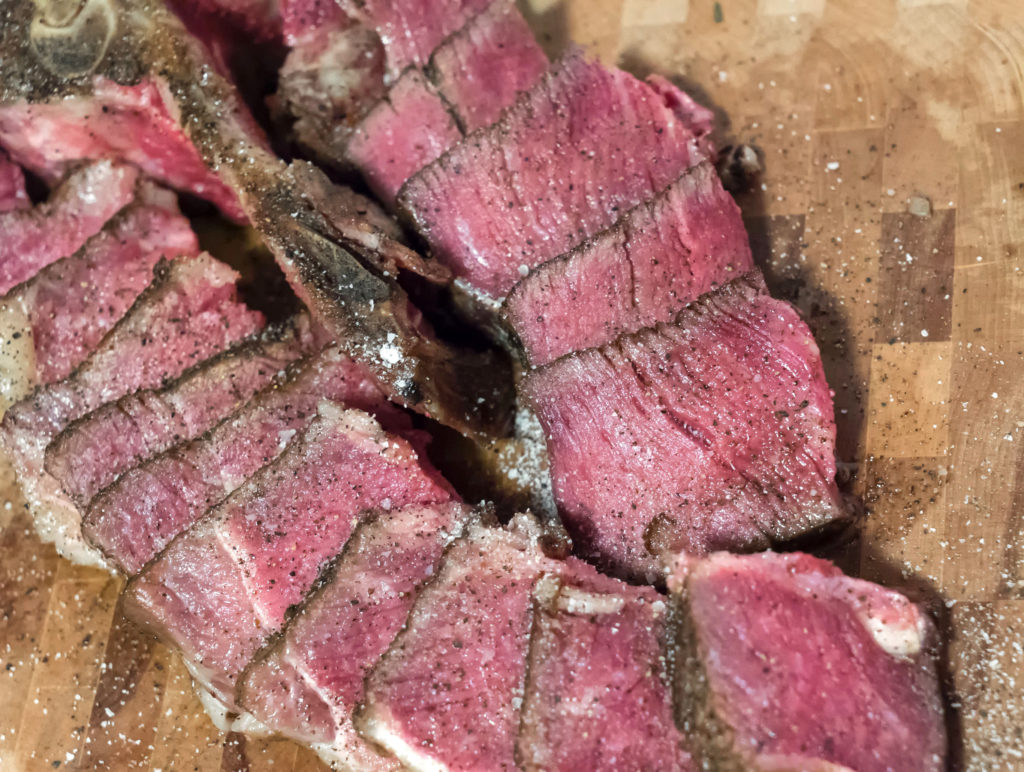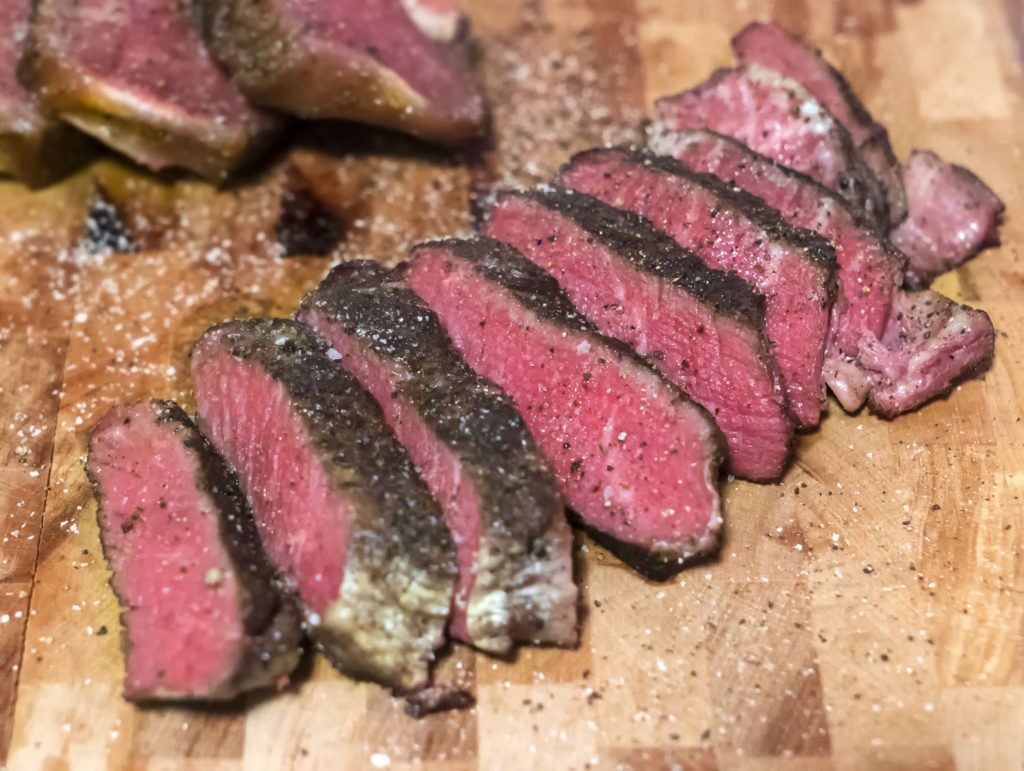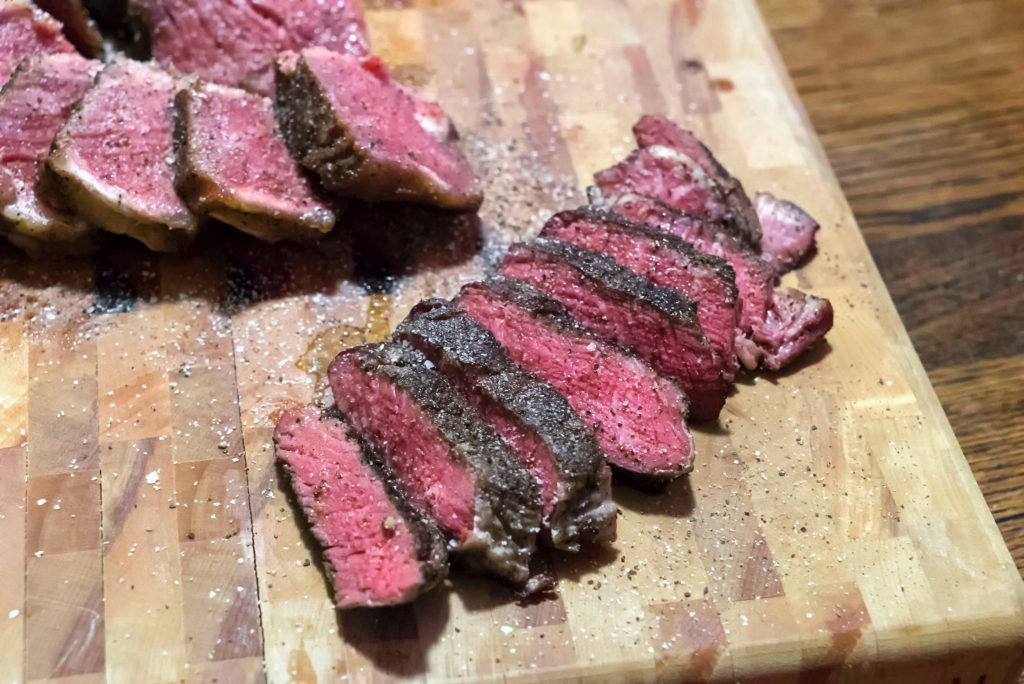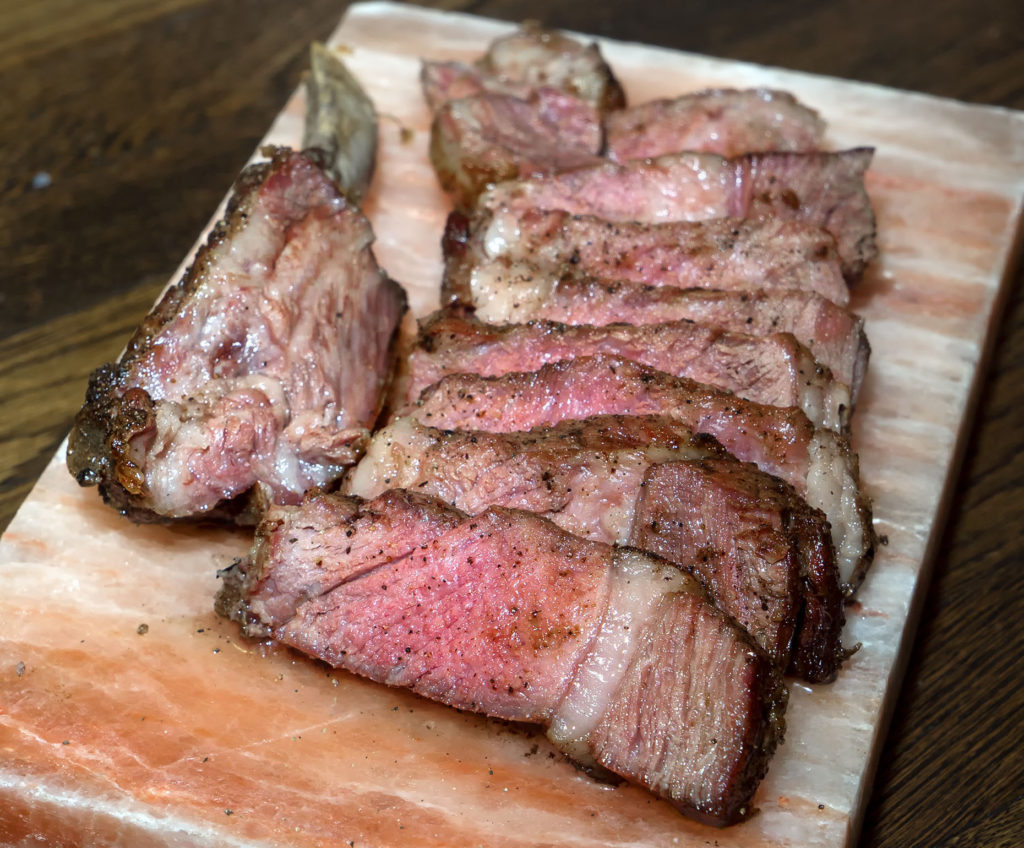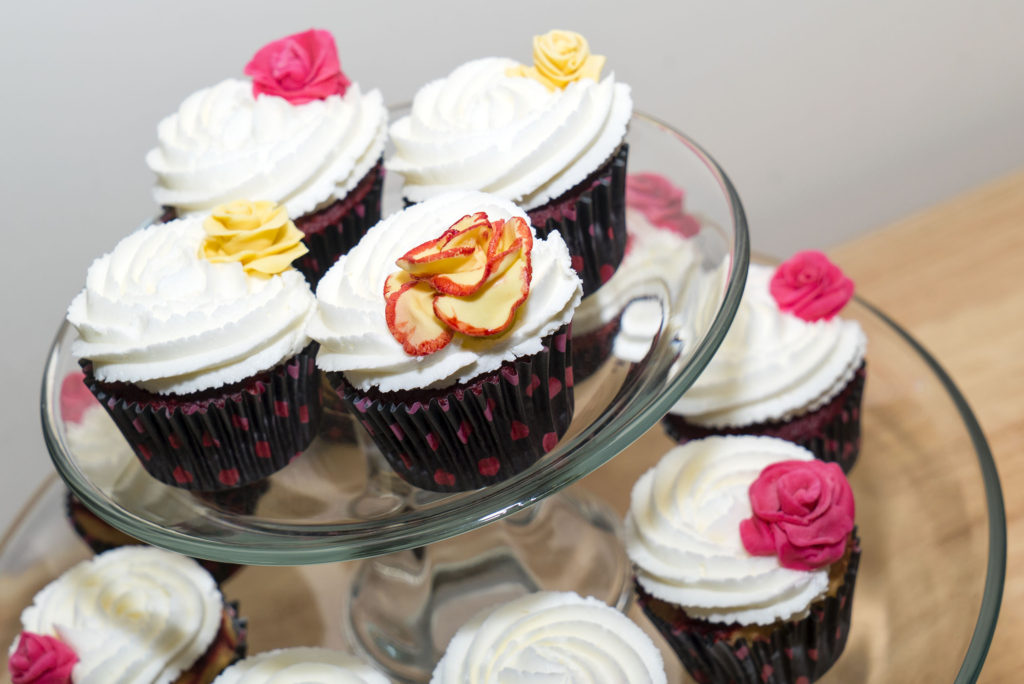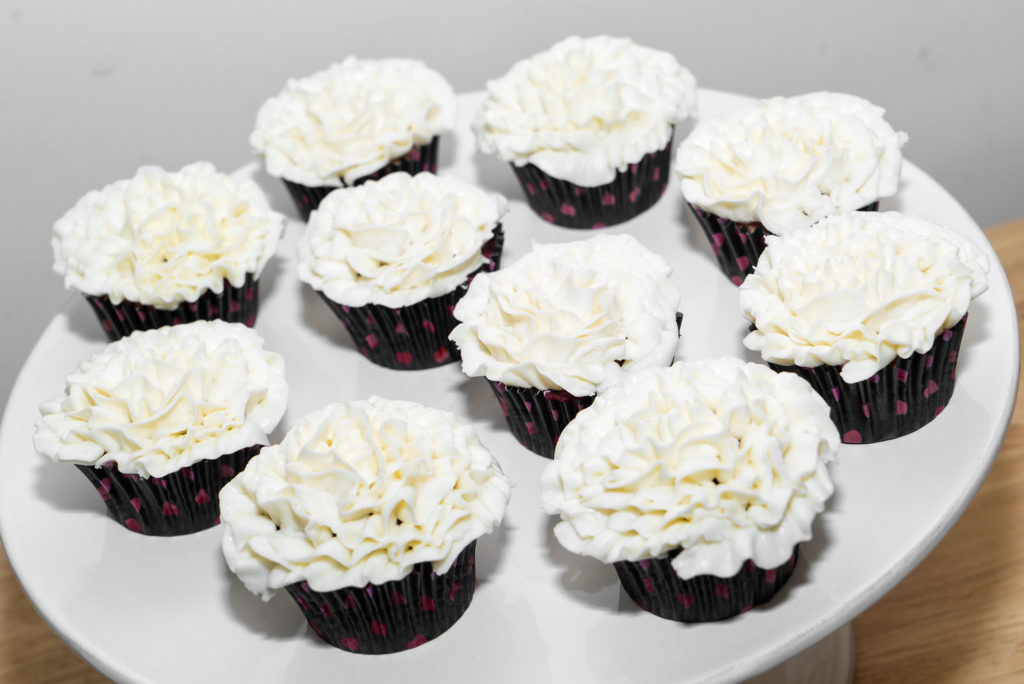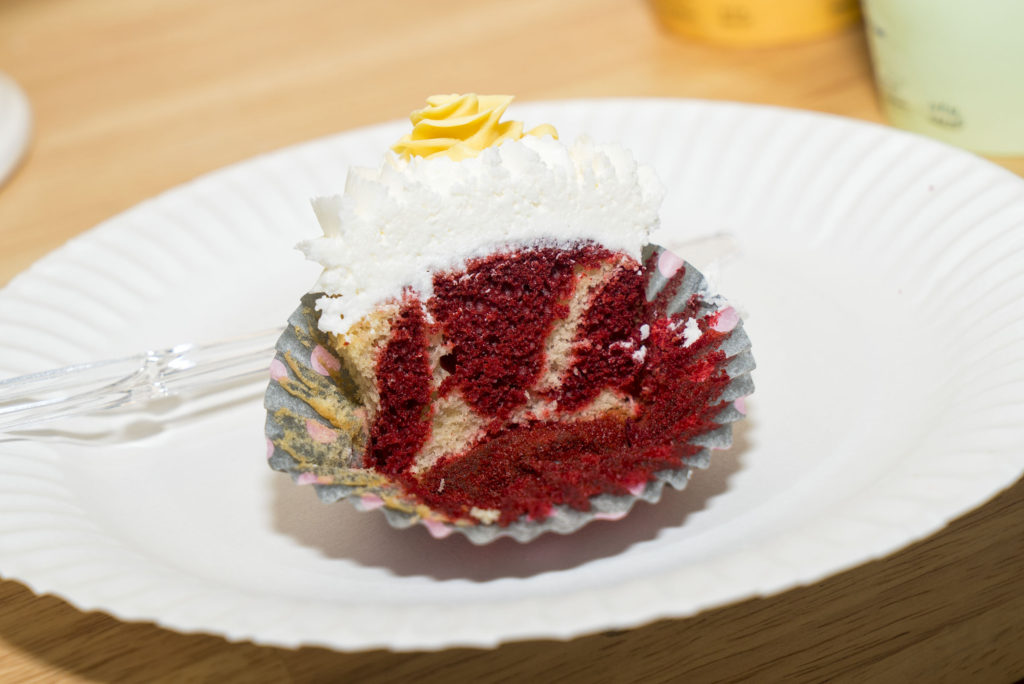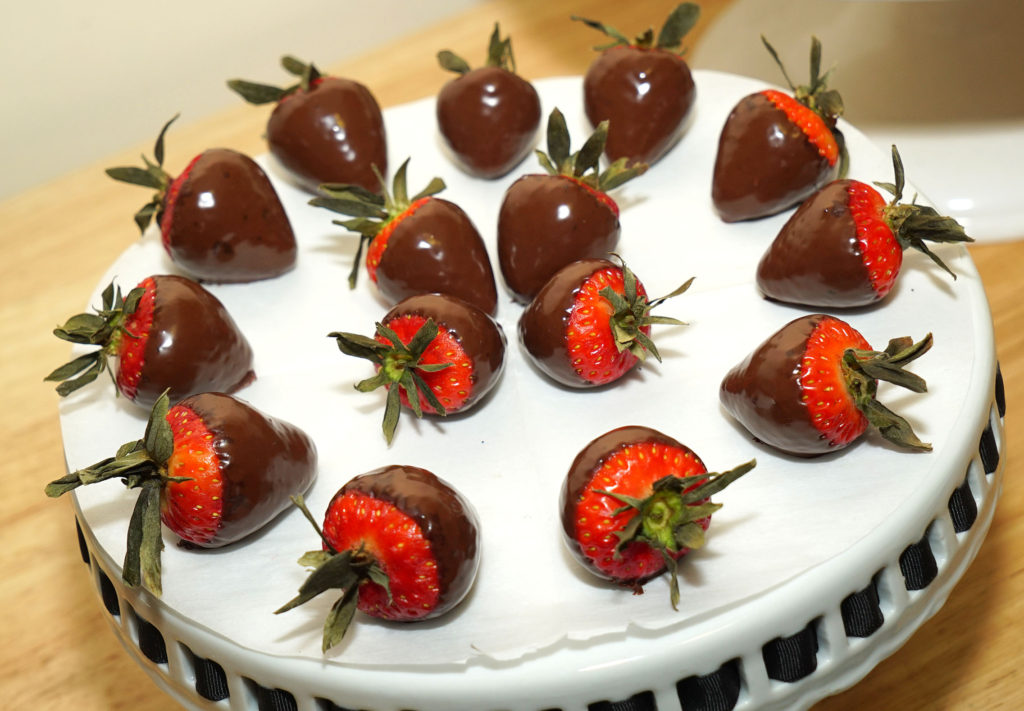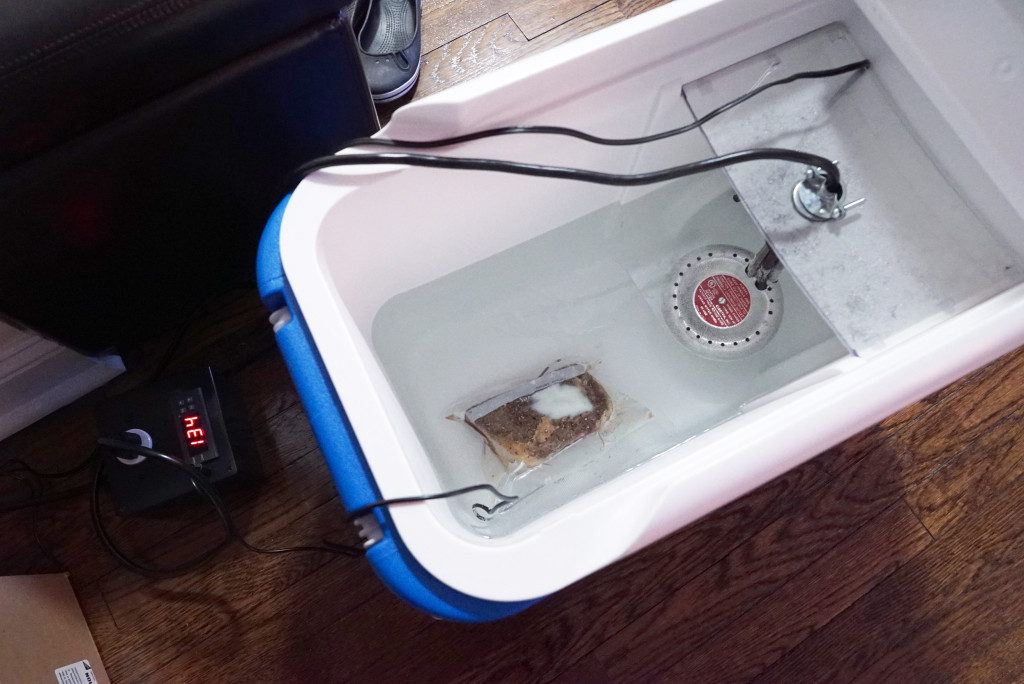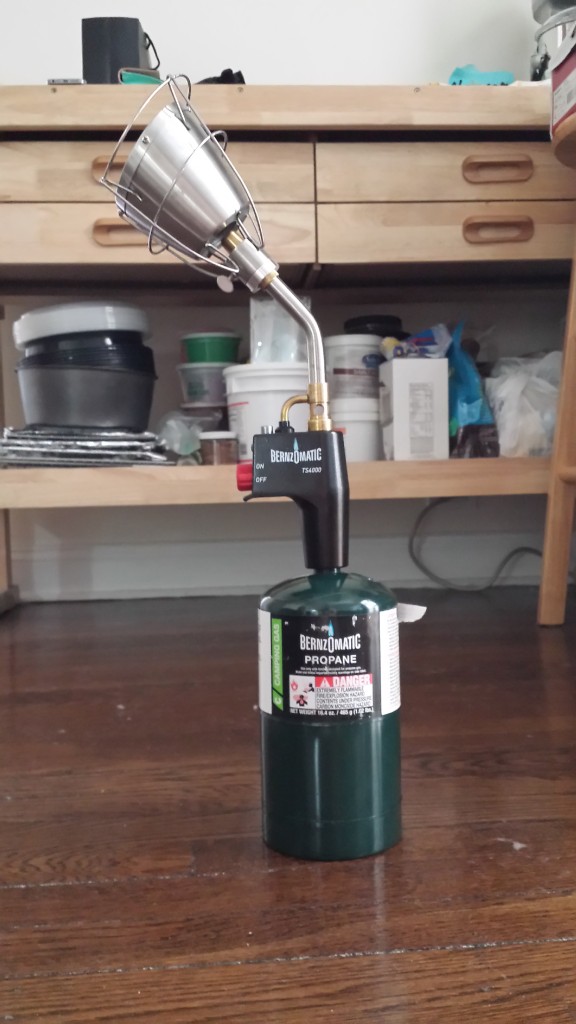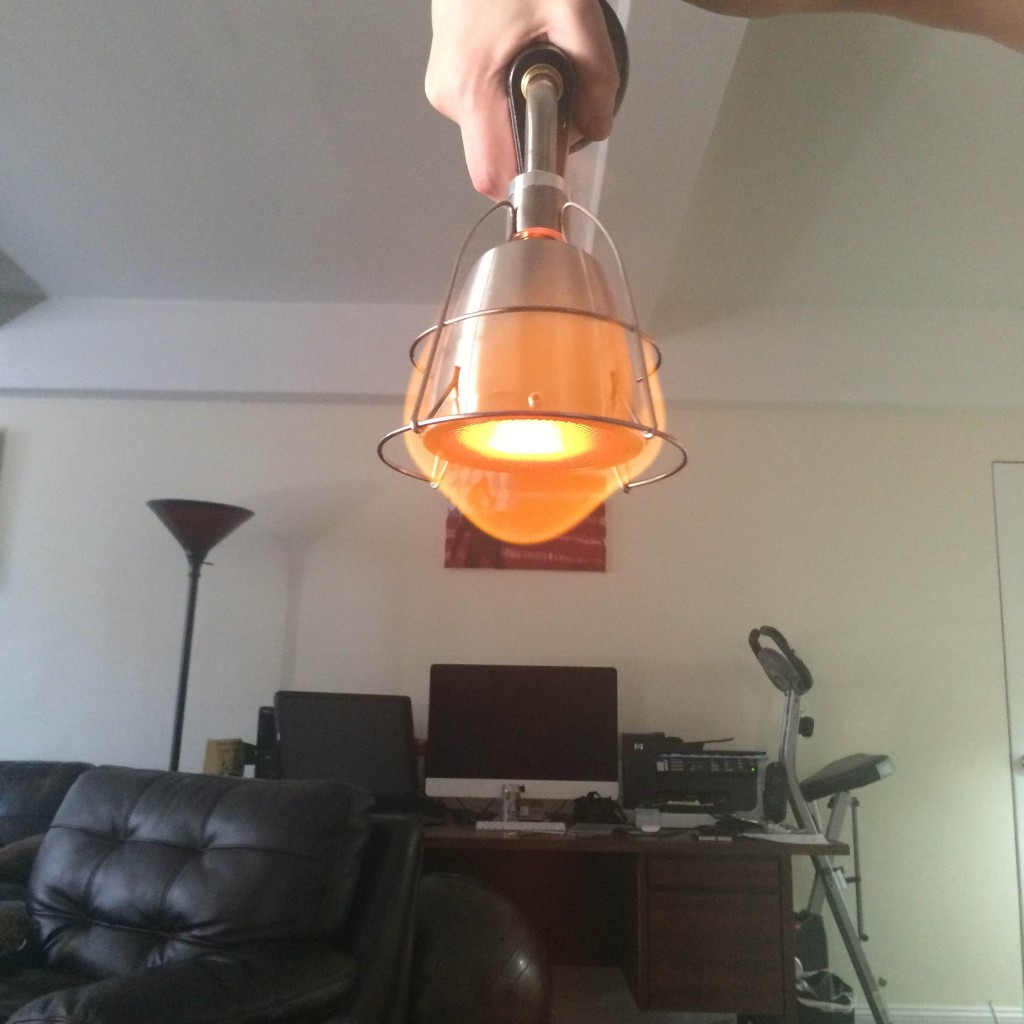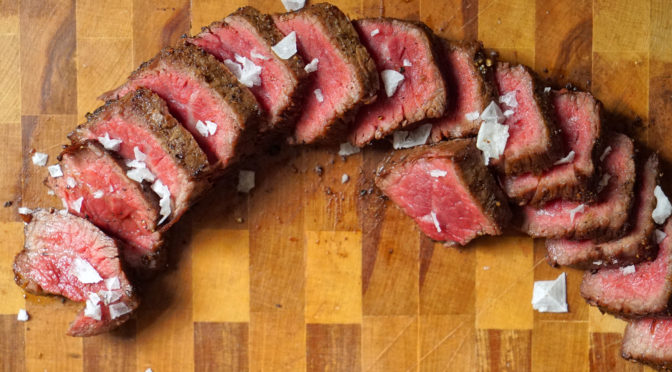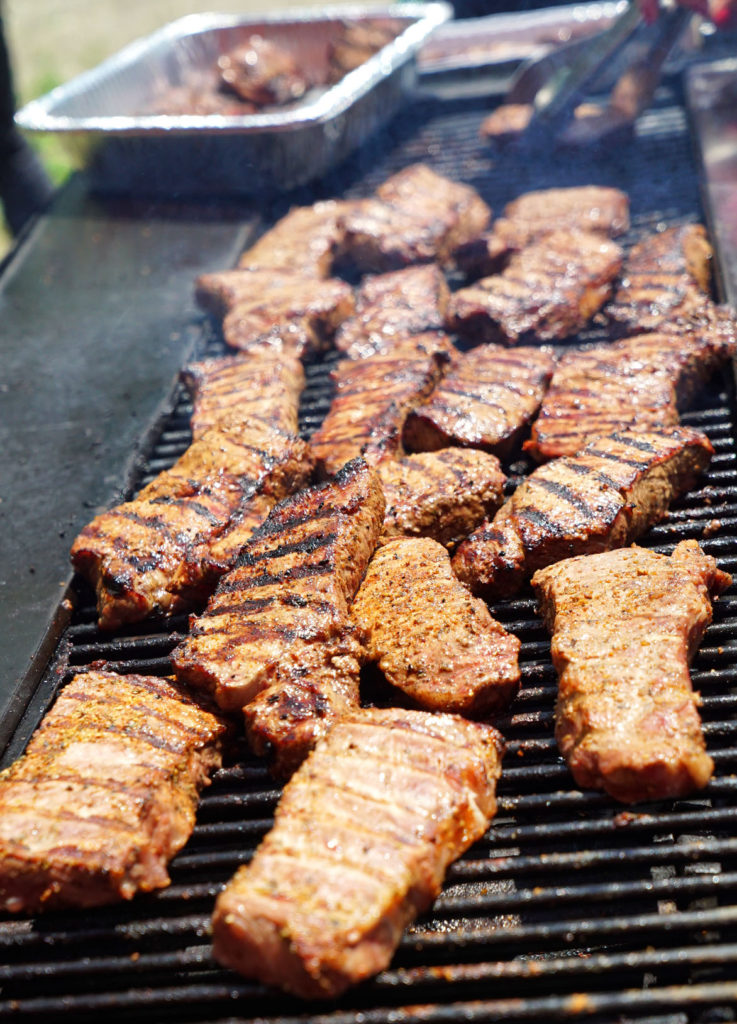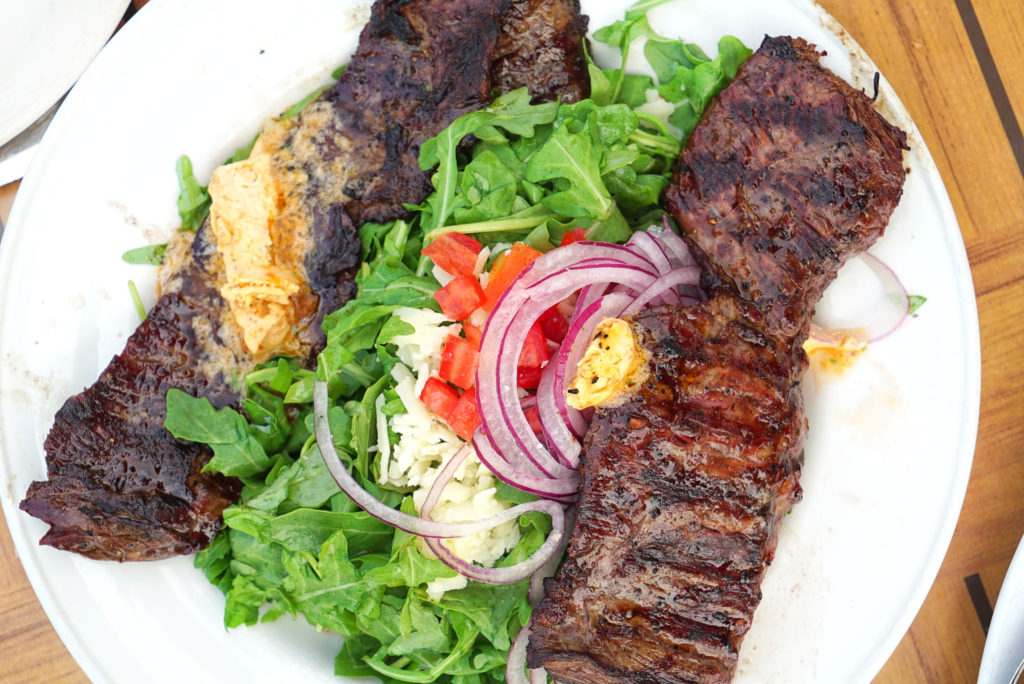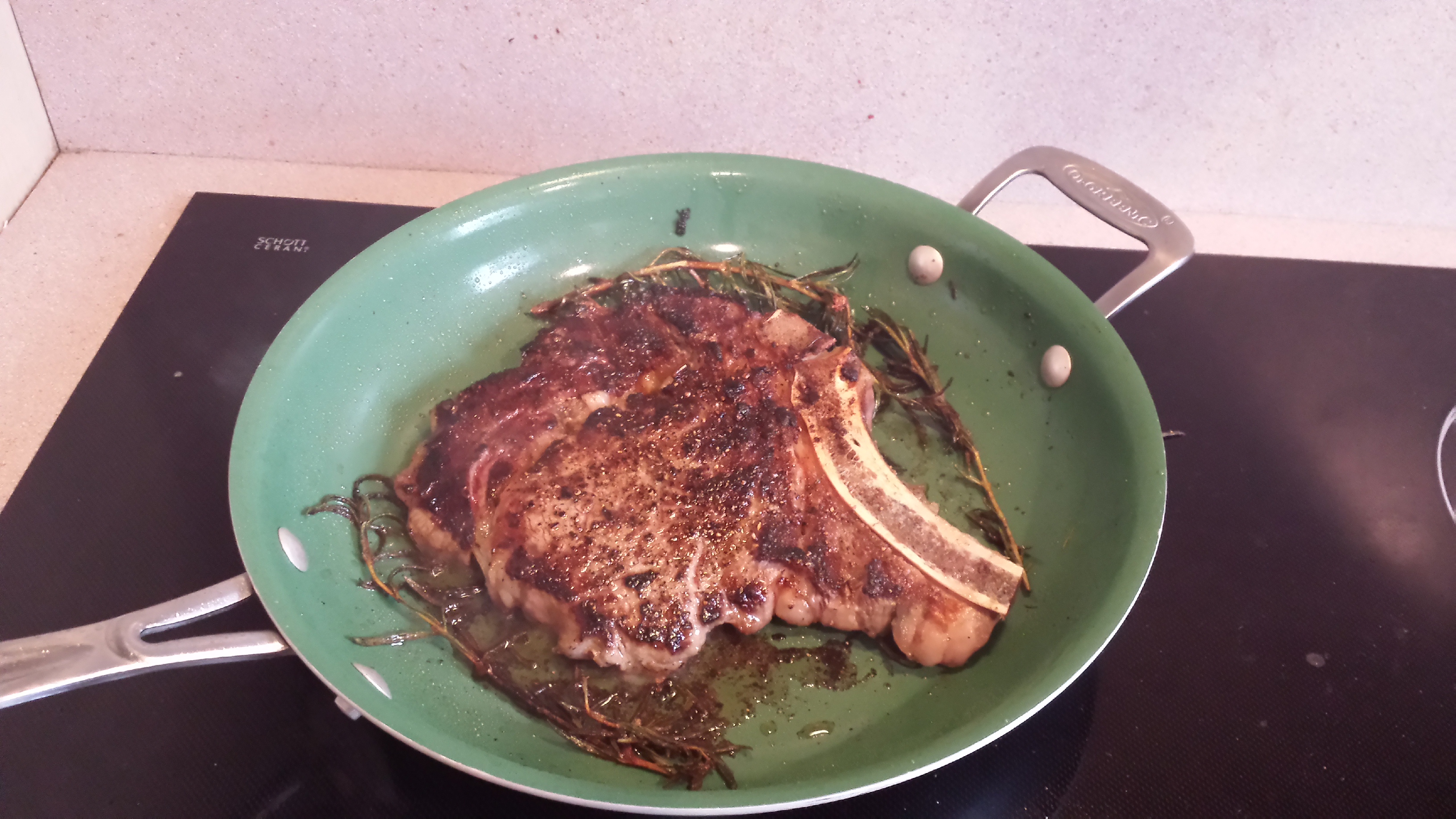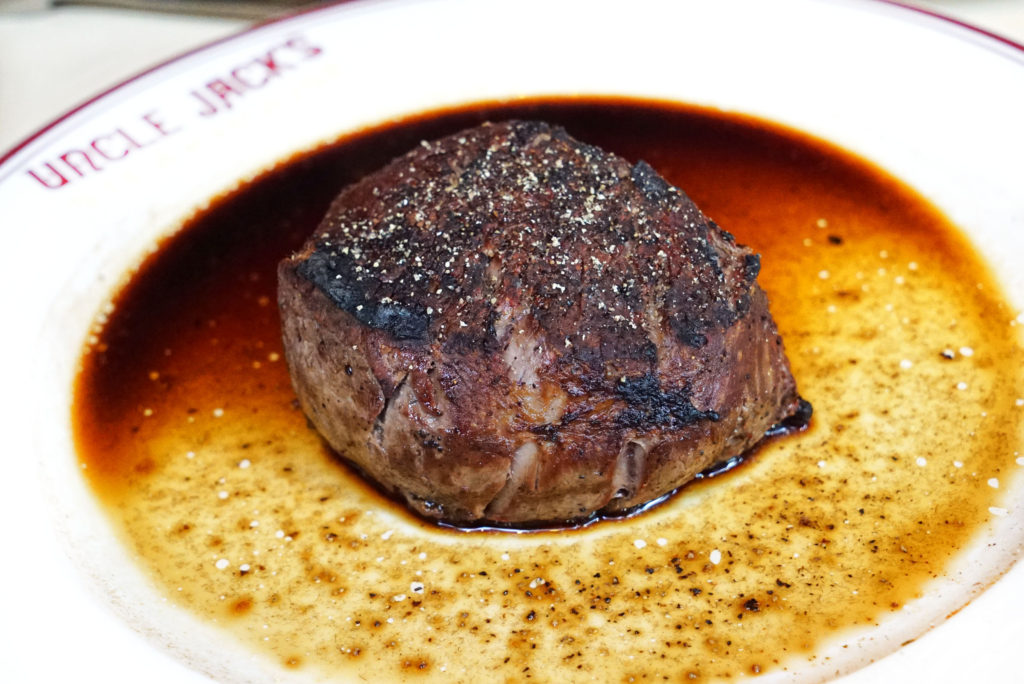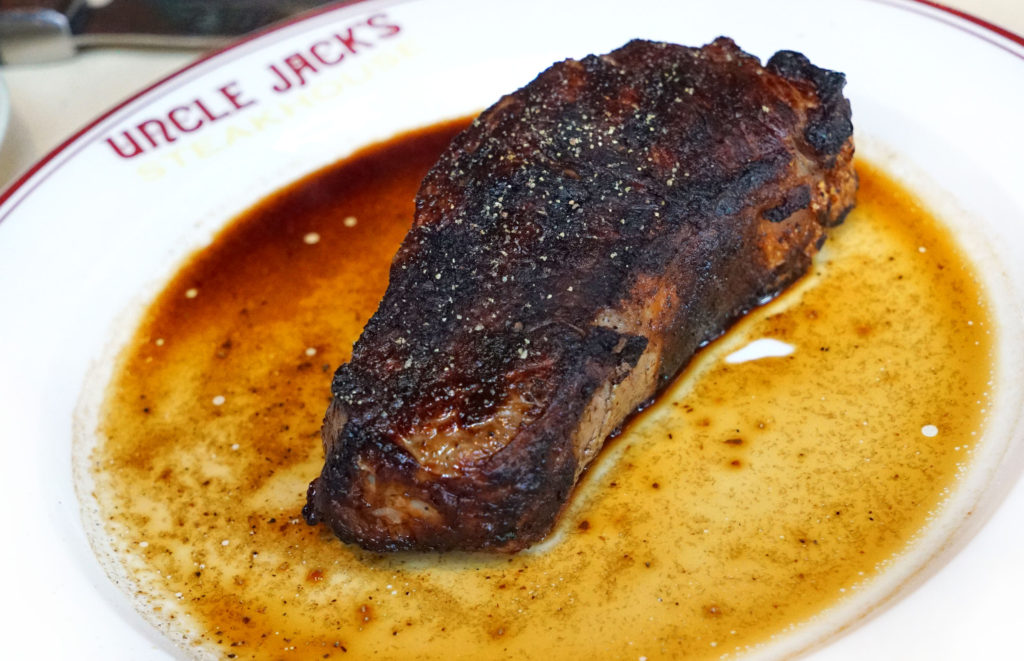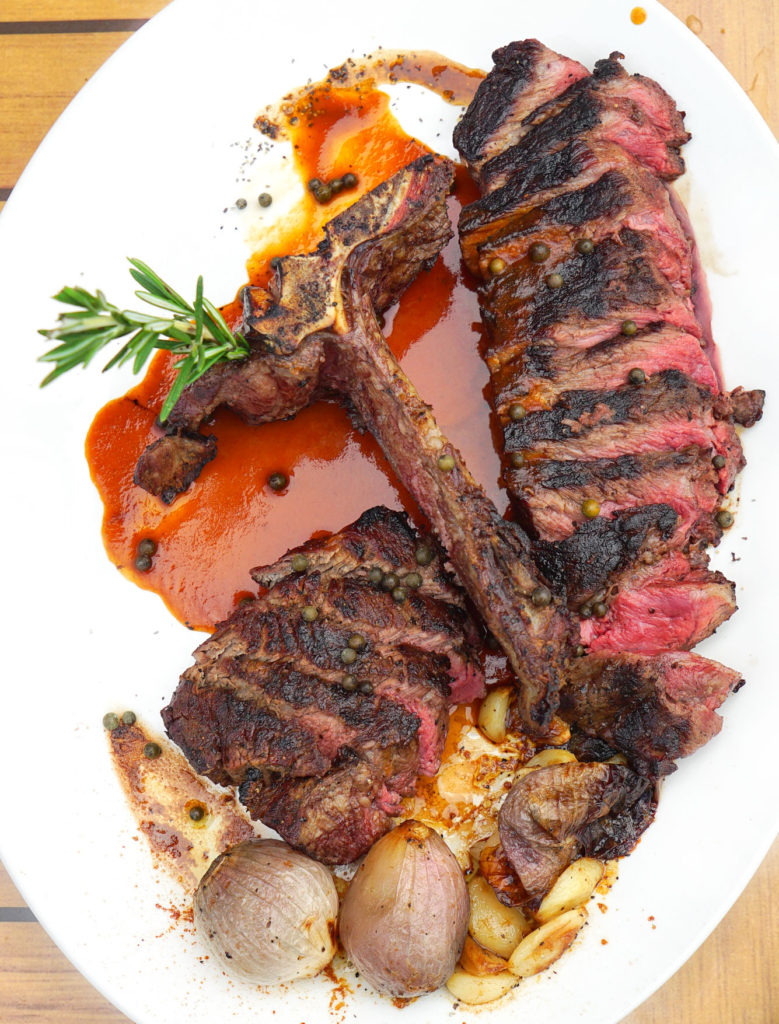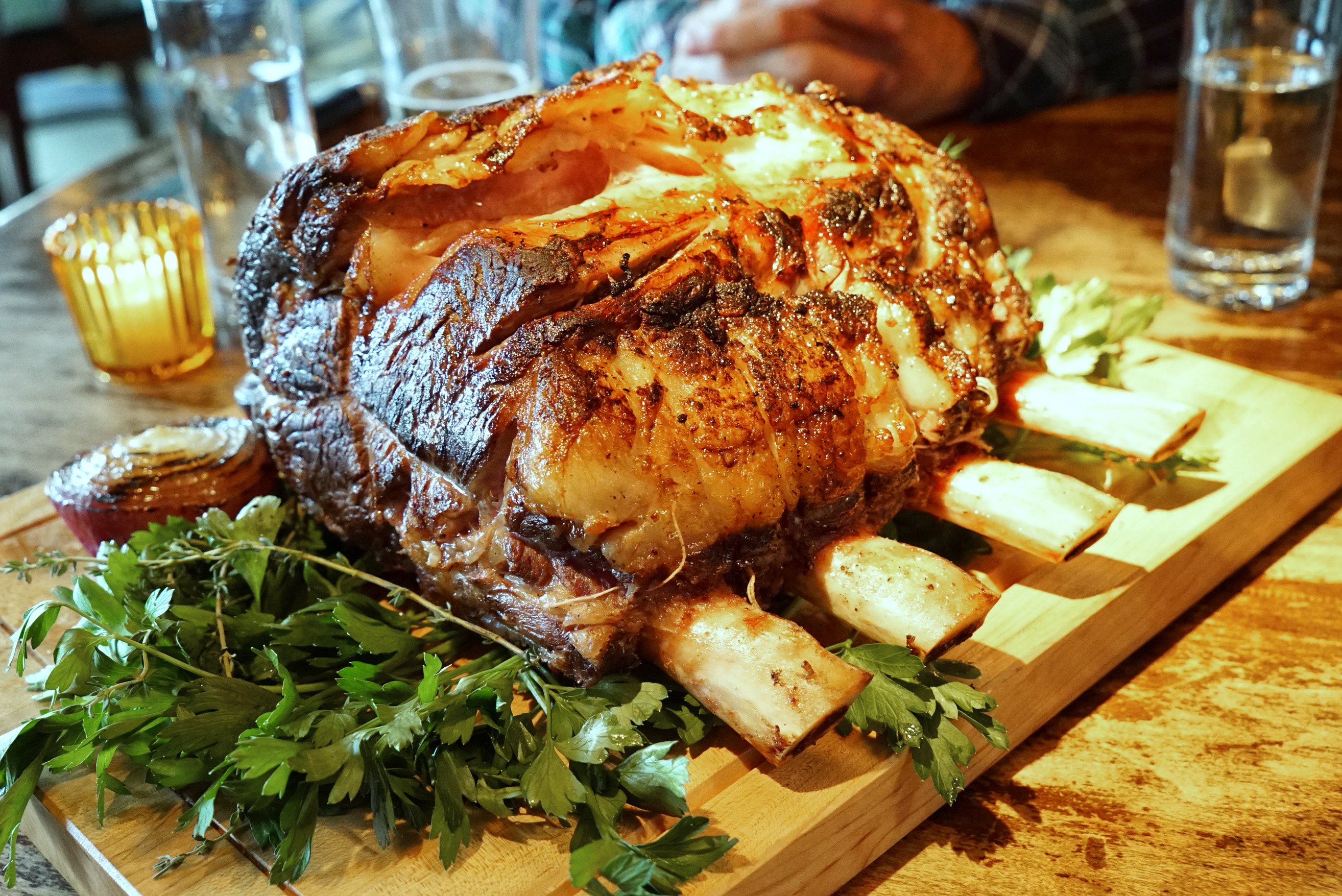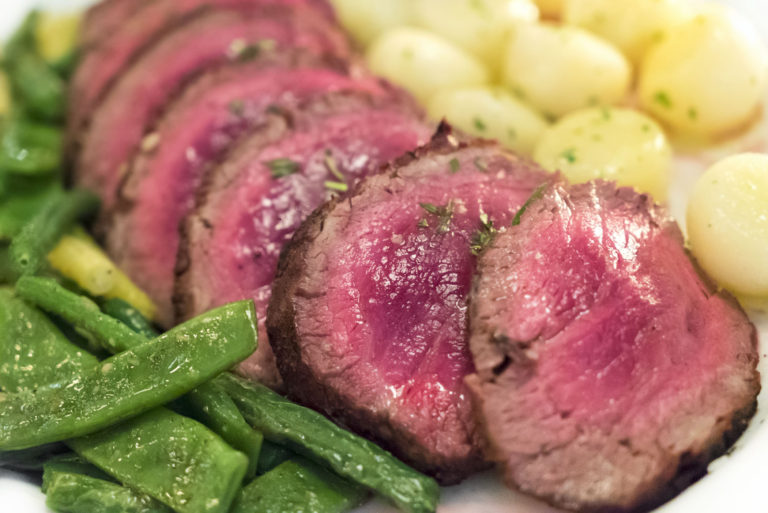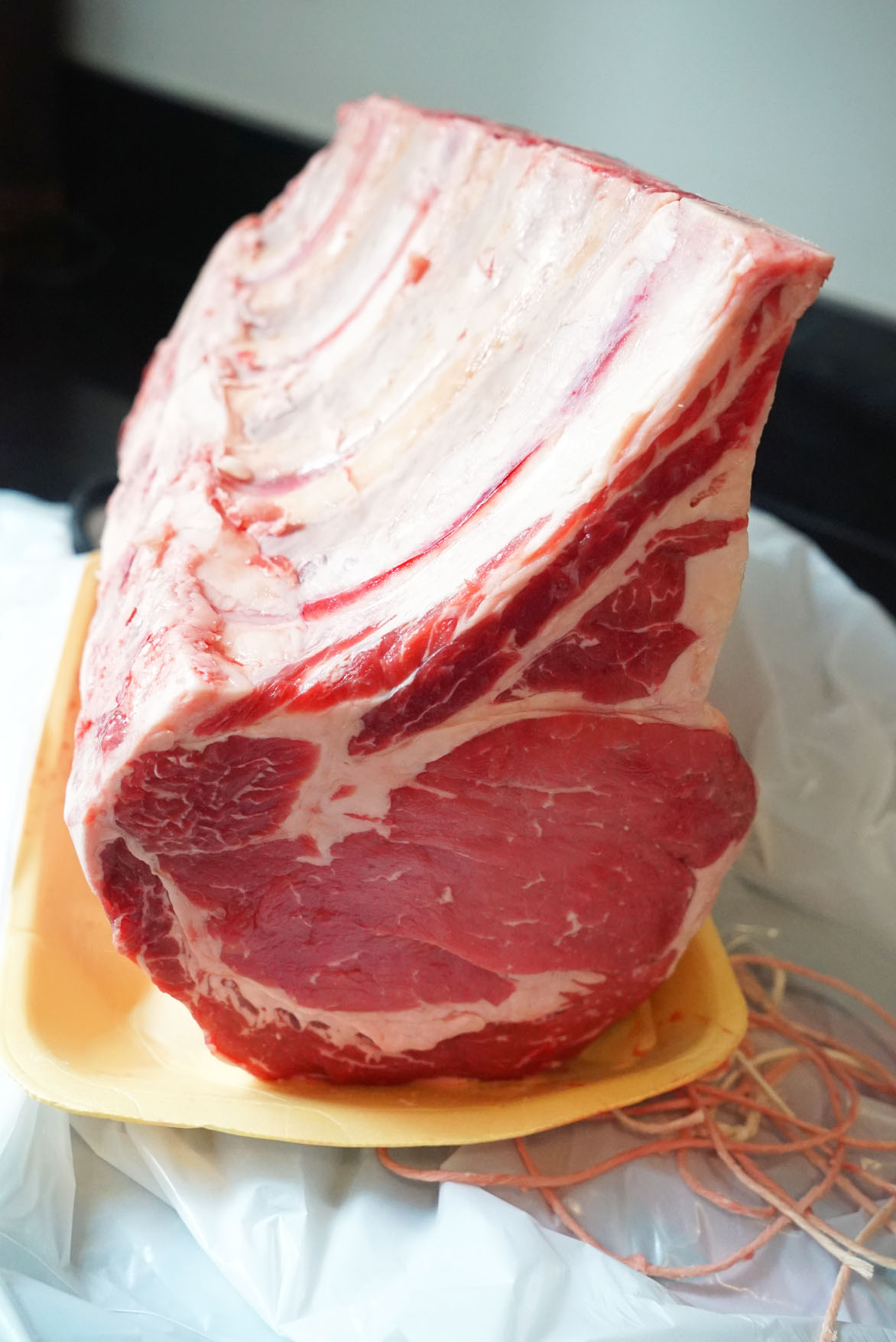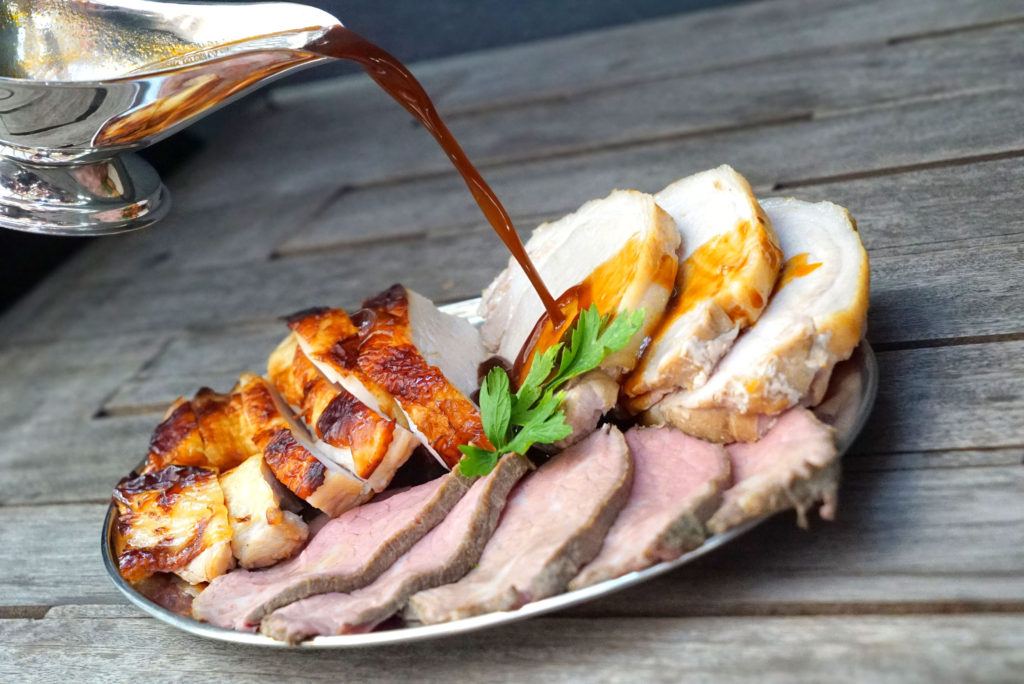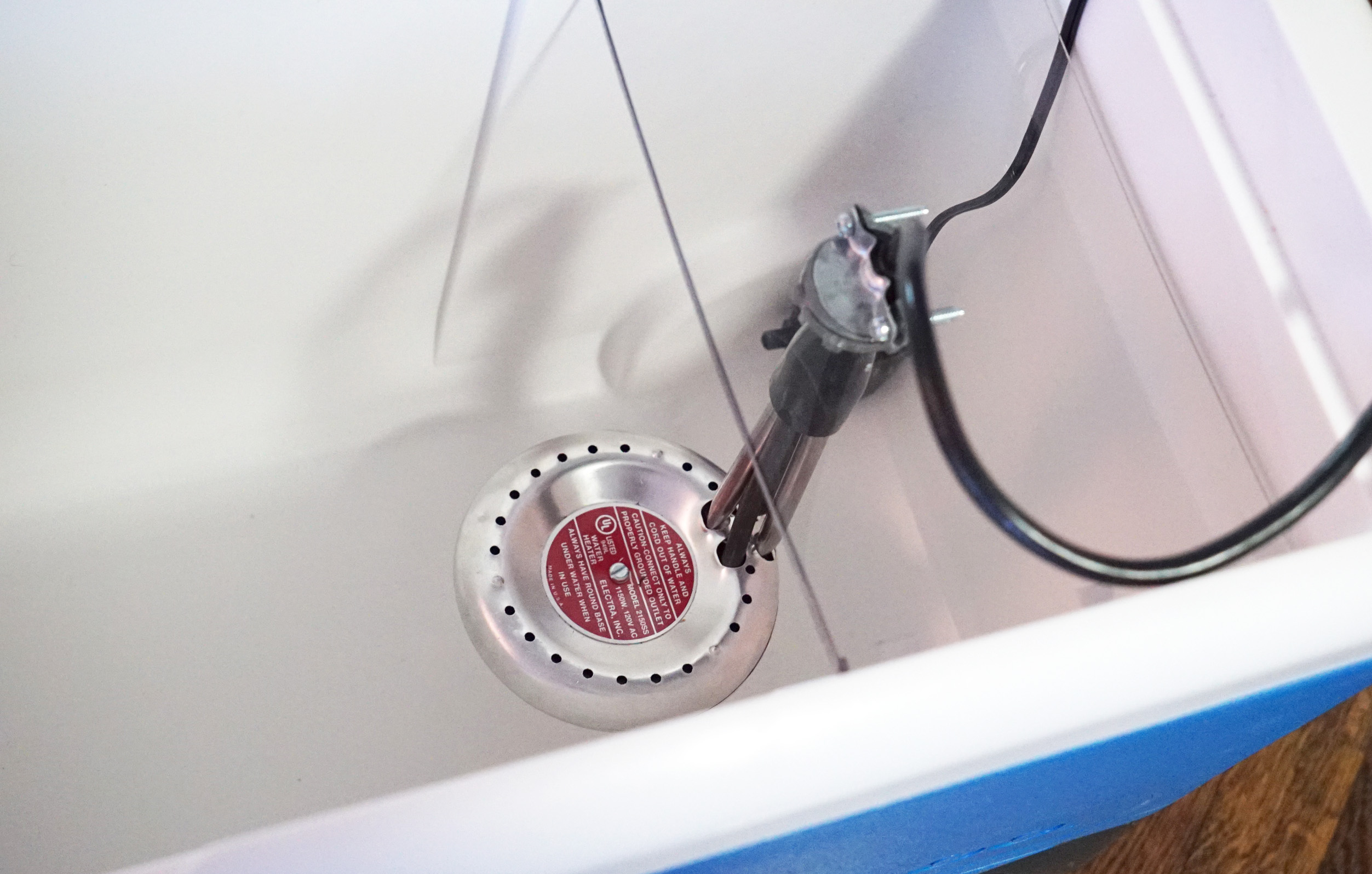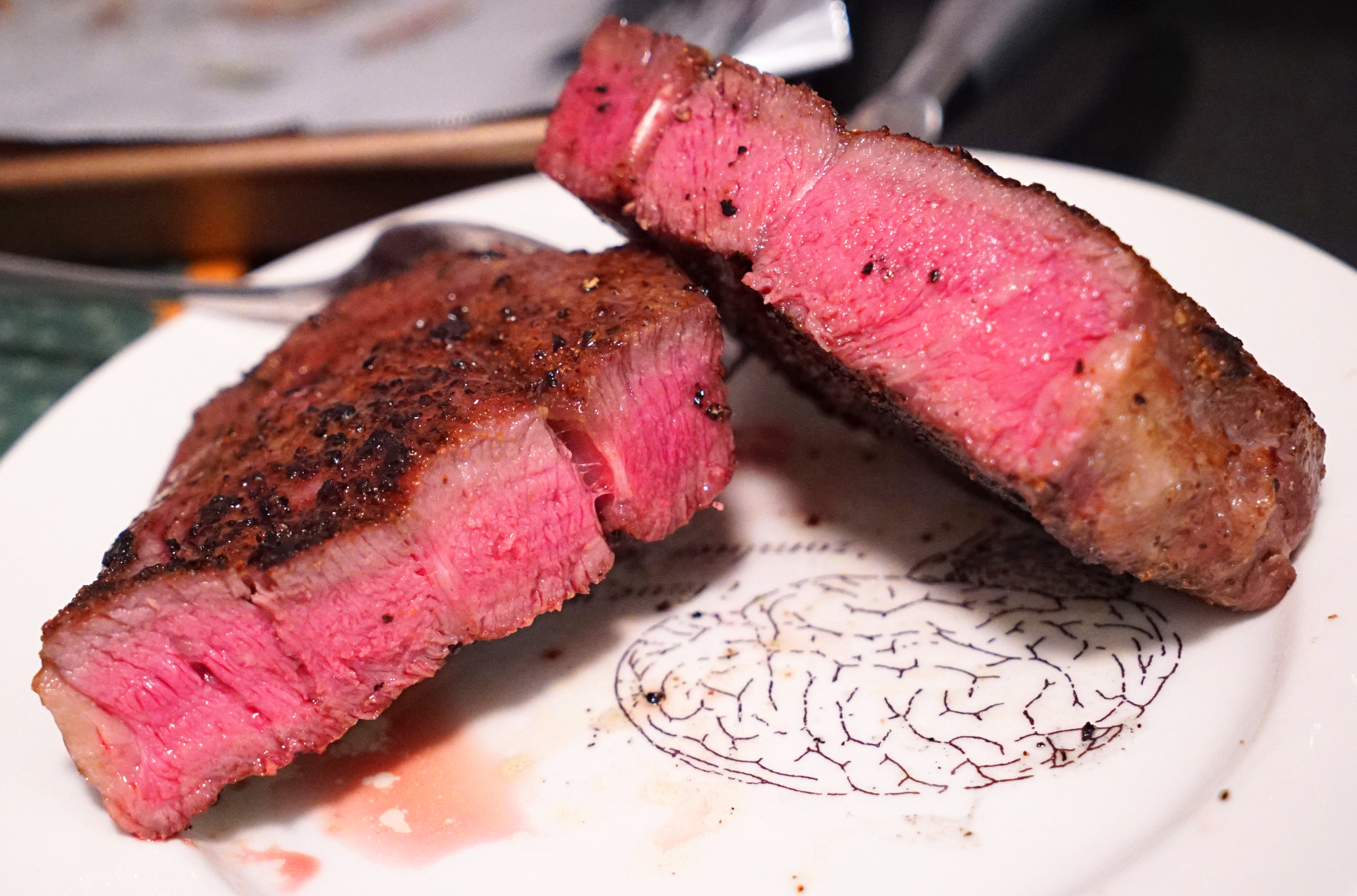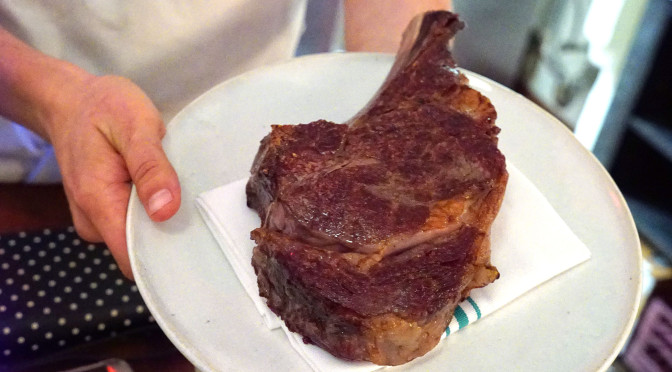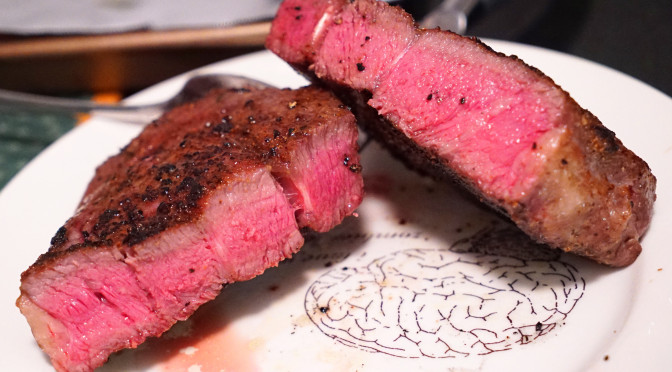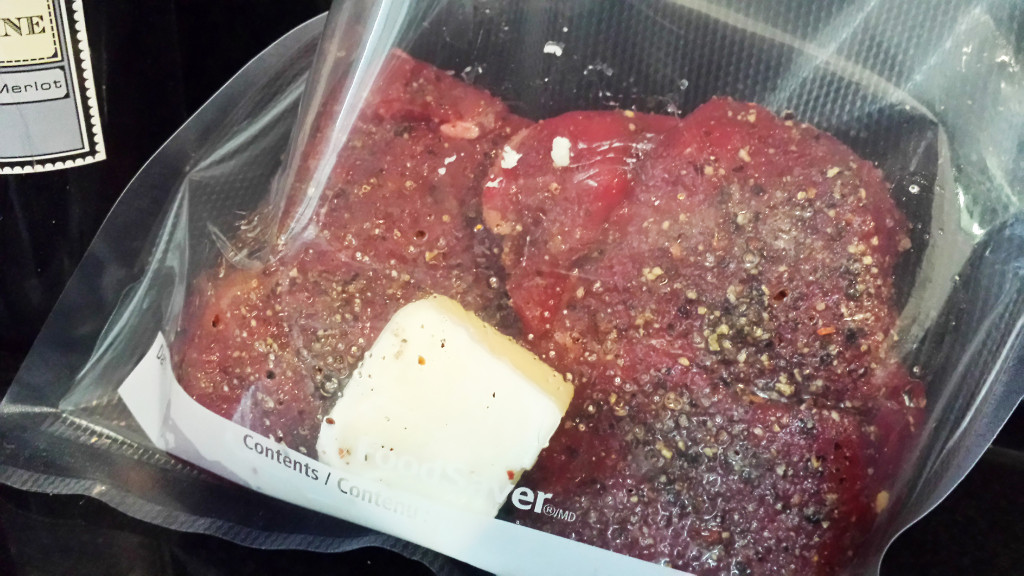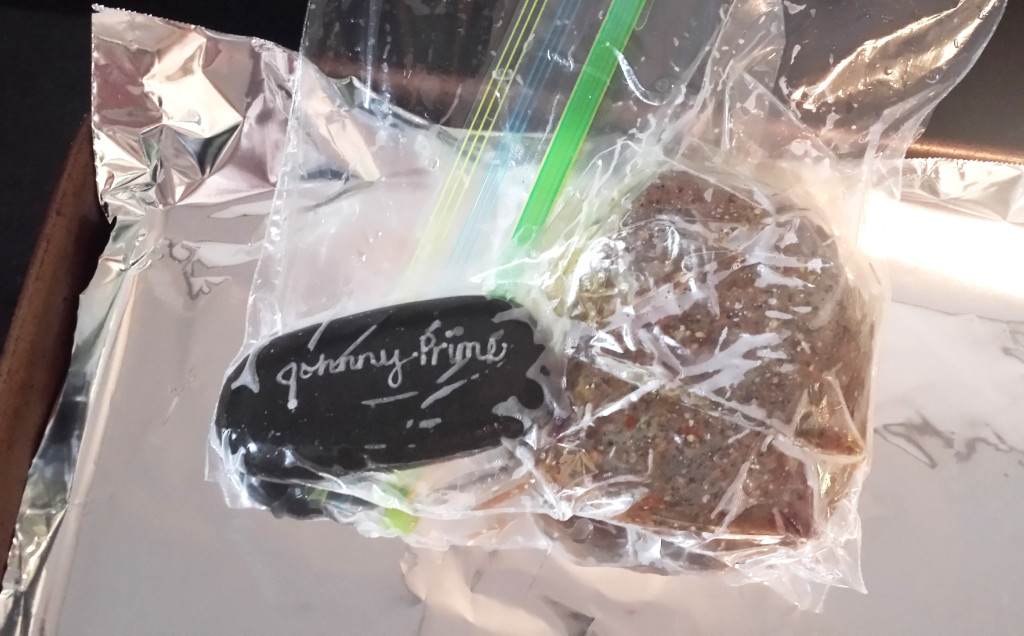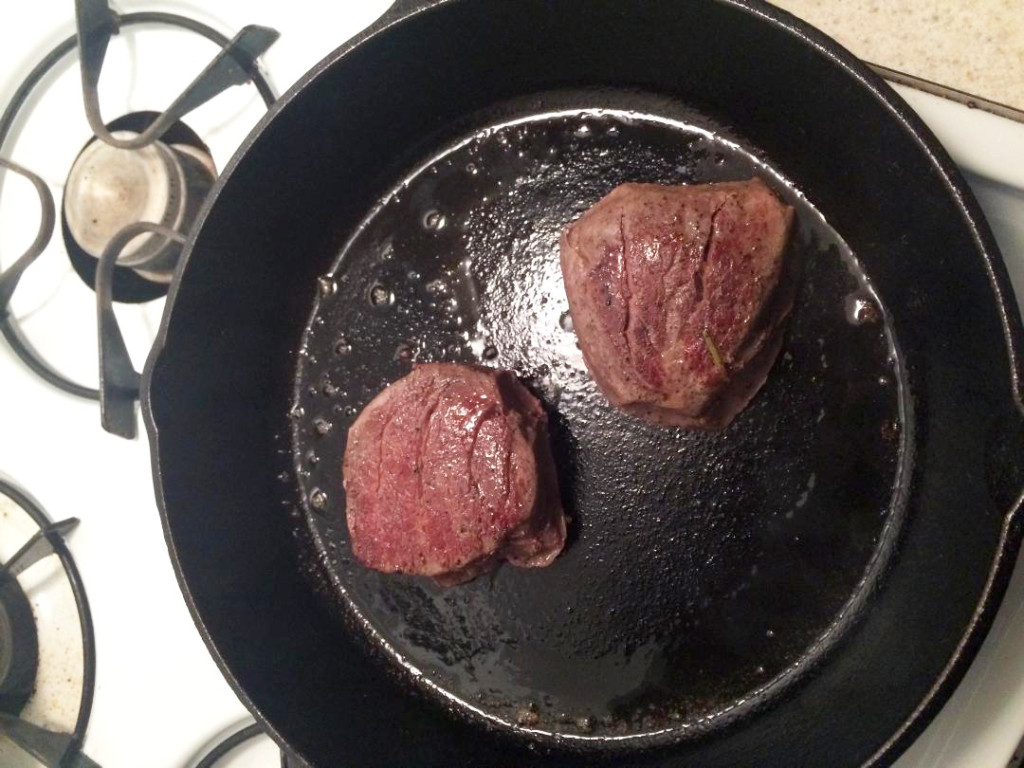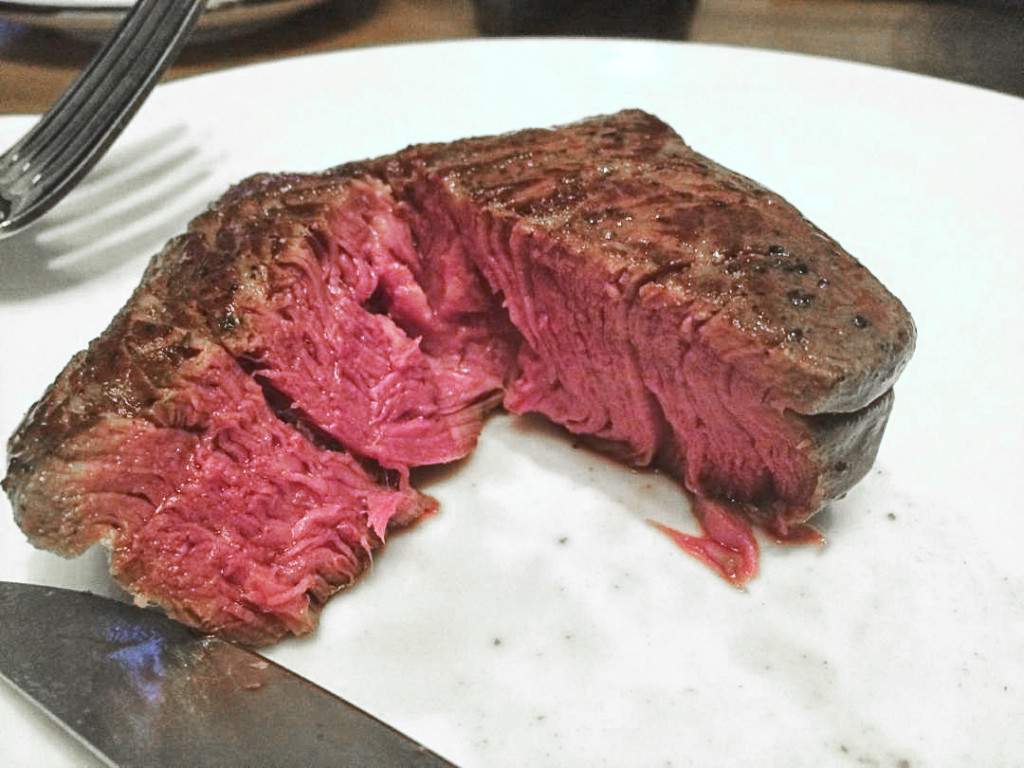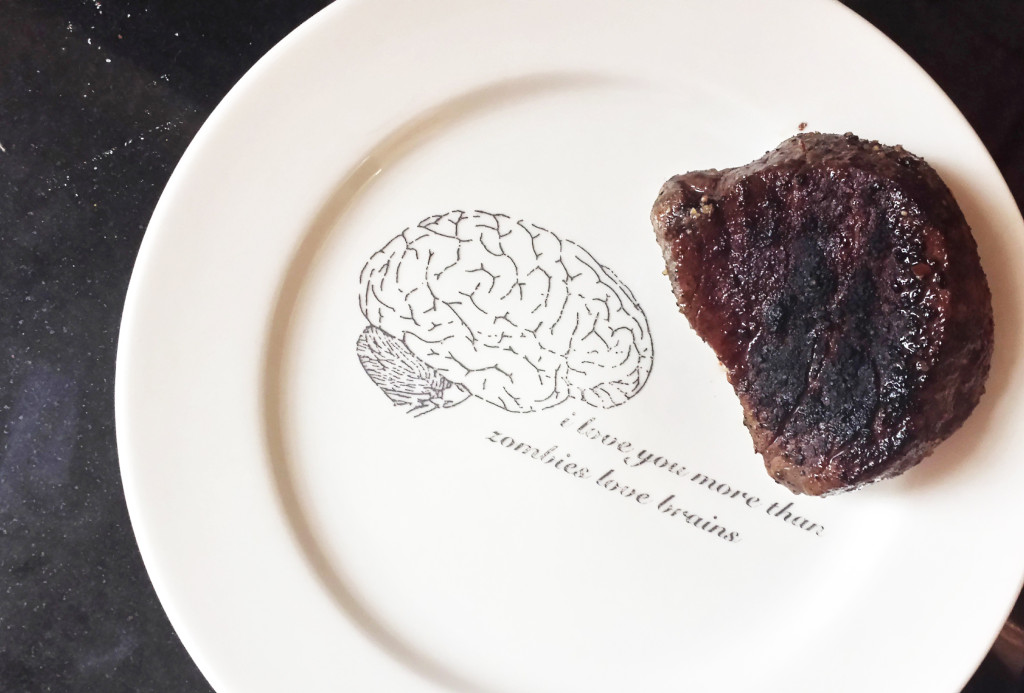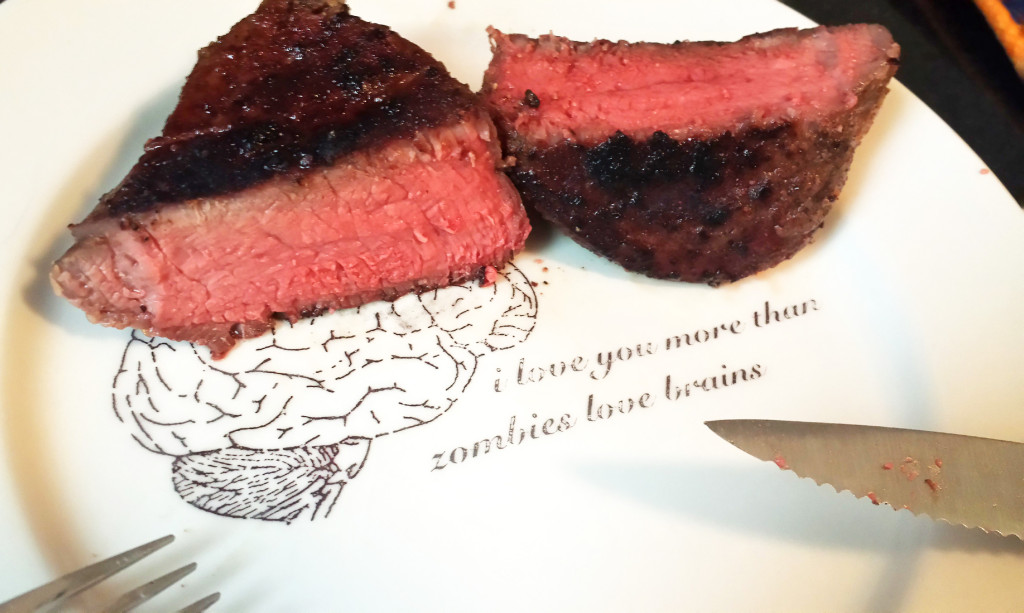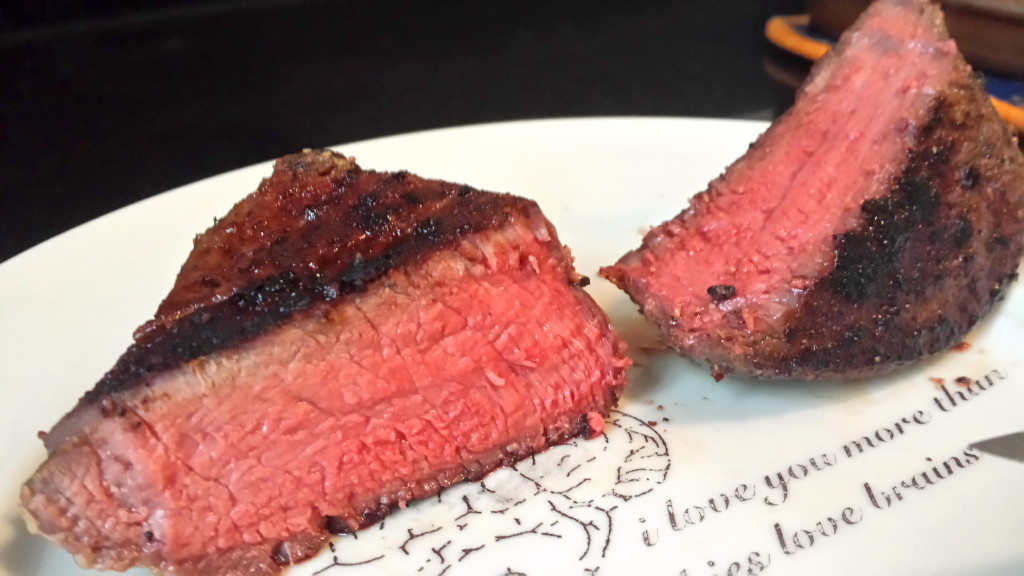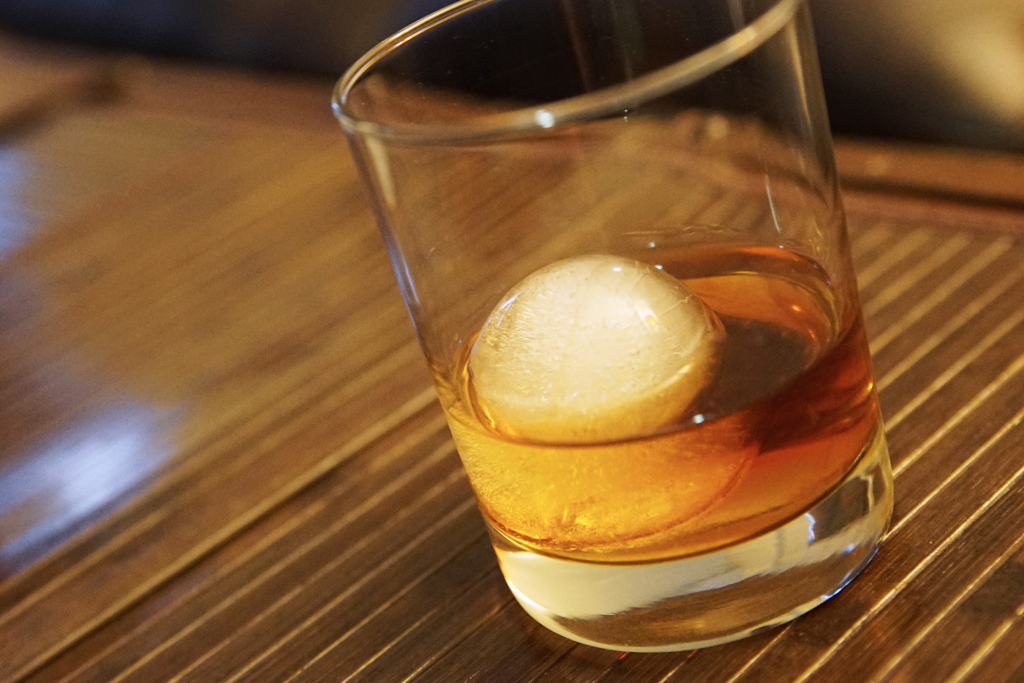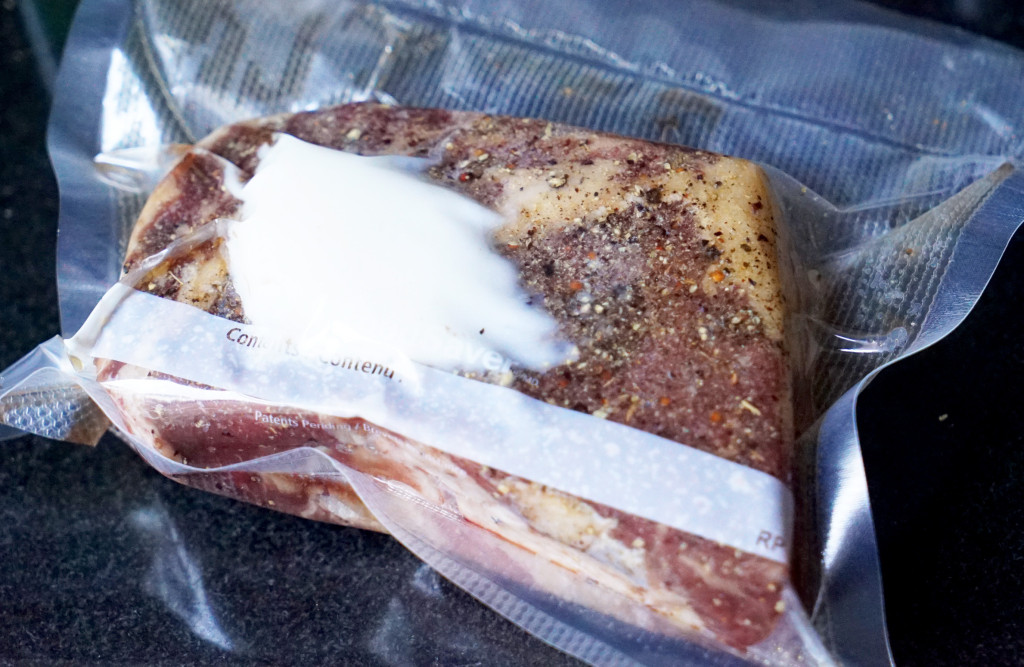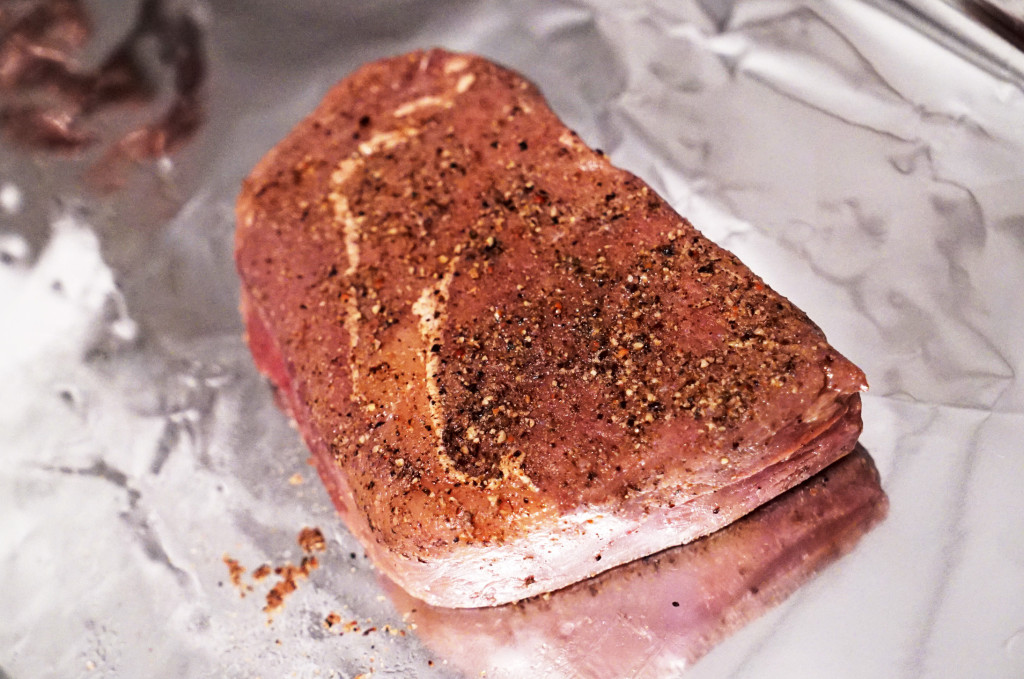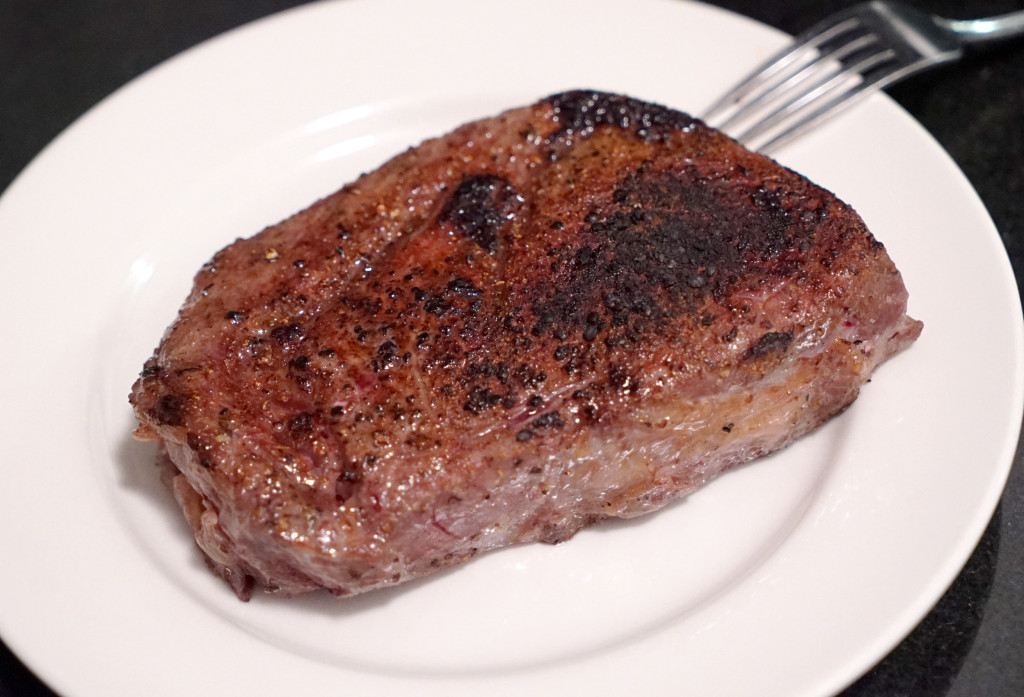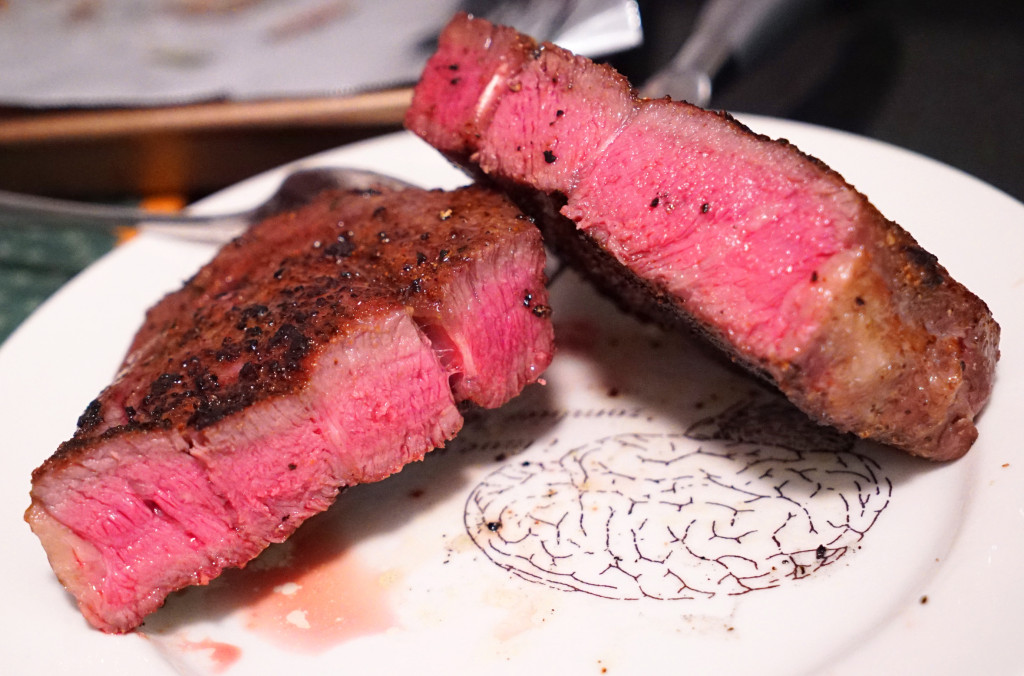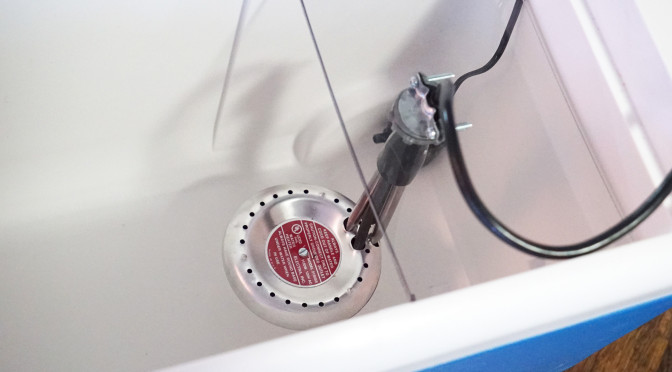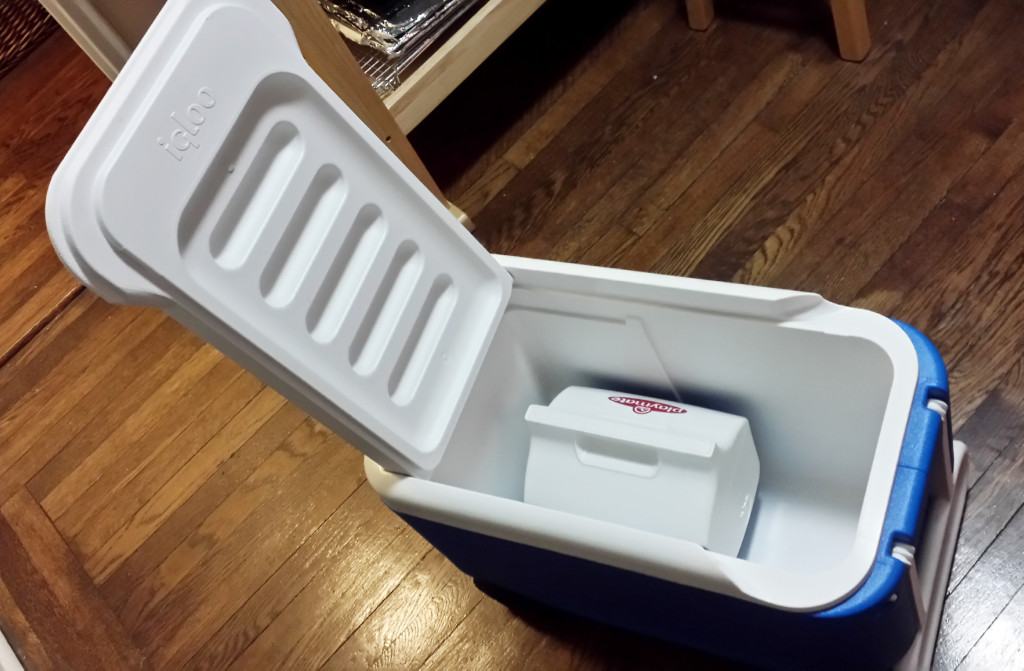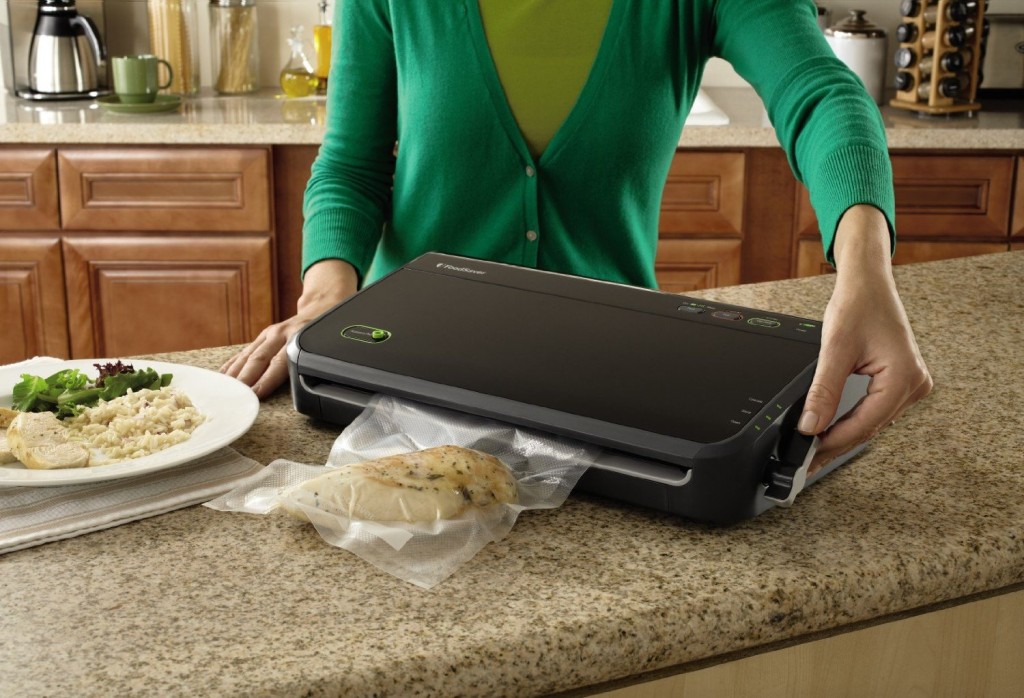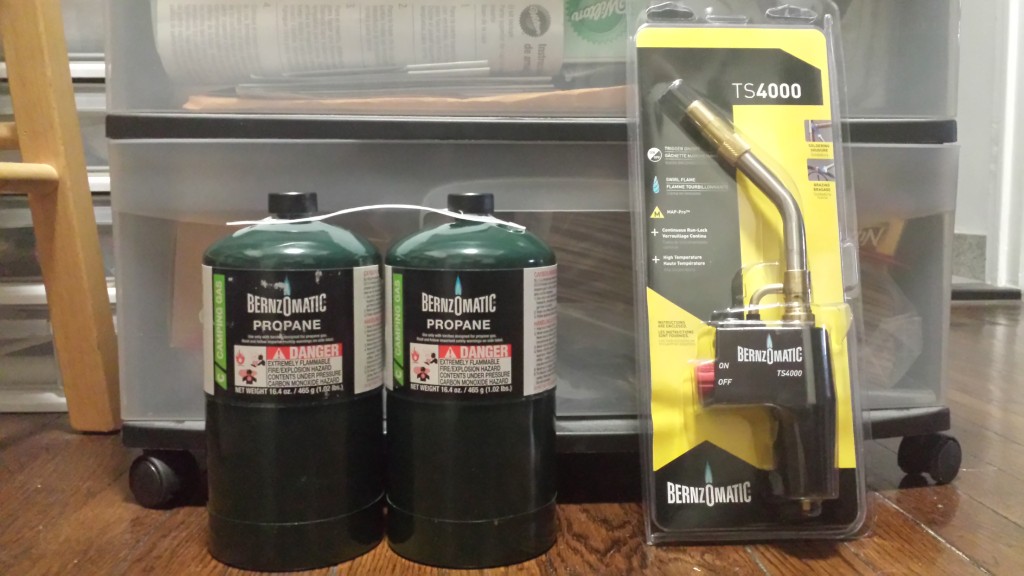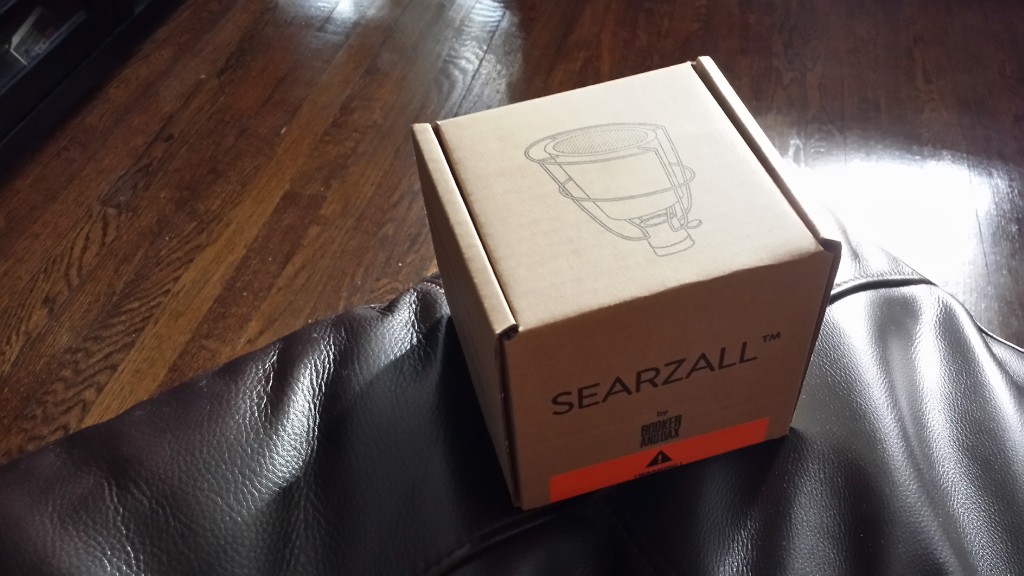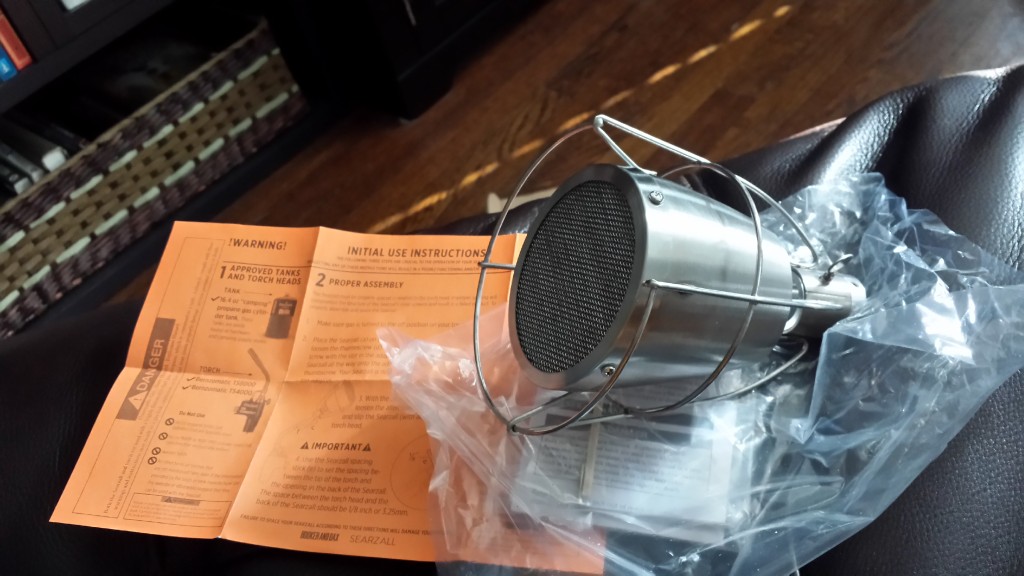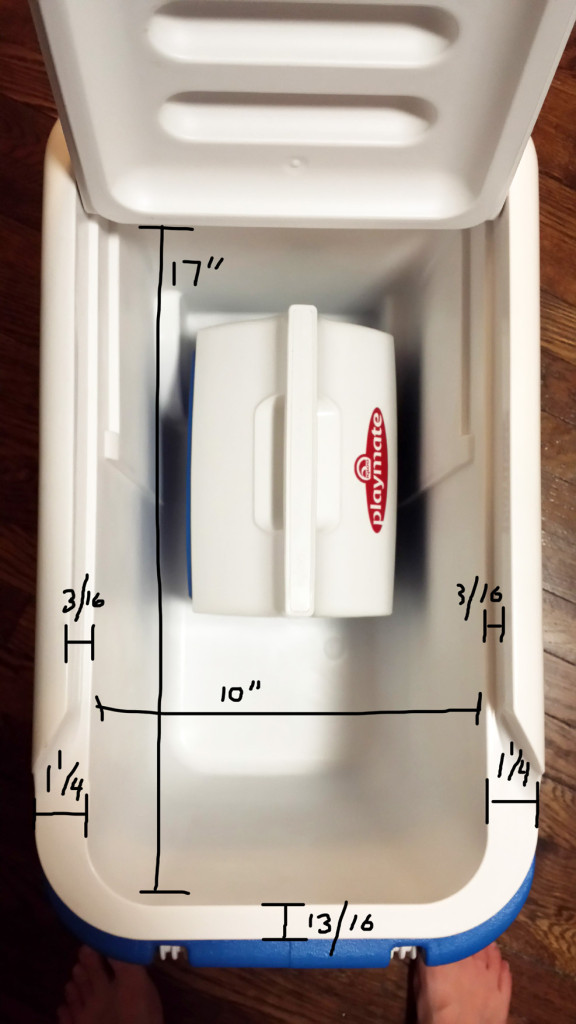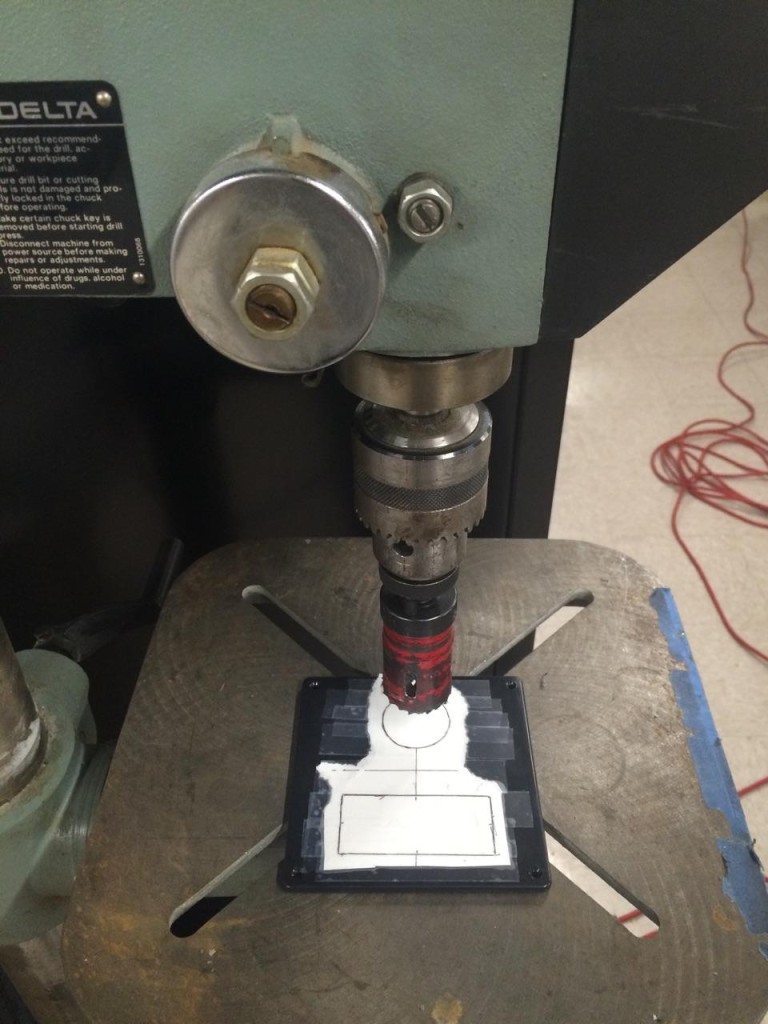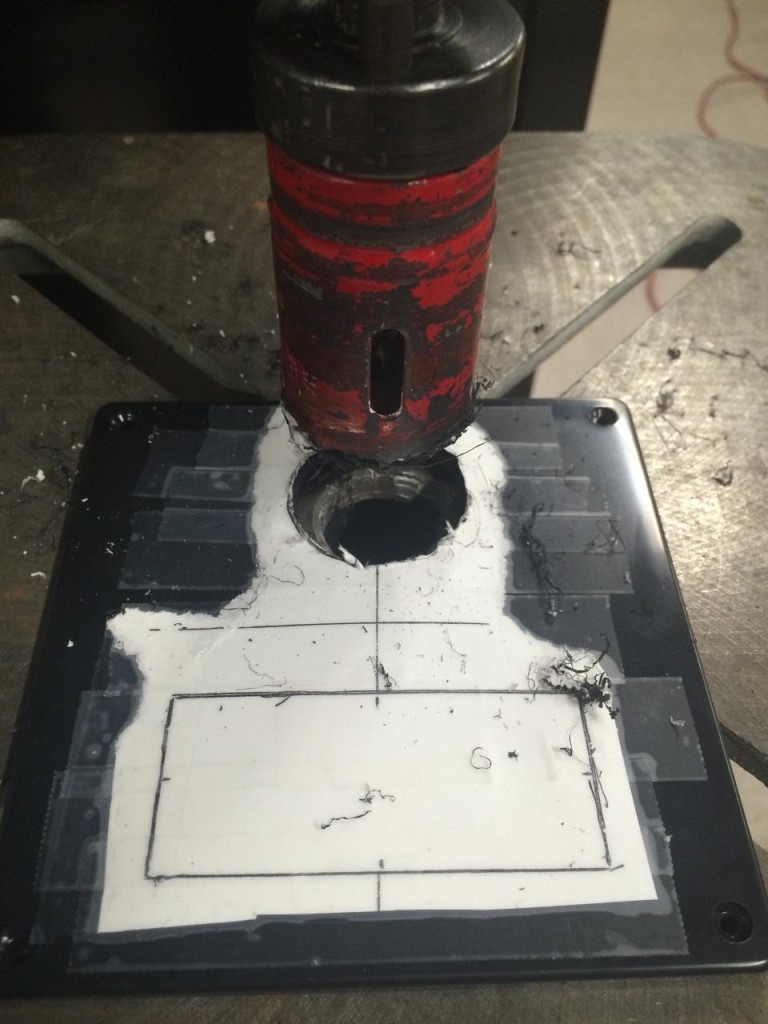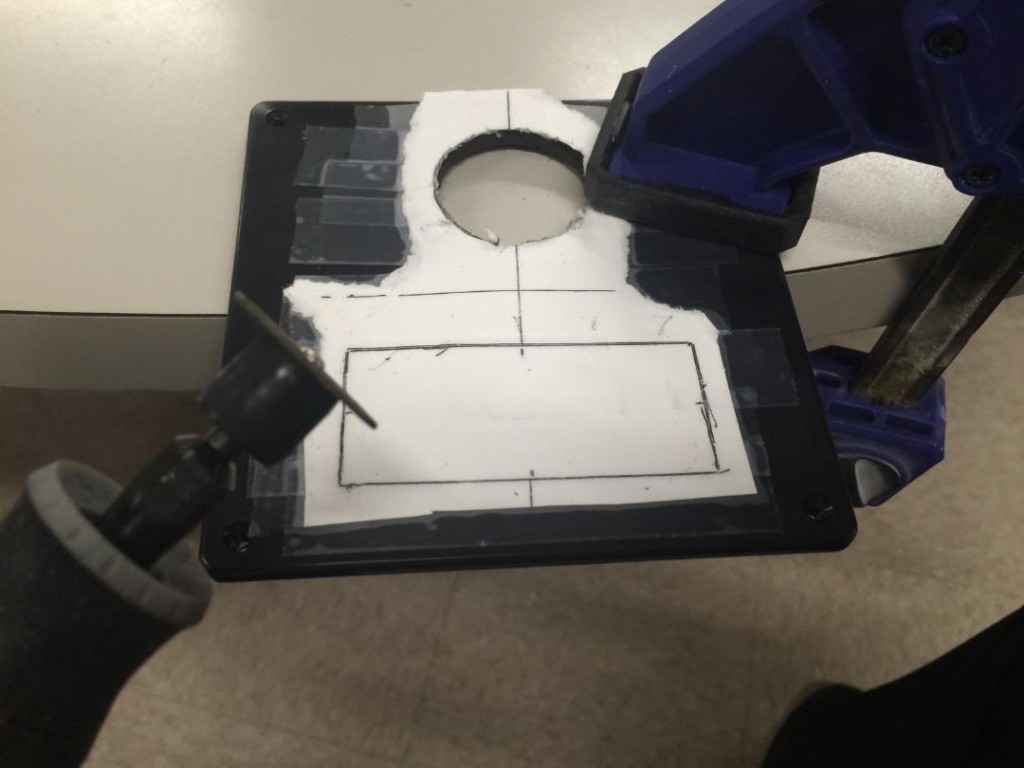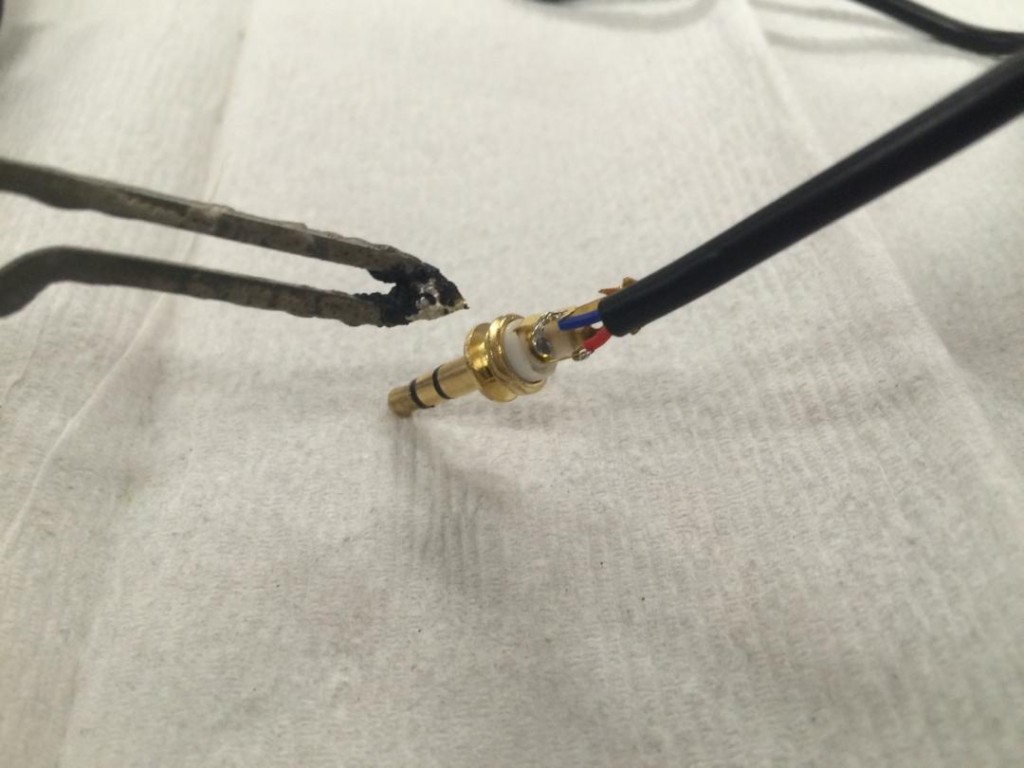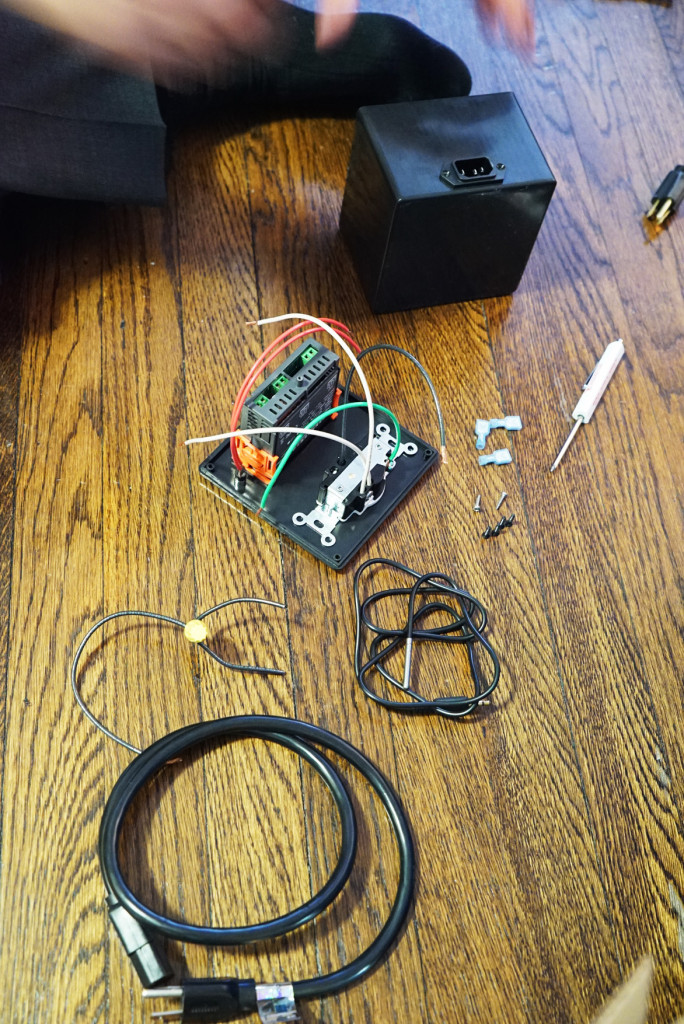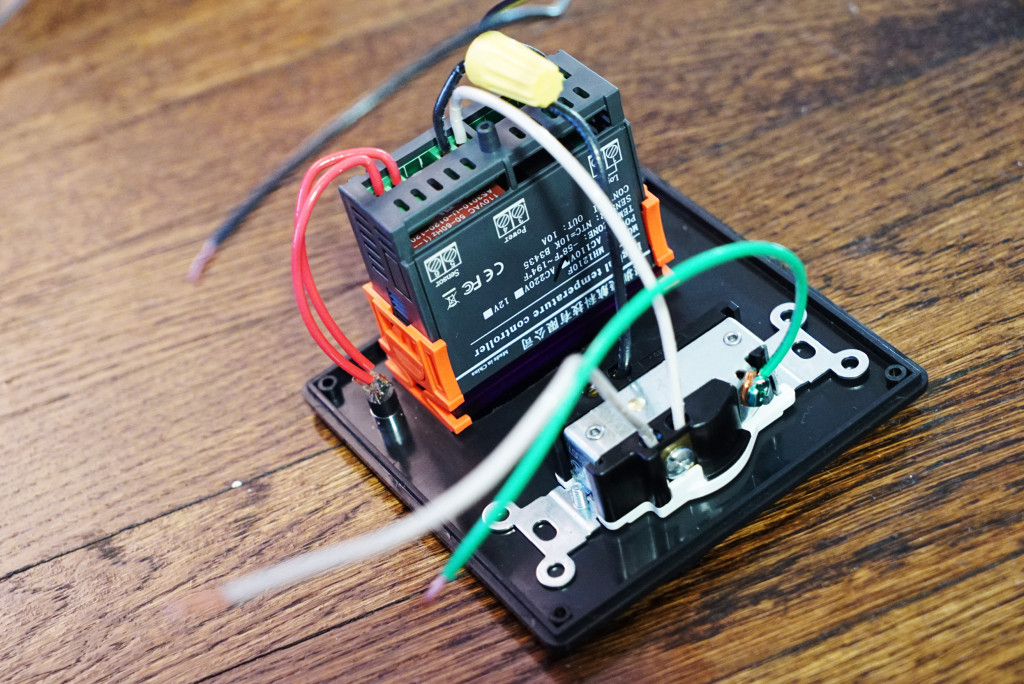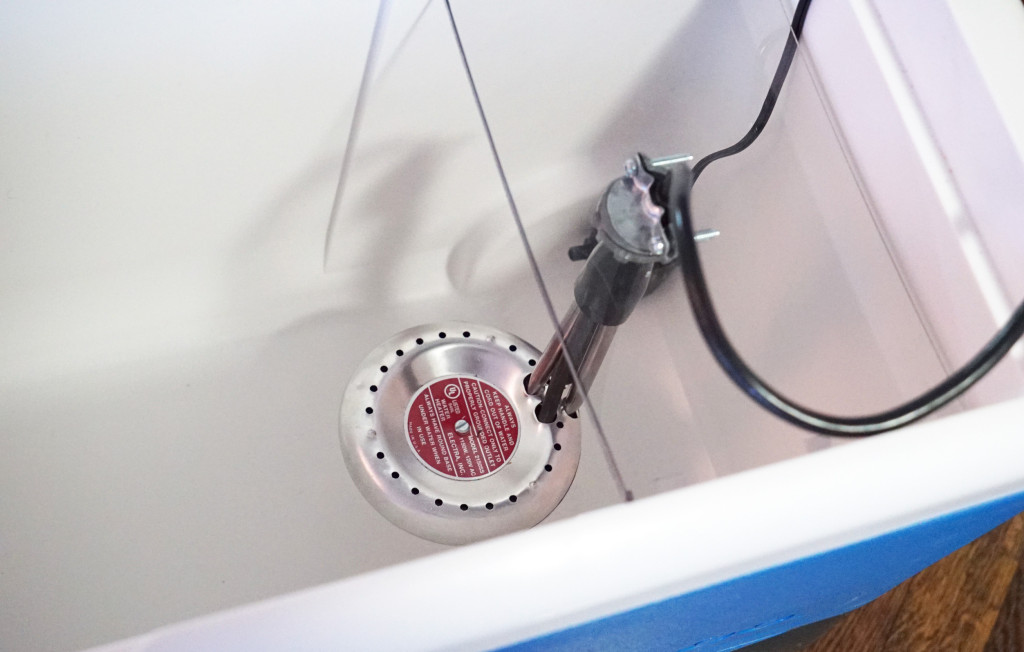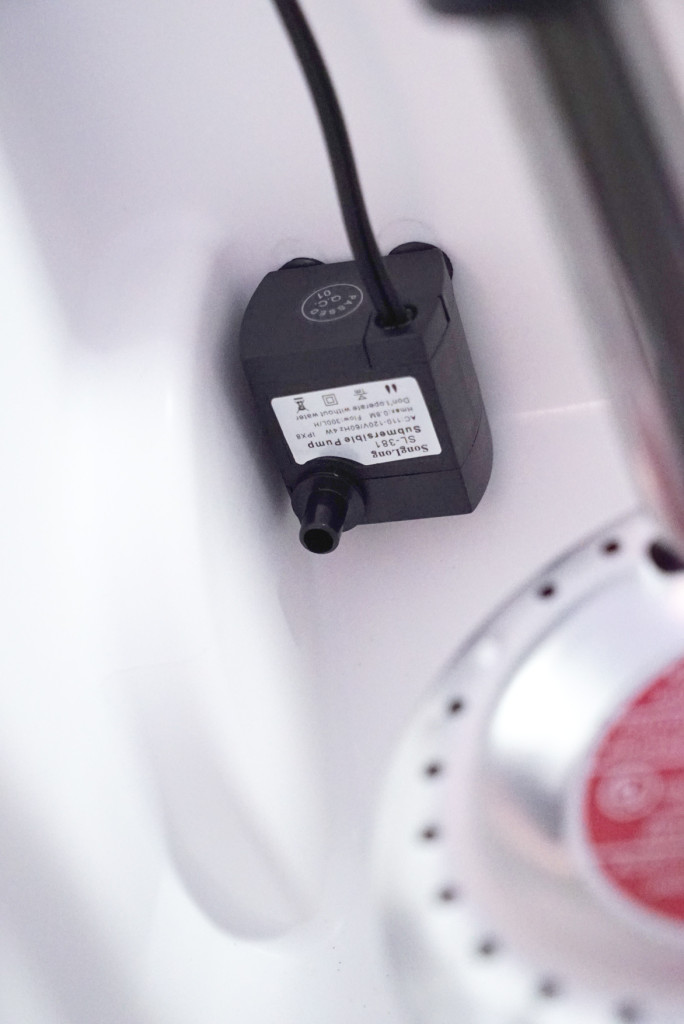NOTE: THIS JOINT IS NOW CLOSED
Last month when I was at Meatopia I had the pleasure of meeting John Poiarkoff, the genius chef behind the wheels of steel at The Pines in Brooklyn.
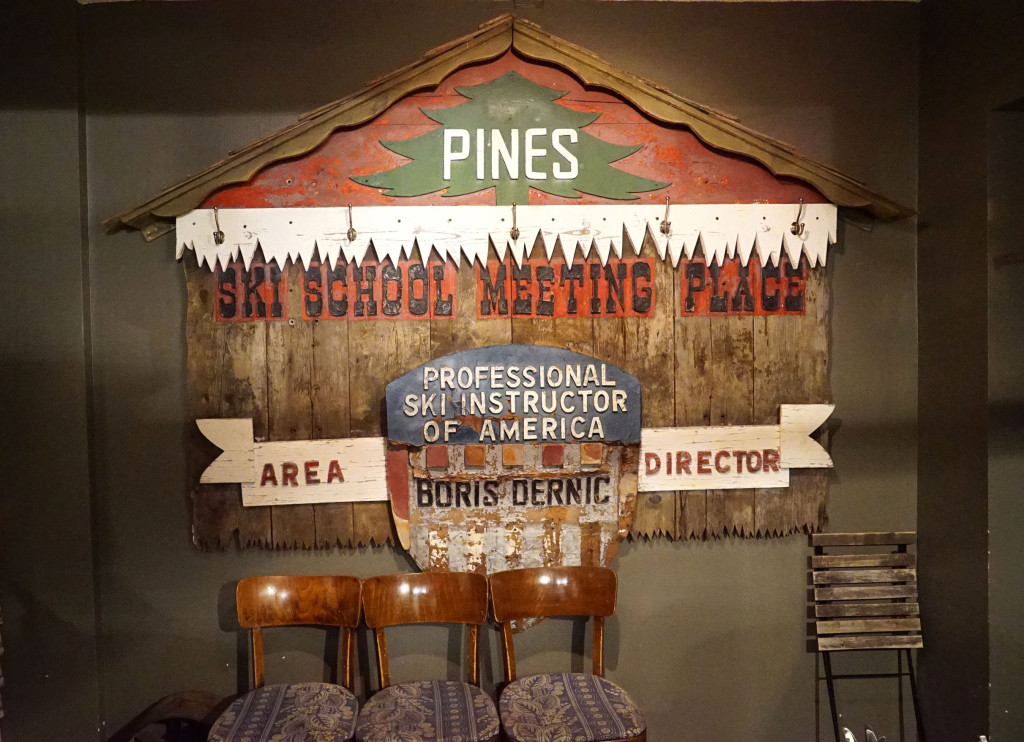
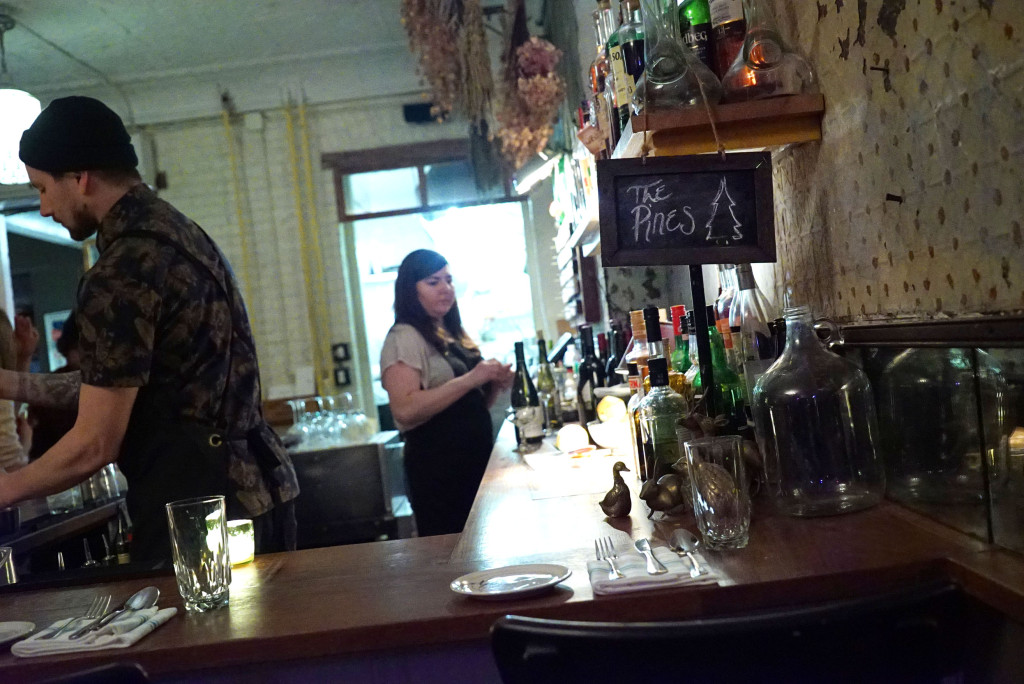
In our inevitable conversation about meat and steak, I discovered that his carnivorous endeavors at the restaurant were not only out of the ordinary and interesting, but exemplified that rare love of beef possessed only by a true connoisseur.
For example, he explained how the blade steak (aka Denver cut, part of the chuck) on the menu was prepared sous vide style. It bathes for several hours in a sealed bag, allowing the tentacle-like marbling to render down, making the steak super tender before it gets seared off in a pan for a nice outer crisp.
He also mentioned that he had some rib eyes in an outdoor walk-in that he converted into a dry-aging room. When he said how long they were in there, 106 days, I nearly lost my shit. I kindly asked him again. “How long did you say?” 106 days!
He went on to say that they would soon be breaking the rack down into portioned cuts and serving them as special menu items. Needless to say, I was all over it. I made sure to follow The Pines on Instagram and to keep my eye out for any news about that steak. Sure enough, just a few weeks later I saw the post announcing that they were going to be serving those rib eyes. The very next day my wife and I headed over.
To my excitement, the menu was chock full of delicious looking meat goodies. We sipped on a pair of nice cocktails while we wrestled with what to order.
On the left is The Pines, a rye drink with douglas fir (burnt/smoked pine needles for a really nice woodsy, aromatic nose) and yuzu; on the right is the Air & Sea, a gin drink with dulse, lemon and violet.
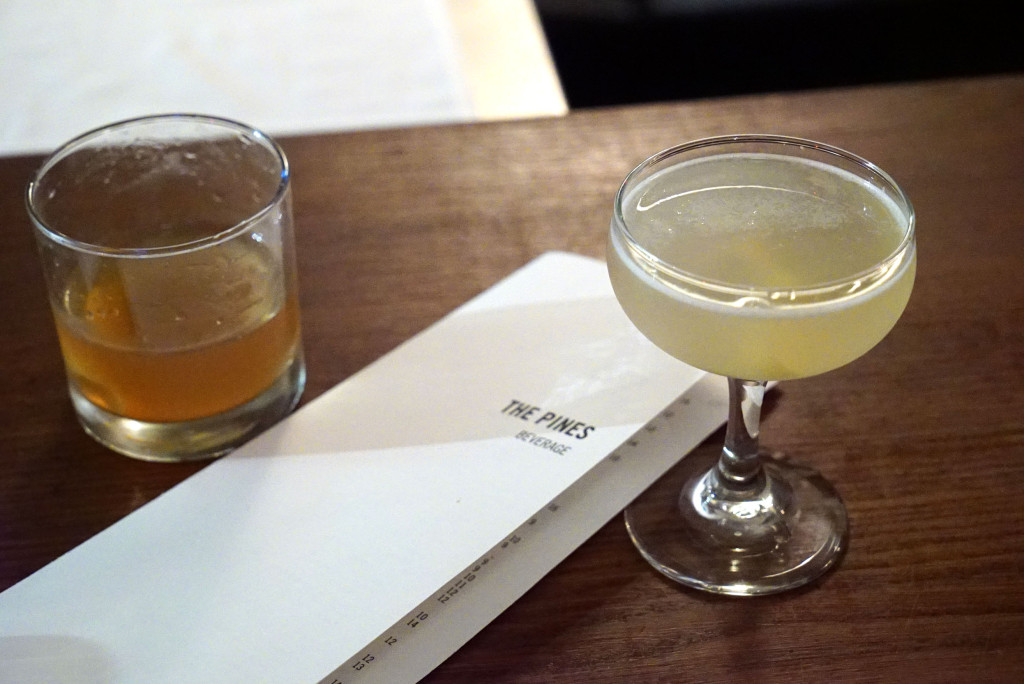
We ended up going for three entrees instead of the traditional apps, sides and entrees routine. But before our first item came out, John sent over an order of duck rillettes. This is aged duck served terrine style with a pastrami sandwich theme: dill sauce (it tasted like pickles), a cabbage kraut, mustard and crunchy puffed rye grains.
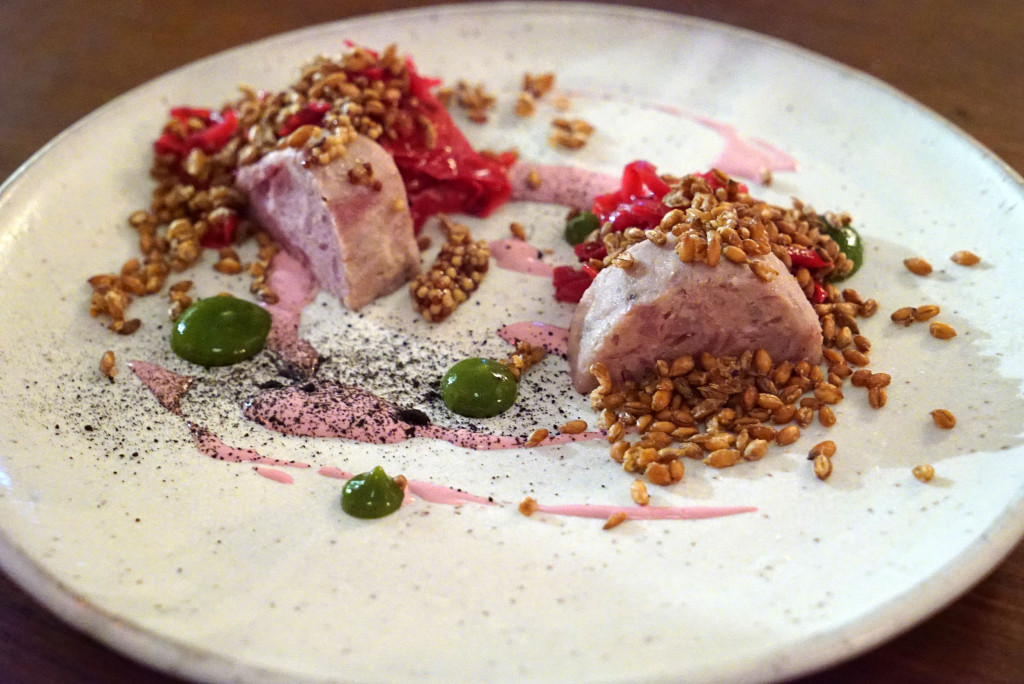
This inventive dish threw us for a tasty loop, and it set the tone for what was one of the most fun, innovative and delicious meals we’ve had in a long time.
John paired the duck with this really smooth, clean sake:
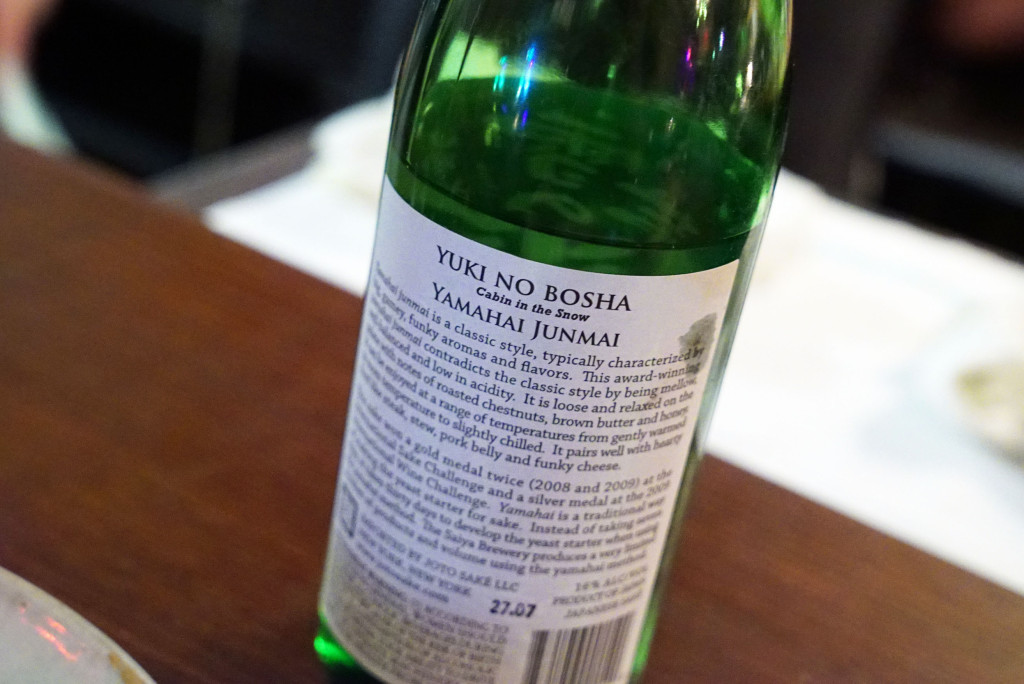
Oh and there was this nice little amuse of carrot soup/puree with sage oil. It had a spicy and smoky kick to it.
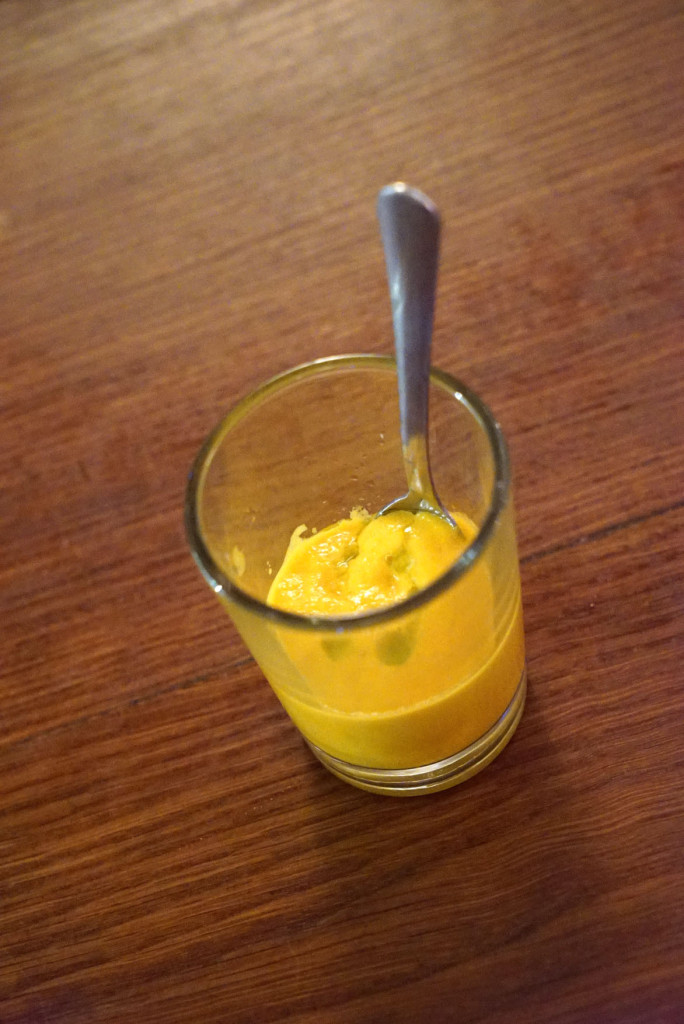
Our first entree was pork jowl. If you’ve never had this, it is essentially bacon from the face of a pig. It’s cured, smoked cheek meat. If you know anything about the cheek meat of an animal, you know that it is some of the most tender and sought after bits of goodness you can find. This tasted like really awesome smoked bacon. It was savory yet slightly sweet, and sat on a pumpkin and cabbage pancake that was somewhat reminiscent of corn bread.
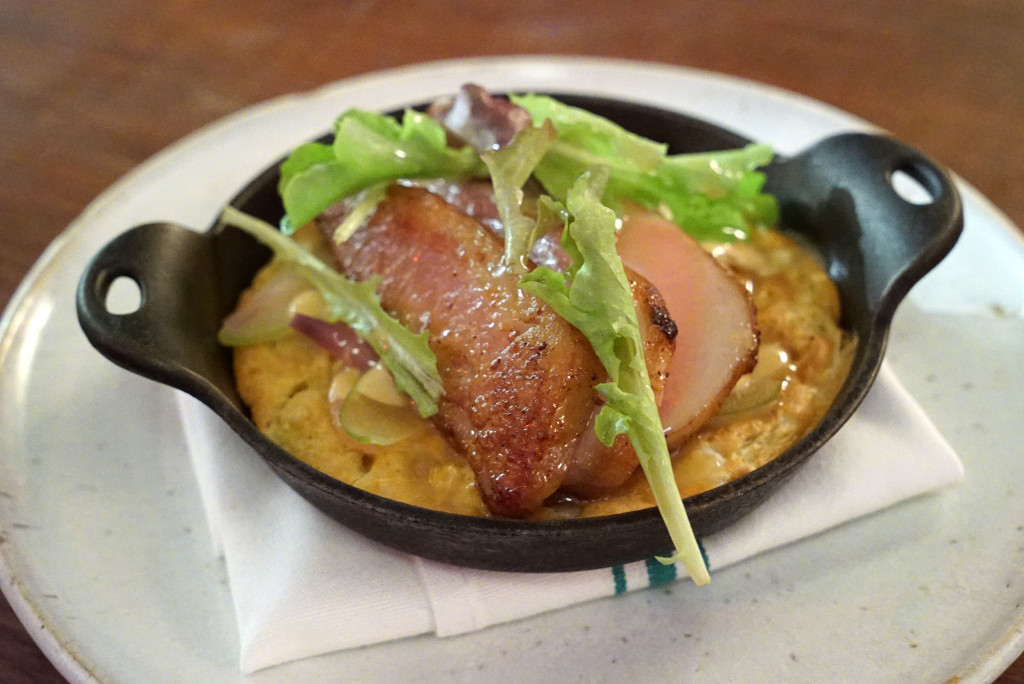
I could very happily eat that shit every morning for breakfast, though I may be tempted to throw a fried egg on top – you know – because breakfast is the perfect time to eat like a savage barbarian. Anyway this dish wasn’t heavy or greasy like you might expect from bacon. The curing and smoking helps in that respect.
Our first steak dish came out next. After hearing about that blade steak, I couldn’t pass it up.
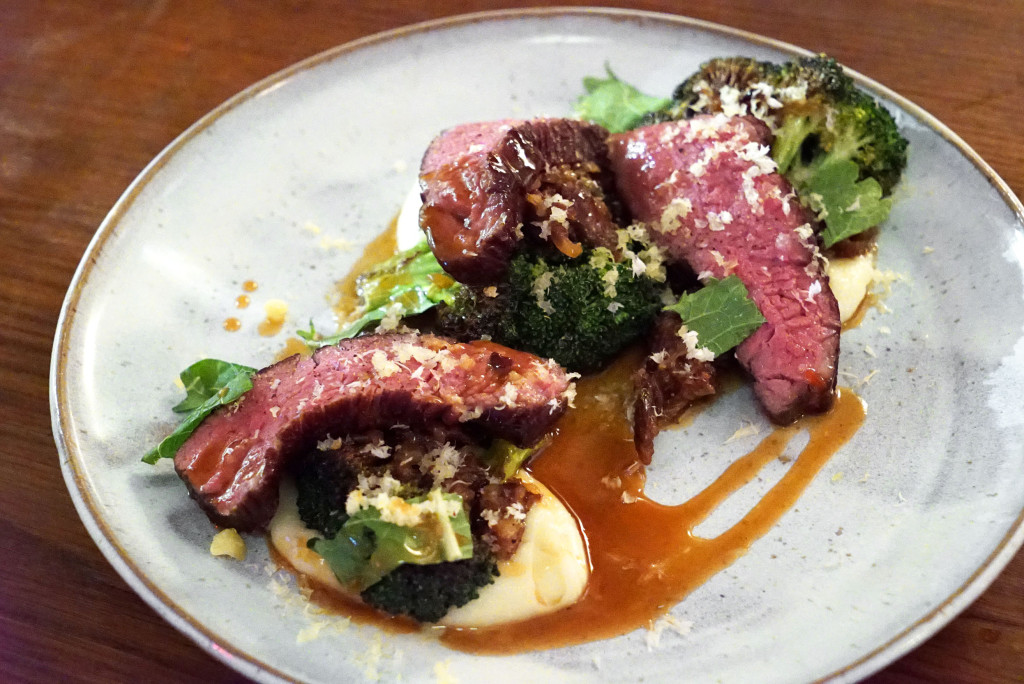
John mixed the normal blade steak plate up a bit and served it with some roasted broccoli, braised oxtail and cheesy potato puree.
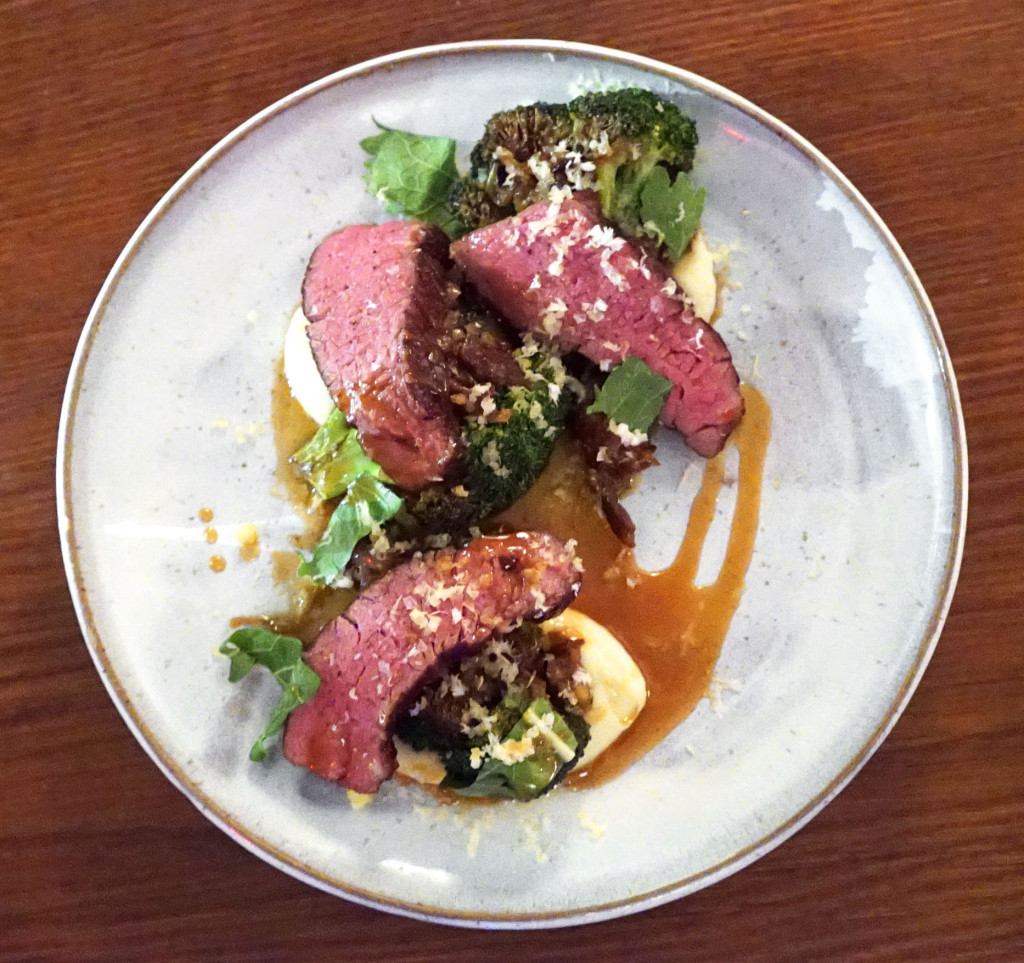
As you can see, there’s even a bit of shaved horseradish over the top to punch up the salt and tie the meat in with the potato. Really nice.
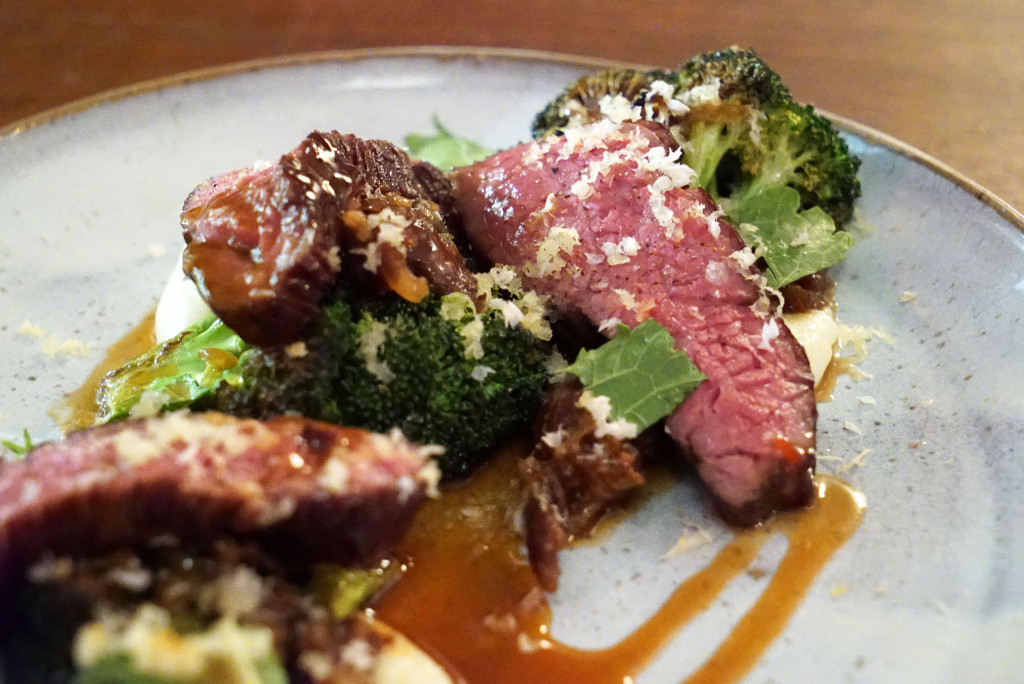
This steak is incredibly good. John has taken a lesser known, less desirable and rarely featured cut and showcased it in a way that will have you searching for it in every restaurant. It’s easily 10/10 for flavor. It was so juicy and tender inside. Perfectly cooked, as you can see, and the sear on the outside locked in all that flavor. It was super crispy on the outside without any part of the inside getting cooked beyond medium rare. Just awesome!
John paired this with a unique and unexpected rose, which had some tartness to it. The cool thing about The Pines is that, if you’re interested, you can learn a lot about the food you’re eating and the stuff you’re drinking. John gets to know all the people who provide his source material. The vintner of this wine, for example, or the farmers and ranchers who provide the meat and produce. He gets to know their stories, and he shares it with diners for a more rich, engaging experience. I dig and appreciate that, and it’s exactly what I was talking about on here recently – that I want to see more of it.
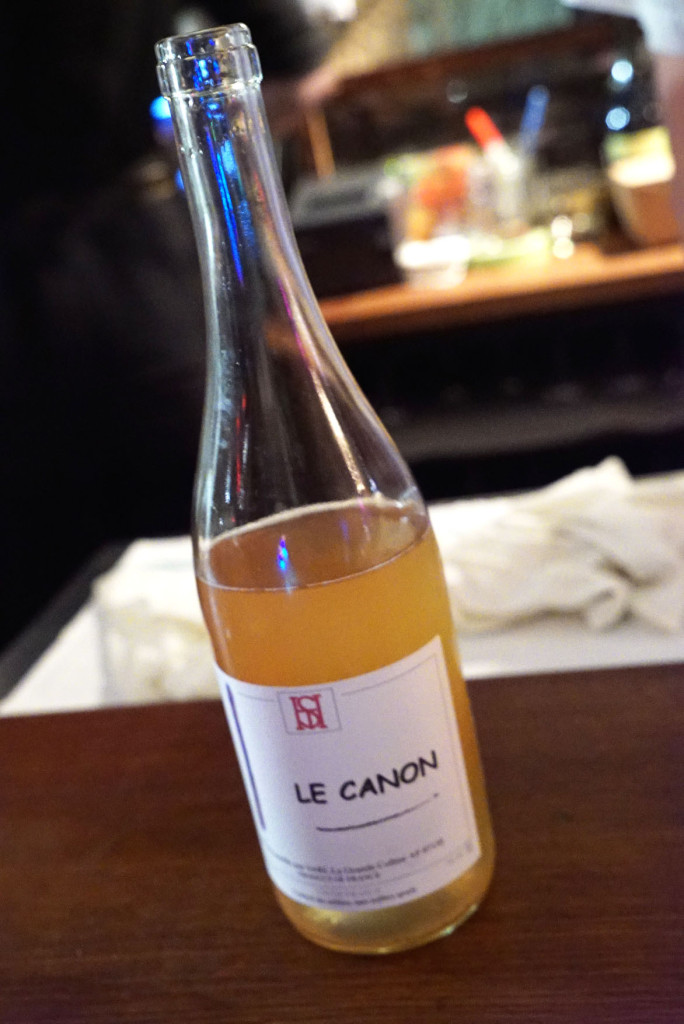
I should probably mention here that The Pines sources all of its beef from Happy Valley Meat Co., which is based out of Central PA. Both John and his sous chef Neel Patil (the creative force behind the duck rillettes dish, featured above) are extremely modest in that they attribute so much credit for the success of their menu to those farmers. While much credit is indeed deserved by the farmers, it is very easy to fuck up good meat if you don’t know what you’re doing. John and Neel clearly deserve as much credit as the farmers, because they knocked the beef dishes out of the park!
So now comes the big boy – the 106-day, dry-aged rib eye. John explained that the process for these is as follows: First it hits a hot grill for a little smoke and sear, and those lovely grill marks. Then it gets a nice warm sous vide bath. Last, it hits a hot pan to lock in all the juices and get a crispy sear. Thrice cooked rib eye! Here’s a shot of John holding our cut before it hits the pan:
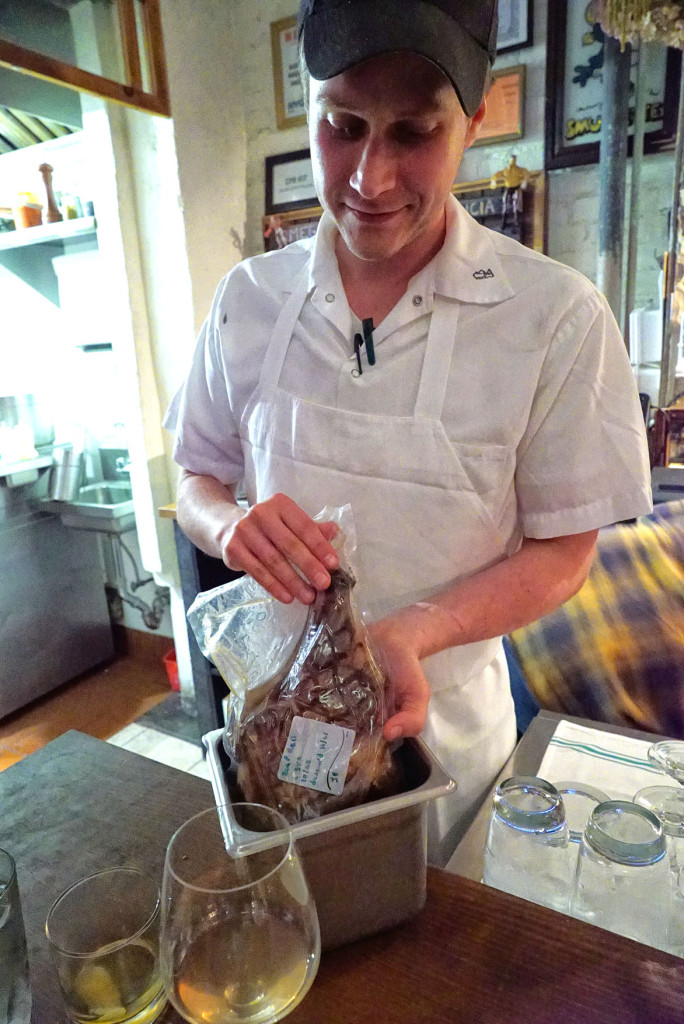
And here it is after the pan, resting, but before serving. Just look at that gorgeous sear!!!
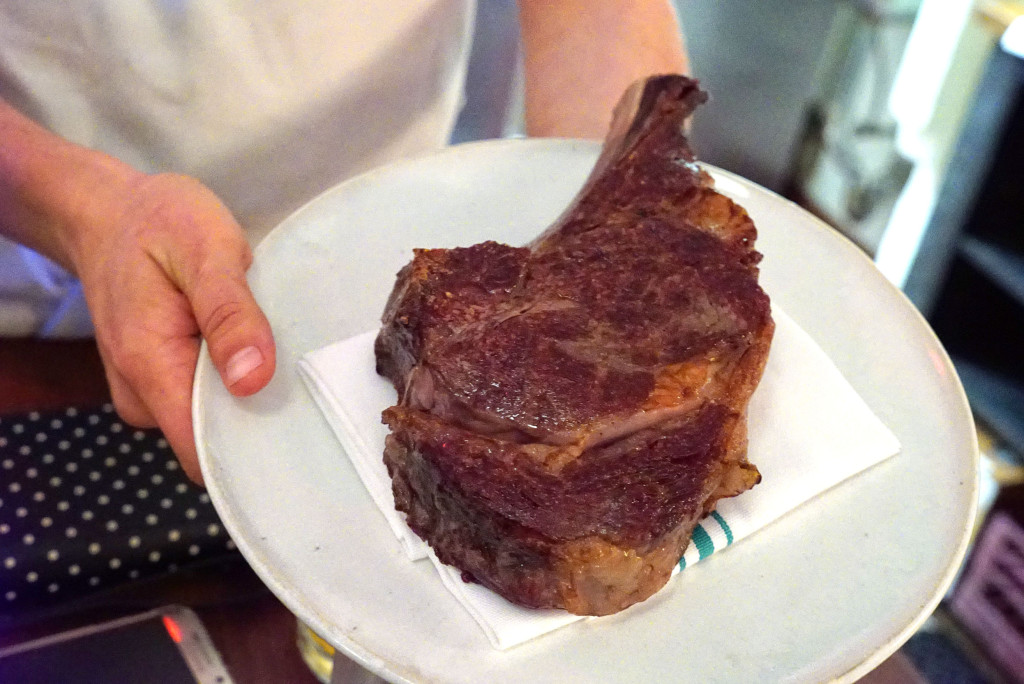
While we waited for it to be sliced and plated, John rolled out another pairing for us.
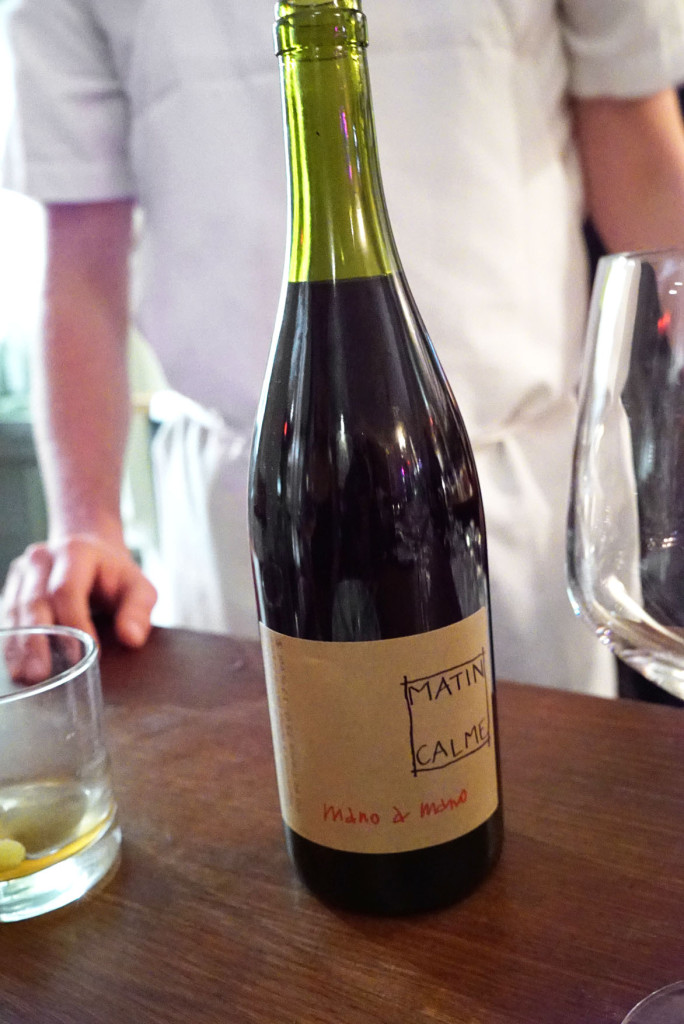
This wine was truly incredible. He poured us a taste from two different bottles: one that was just opened 30 minutes prior, an another that was already opened for two days.
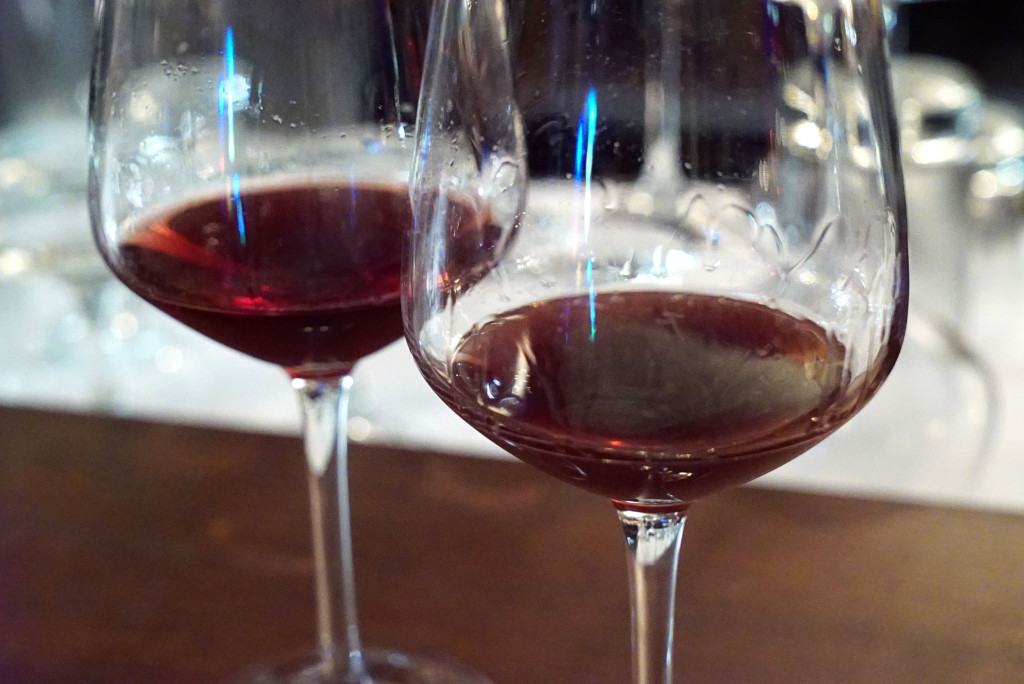
The difference was astounding. The freshly opened wine was really nice and flavorful, full bodied and robust without being overpowering. It had a nice round, smooth finish. The wine that was opened for two days had all the same characteristics, but the after taste was of dry aged beef or truffled charcuterie. It was incredible! I kept going at it. It was like having a delicious meat snack with each sip, and it reminded me of the awesome Trufa Seca sausage I had with my latest Carnivore Club box. It paired perfectly with the steak.
Anyway then the masterpiece came out:
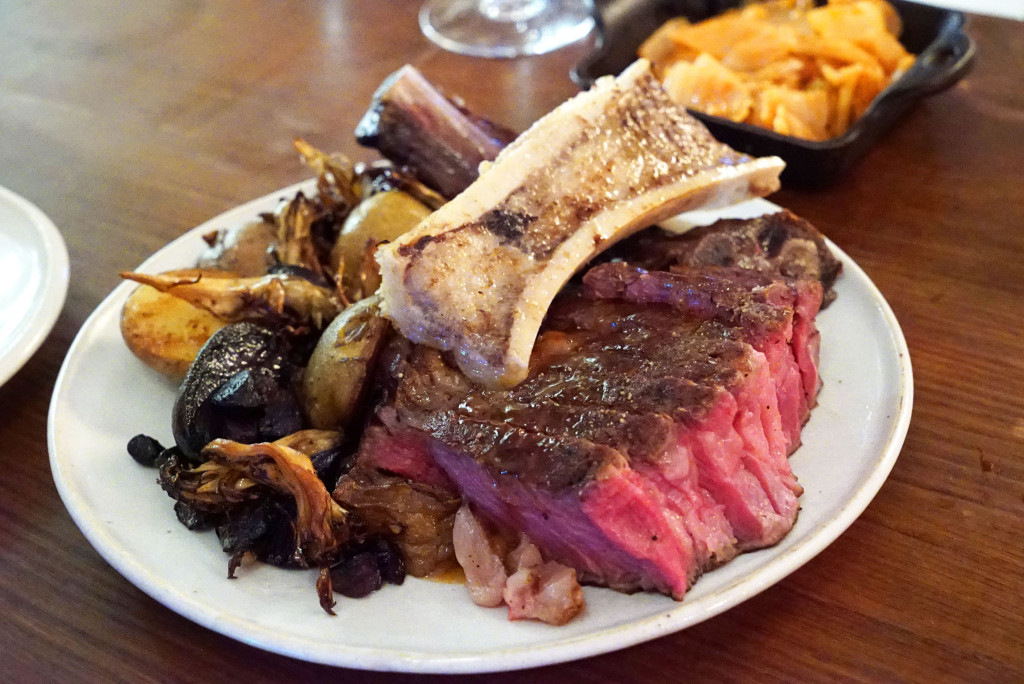
It was plated with grilled Japanese mushrooms, bone marrow, potatoes that were pretty much confit style, and this awesome kimchi cabbage that was finished with rendered beef fat:
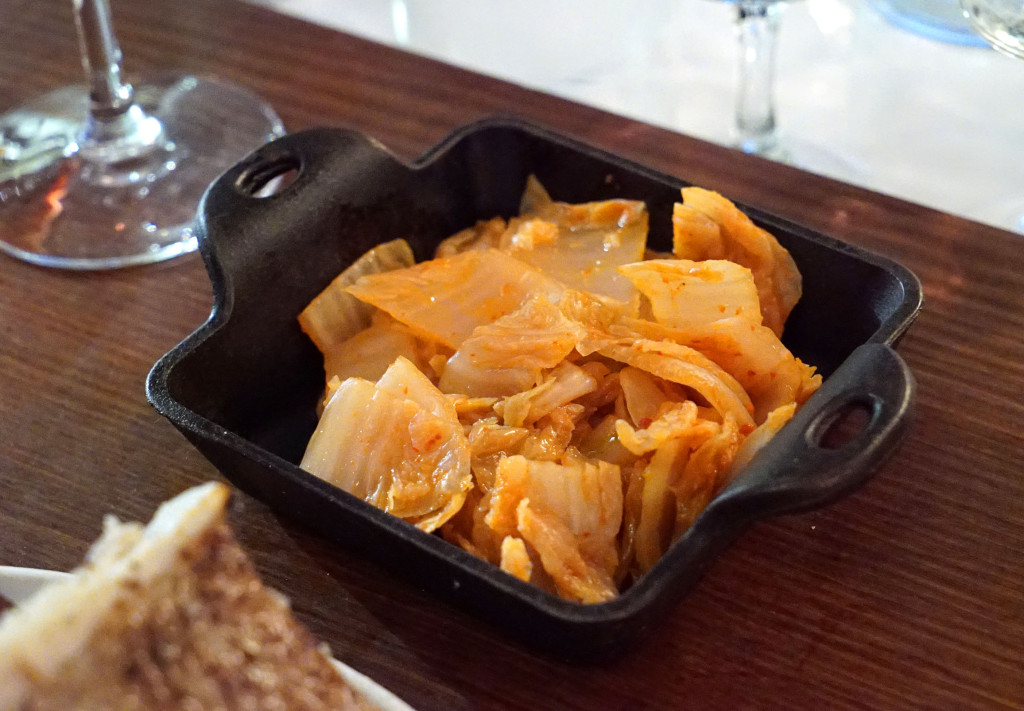
This right here is the best steak I’ve ever eaten at a non-steakhouse, and I can tell you it seriously rivals the best steakhouses as well – it may even be better than all of them.
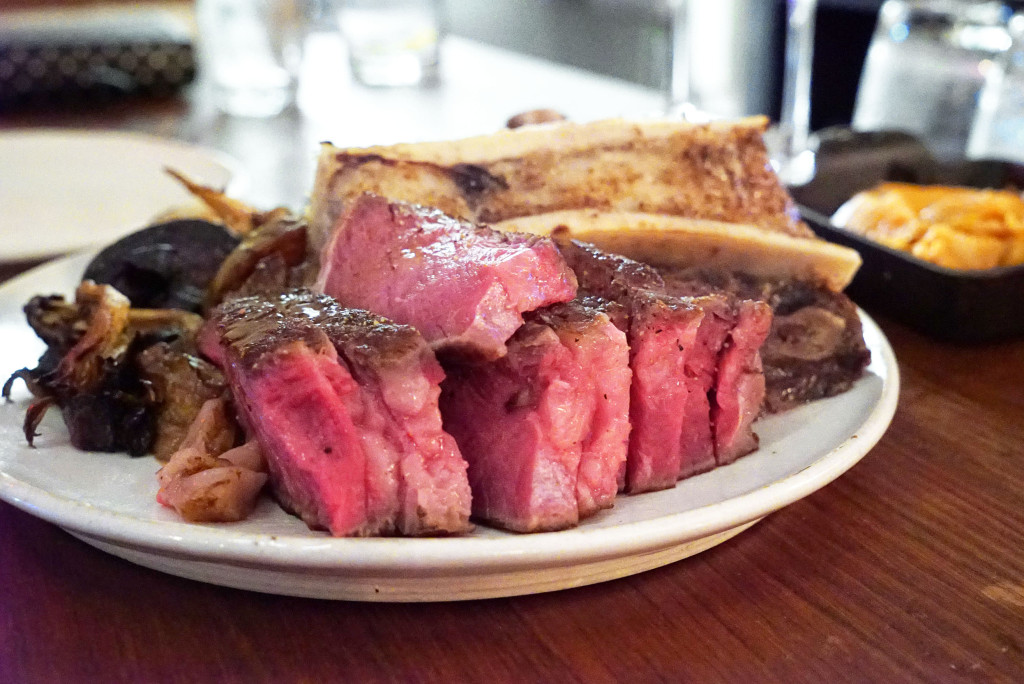
I’m still trying to wrap my mind around how incredible this thing was, and I don’t know if it can really compare to anything I’ve had at a steakhouse other than the long bone wagyu rib eye at Del Frisco’s. This thing is really in that kind of league. And look at how perfectly executed this thing is:
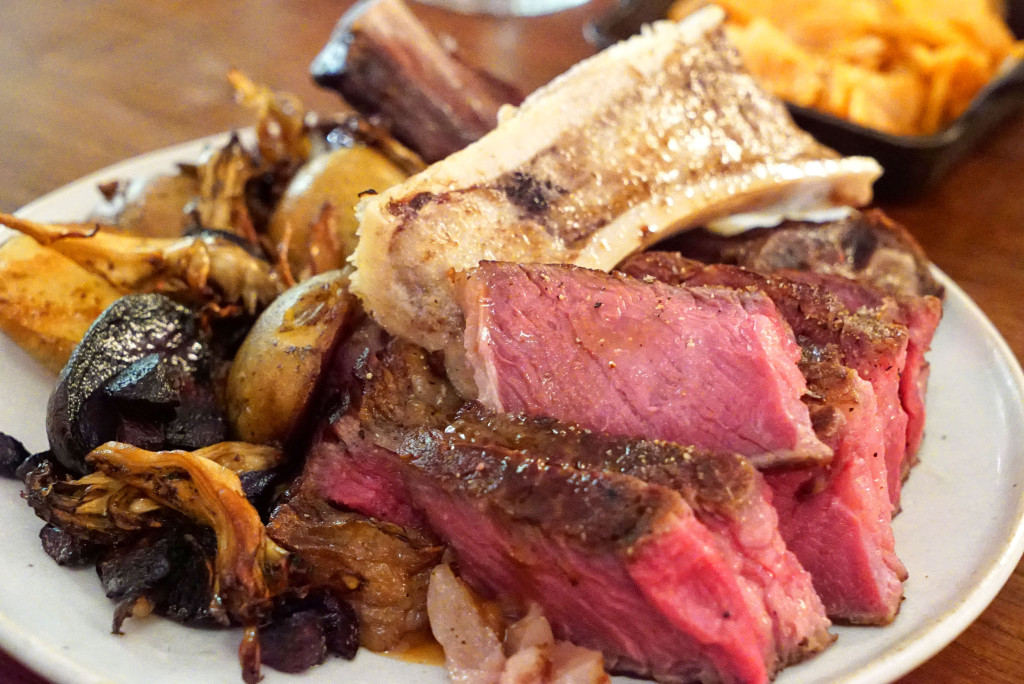
It was so tender and flavorful. Every bite was a “wow,” and the cap was fucking INSANE! I’ve never had anything like it before. I was expecting a lot of game and funk with this meat, but it was just the right subtle amount of “blue cheese” flavor. It came out most when I smeared some marrow onto the slices of eye meat. And the fat around the cap was even softer and more delicious than the marrow.
I don’t know how we did it, but we managed to fit dessert into our guts as well. Probably because what we saw on the menu was new and unique. We had to try something.
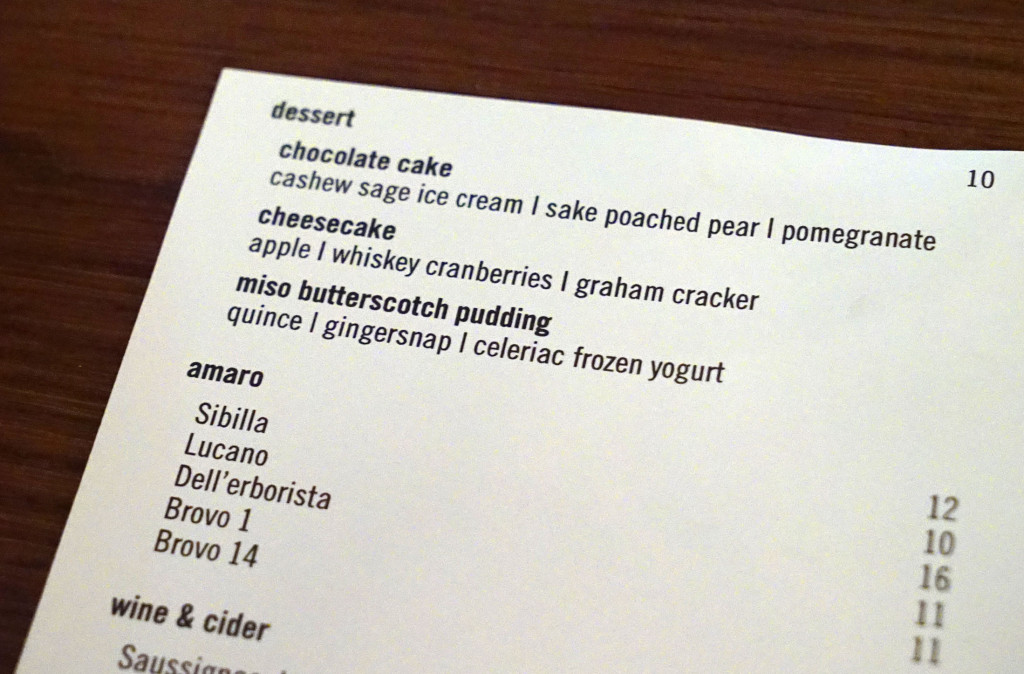
We went back and forth between two and ultimately left it in John’s hands. He came out with both; the chocolate cake, and the miso butterscotch pudding.
The chocolate cake was mildly sweet because it was expertly cut by the cashew and sage ice cream. The pomegranate balanced the whole thing with a nice acidic and tart zing.
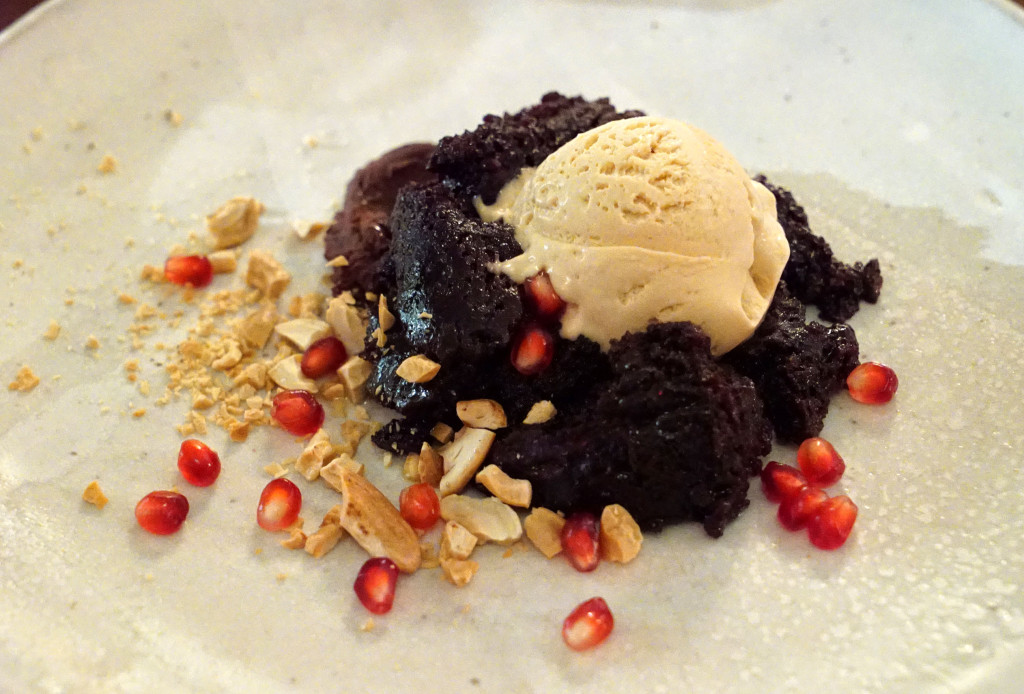
The miso butterscotch pudding is definitely something for the more adventurous dessert person. I seemed to focus my attention more on the celery ice cream than the pudding at first, but that pudding was so freaking good. The ice cream was like a palette cleanser, and the pudding was creamy and velvety – almost like a liquified peanut butter in texture – extremely innovative.
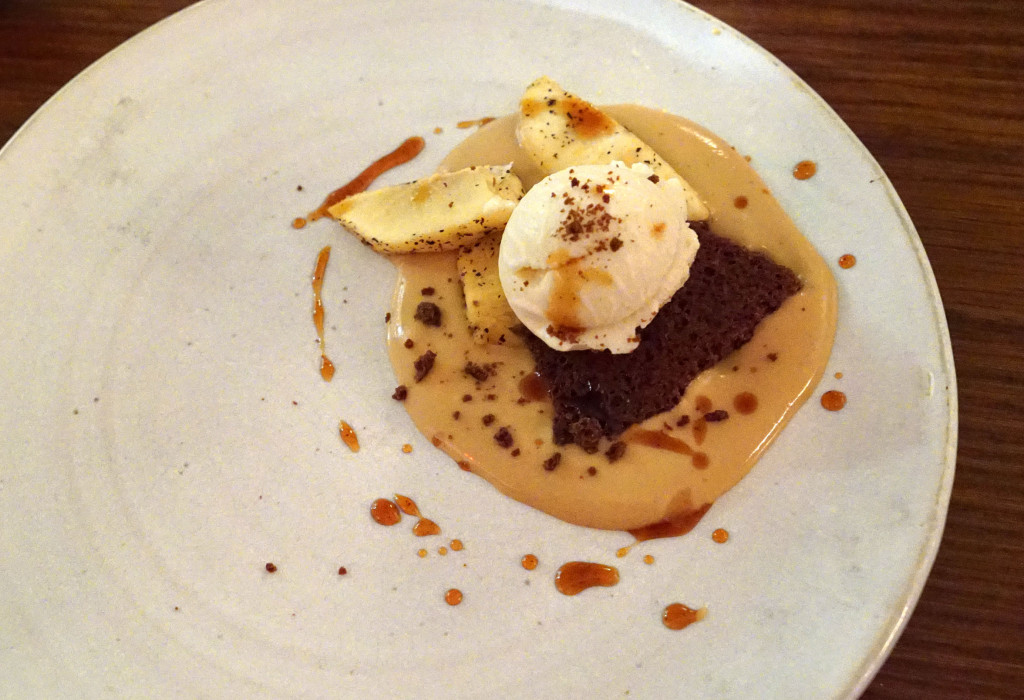
With dessert, we sipped on a trio of amaro selections, as well as a bitter lemon soda digestif that was made in house. Of these, our favorite was the Brovo #1 (center). It had a spicy cinnamon flavor that was easy to drink. And, as is true with the other stuff above, you can learn all about the people who make these spirits as you dine, because John and his staff are happy to share that information with you if you’re interested, like we were.
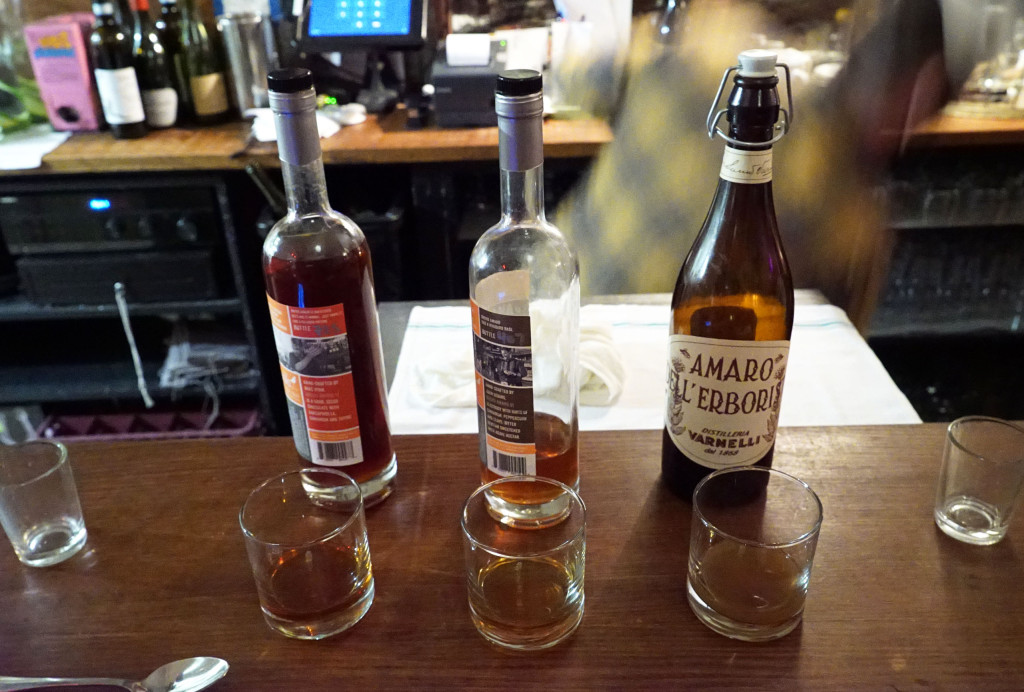

Want to hear something really amazing? This is the kitchen:
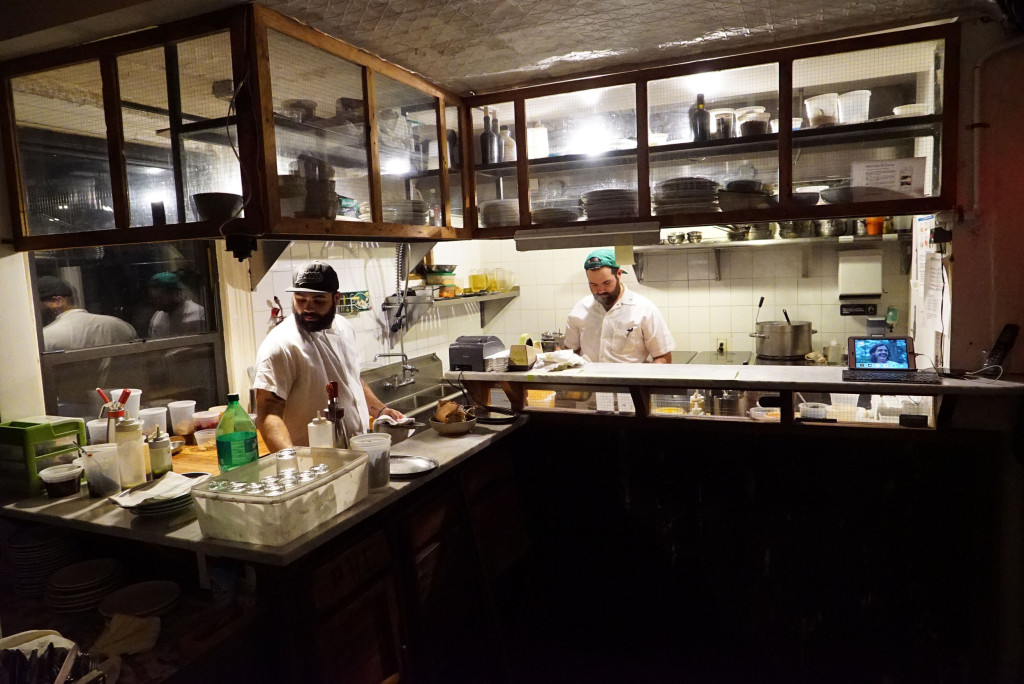
So small, yet so powerful. It is run like a well-oiled machine by incredibly skilled mechanics, pumping out what is absolutely some the finest food in NYC.
Please do yourselves a favor and go here. They may even give you a quick tour of the aging room out back if you ask nicely. Take a look at the ducks and steaks aging away! I think those ducks are at two weeks, and the steak is something like 86 days.
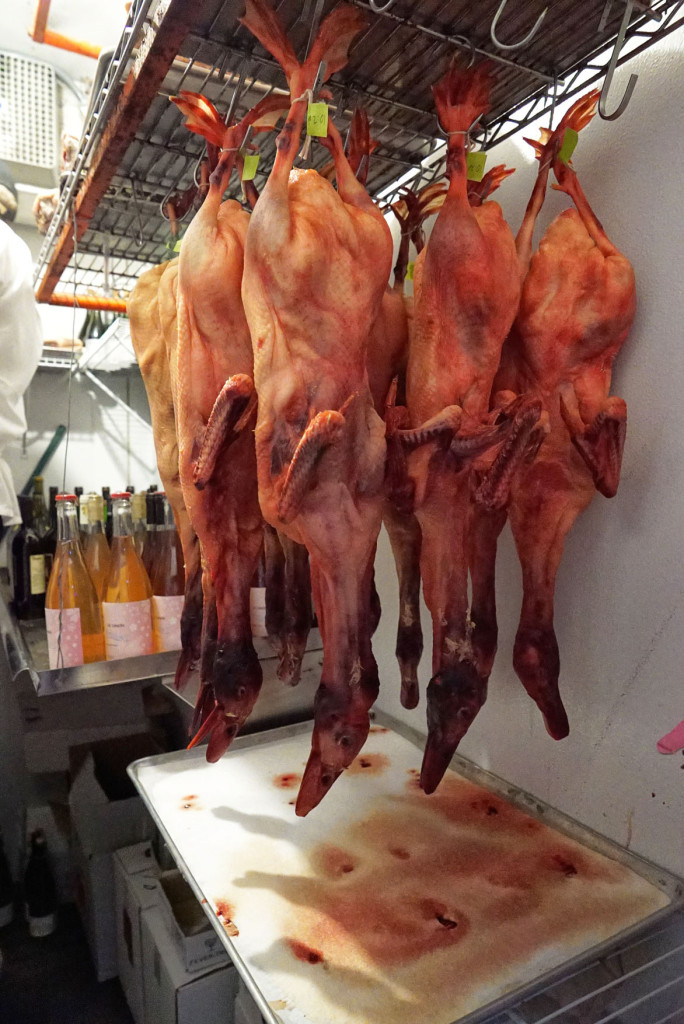
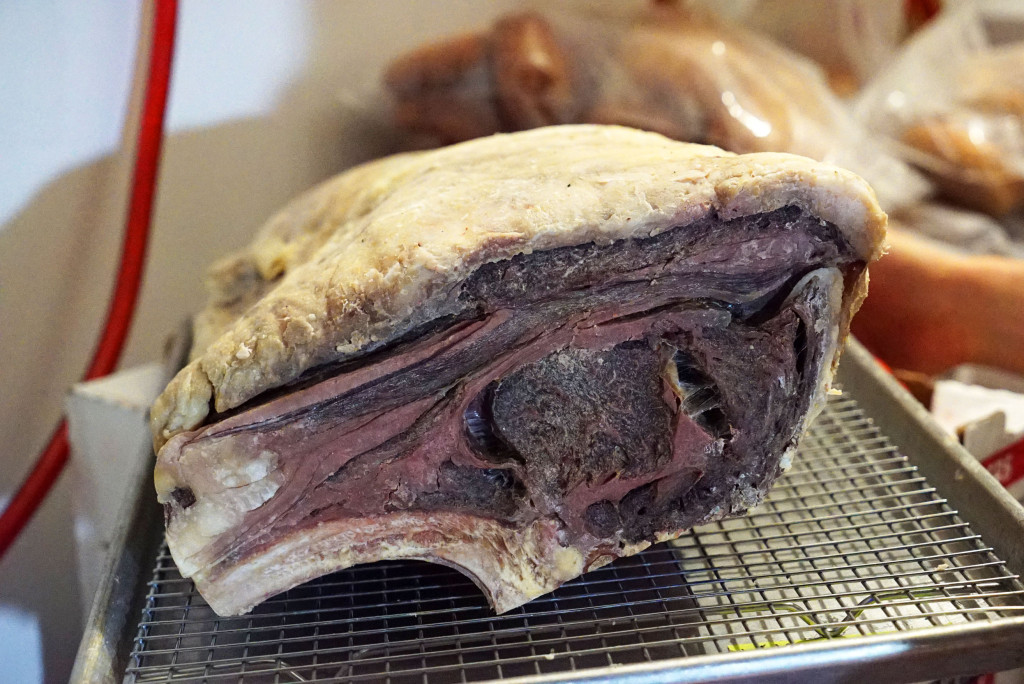
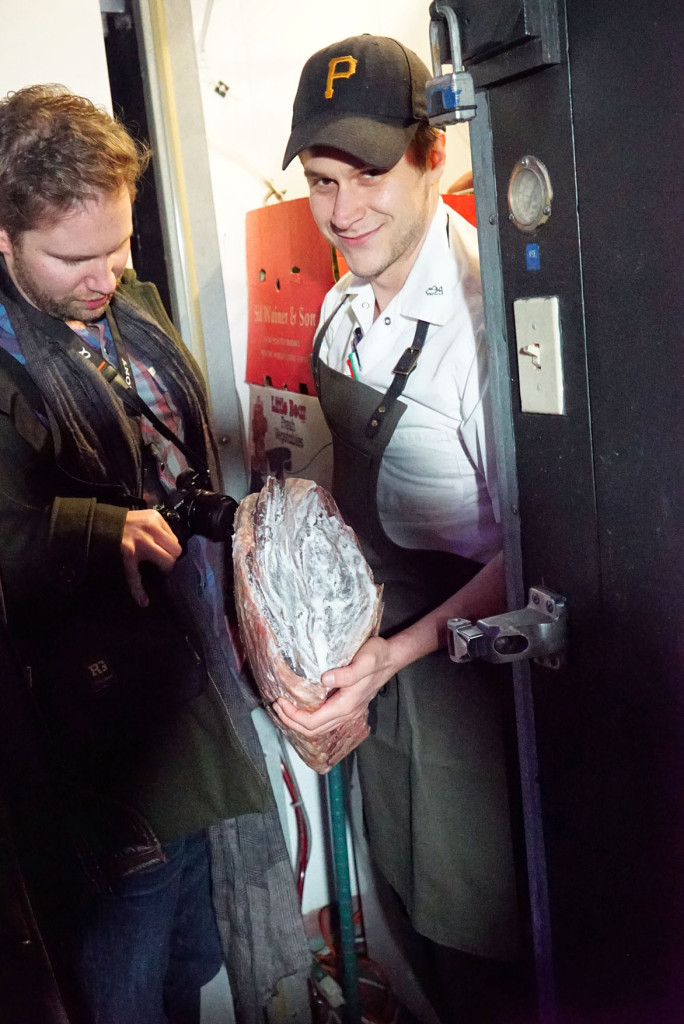
I went back with a crew of food bloggers and instagrammers for a nice meal around the holidays.

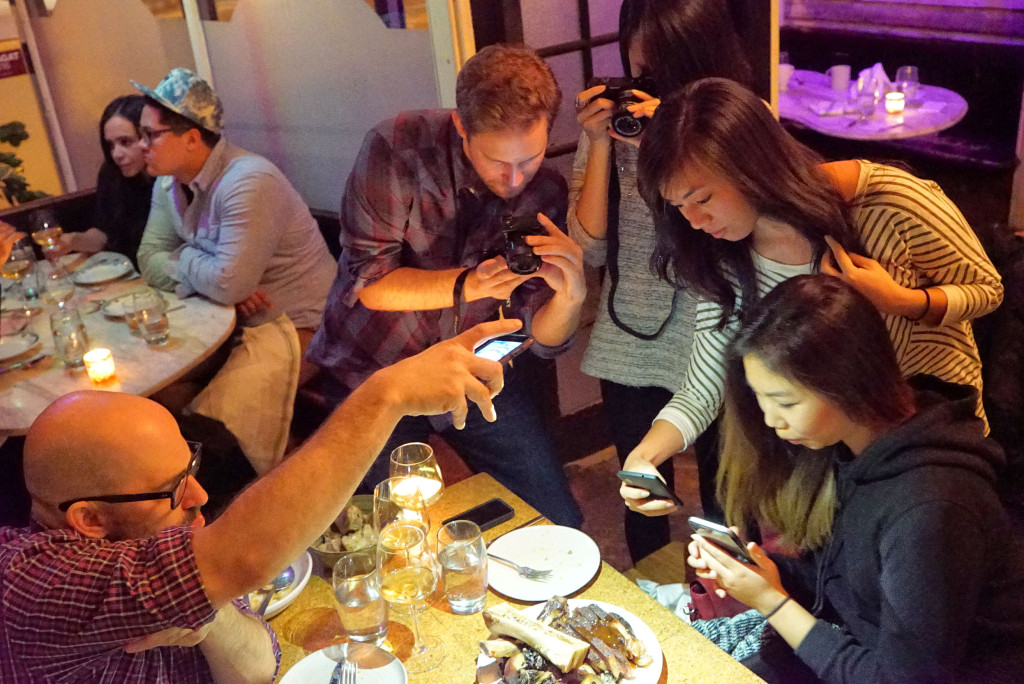

Here’s a photogasm of everything we ate, which included a duo of rib eyes – one aged for 35 days and another aged for over 80 days.
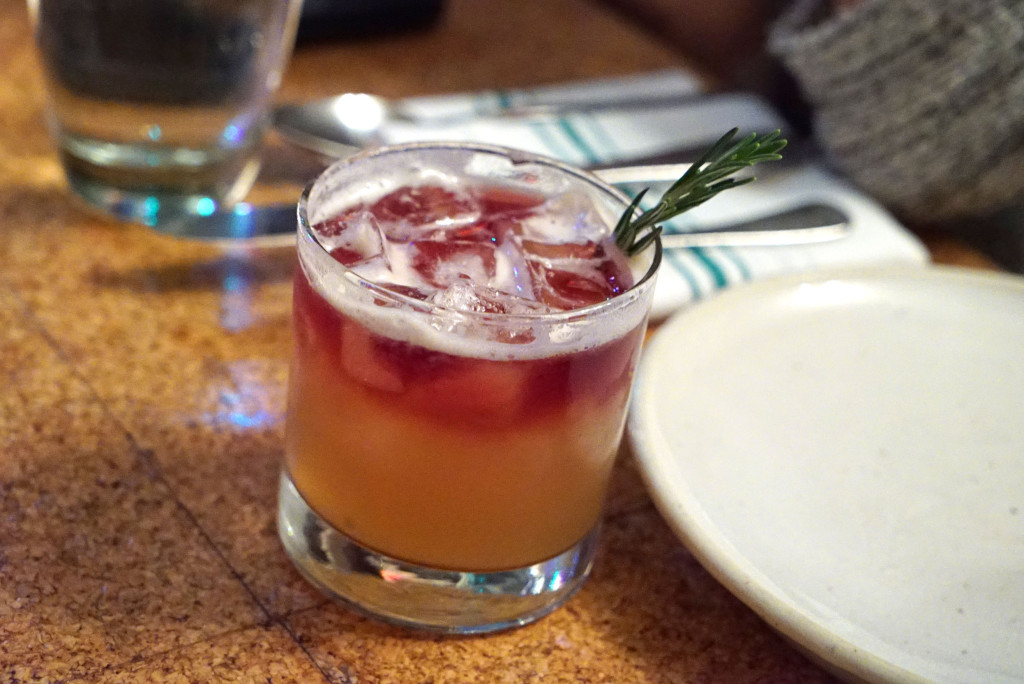
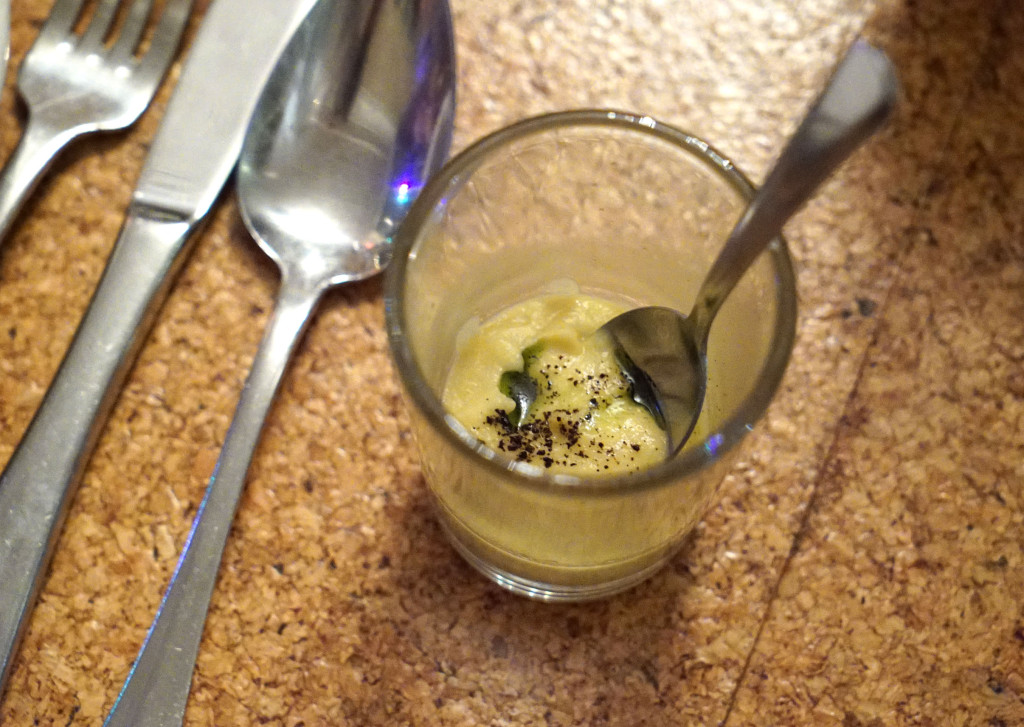
Molasses gingerbread cookies stuffed with fois gras and pistachios:
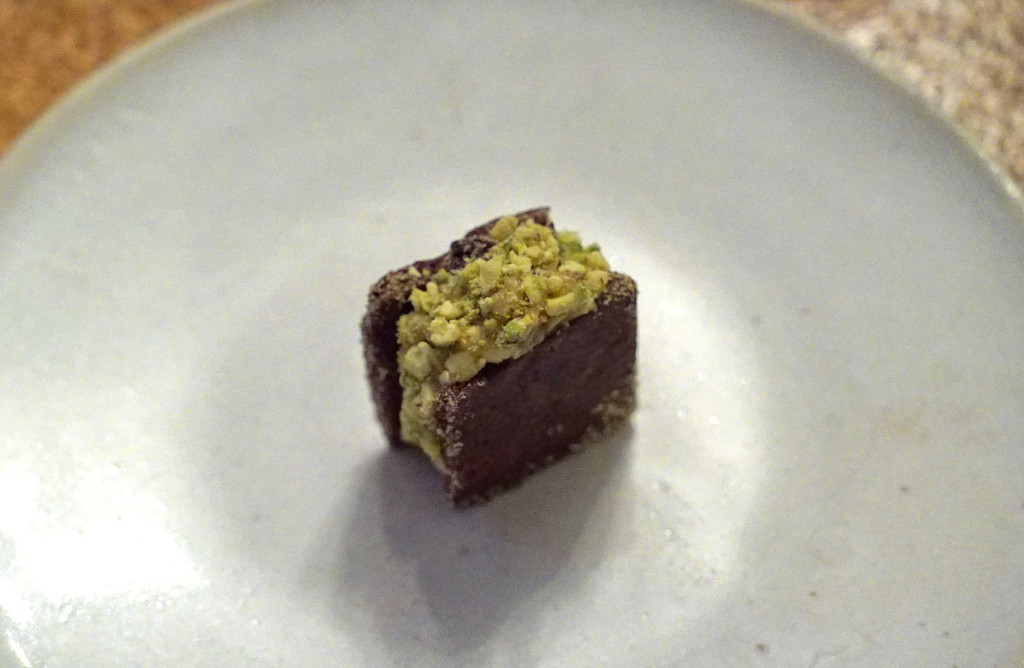
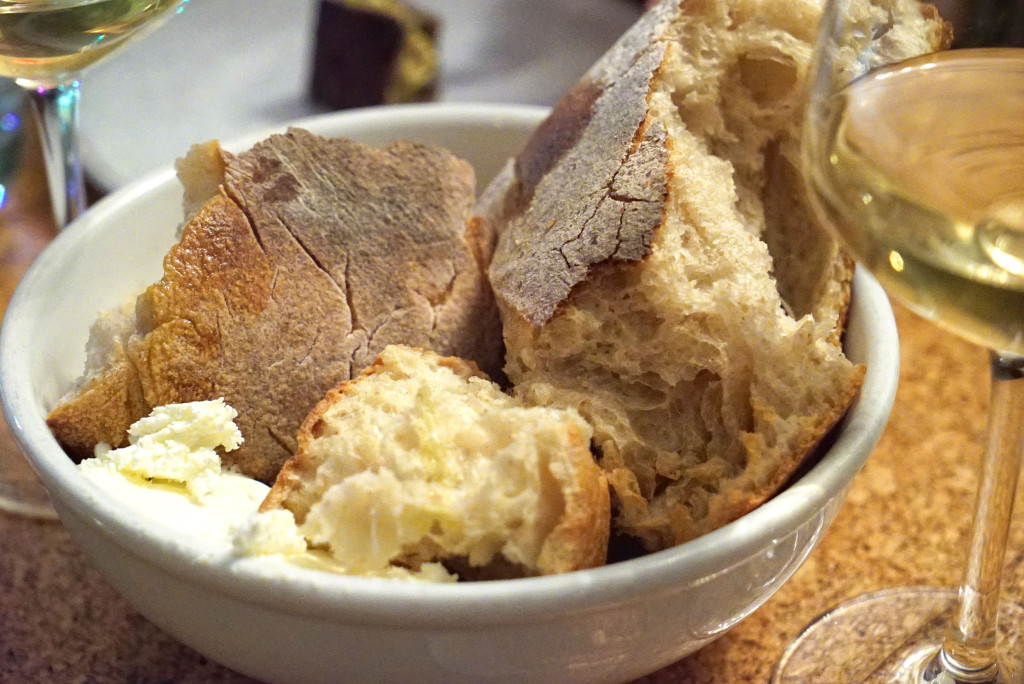
Kale salad with toasted barley:
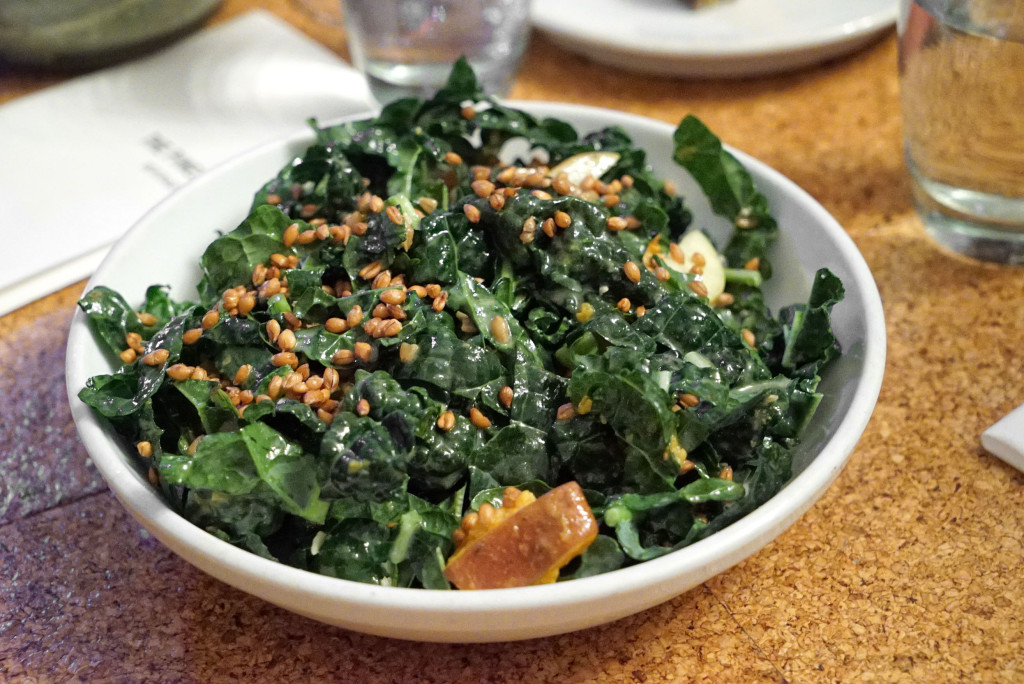
Grilled radicchio salad:
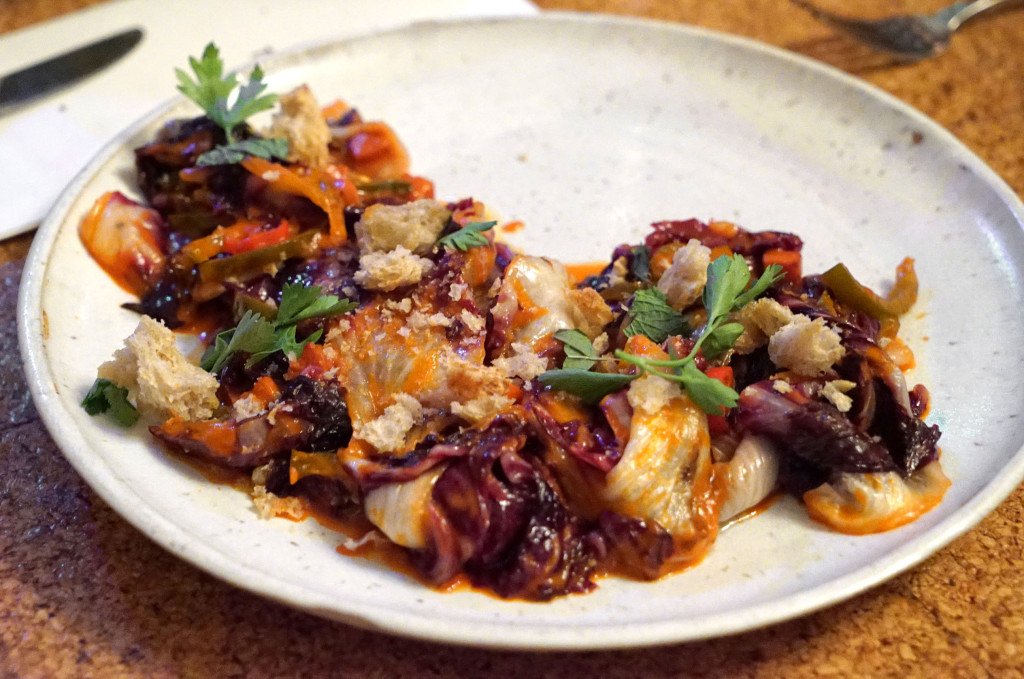
Roasted broccoli with shaved horseradish:
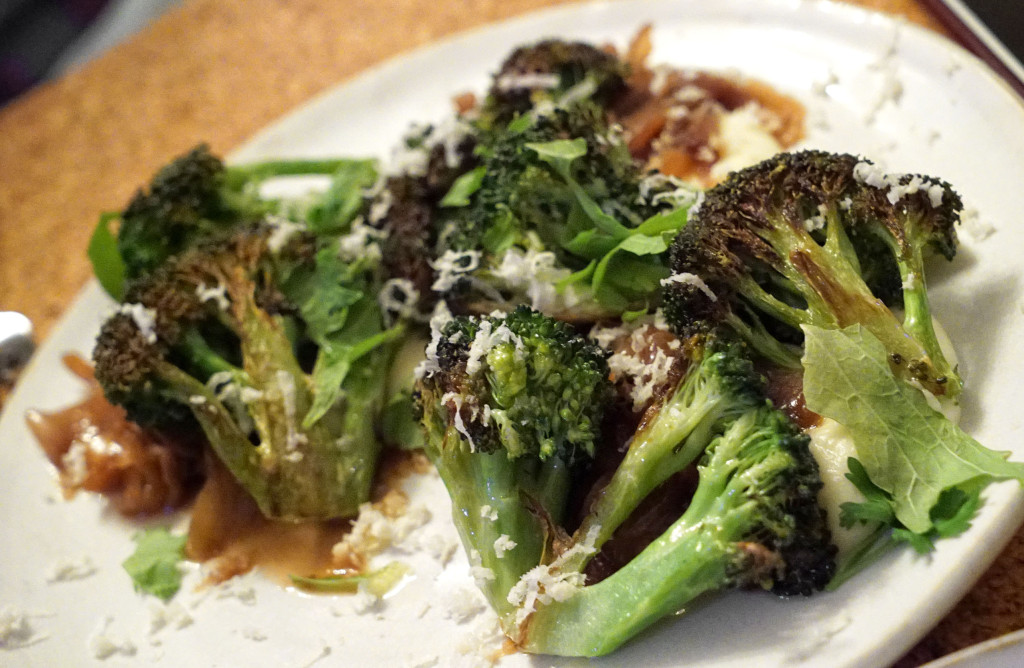
Fettuccine with mussels and chilies in a Parmesan cream sauce:
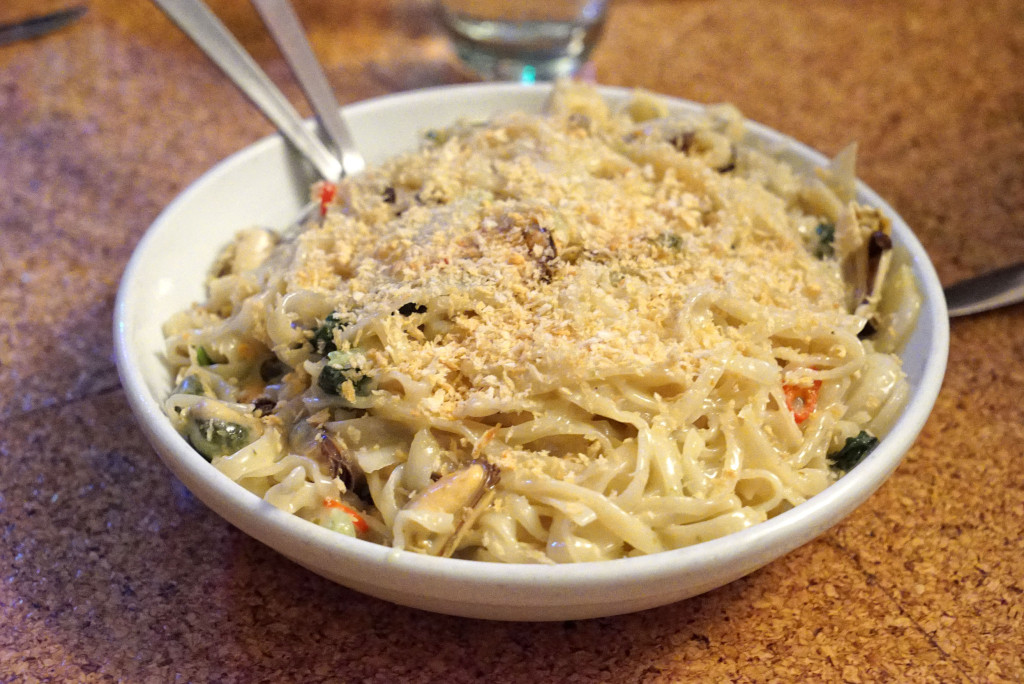
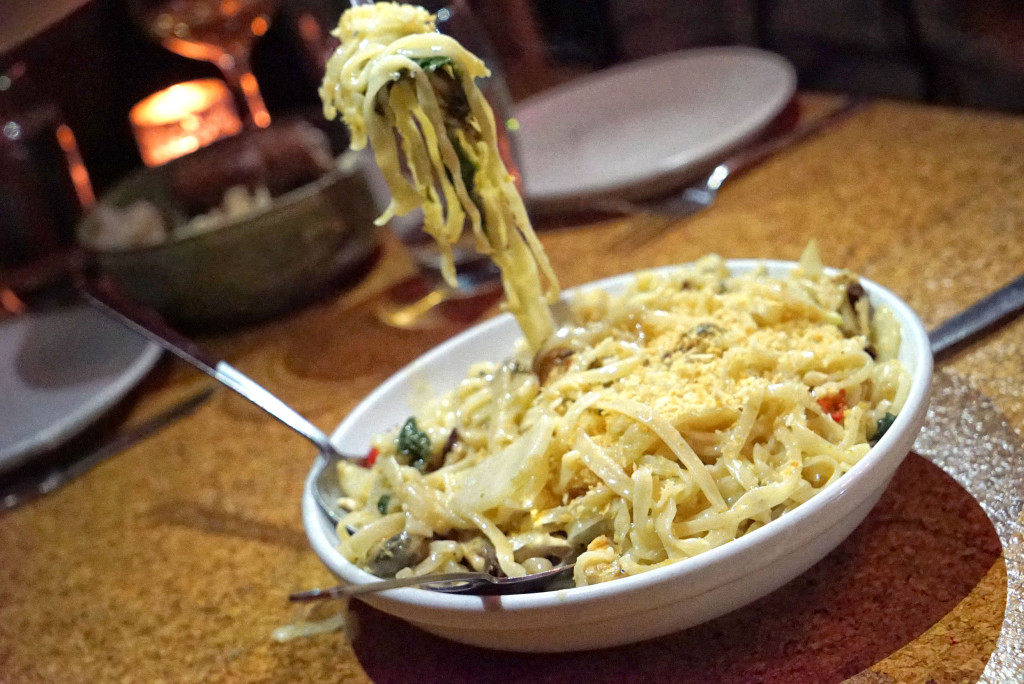
Presentation of beef!!!
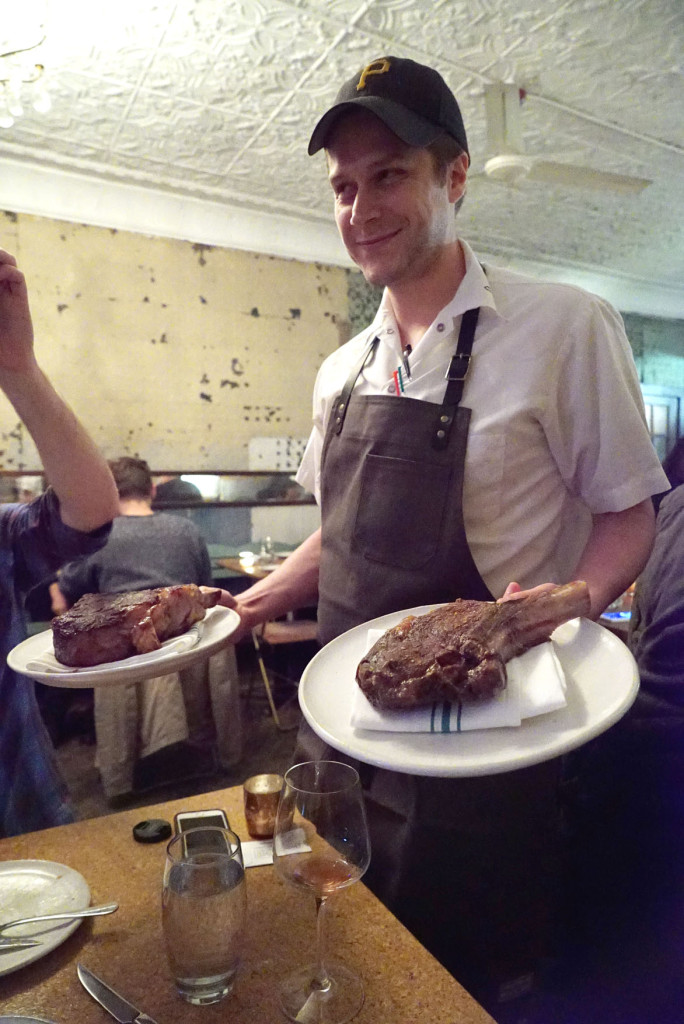
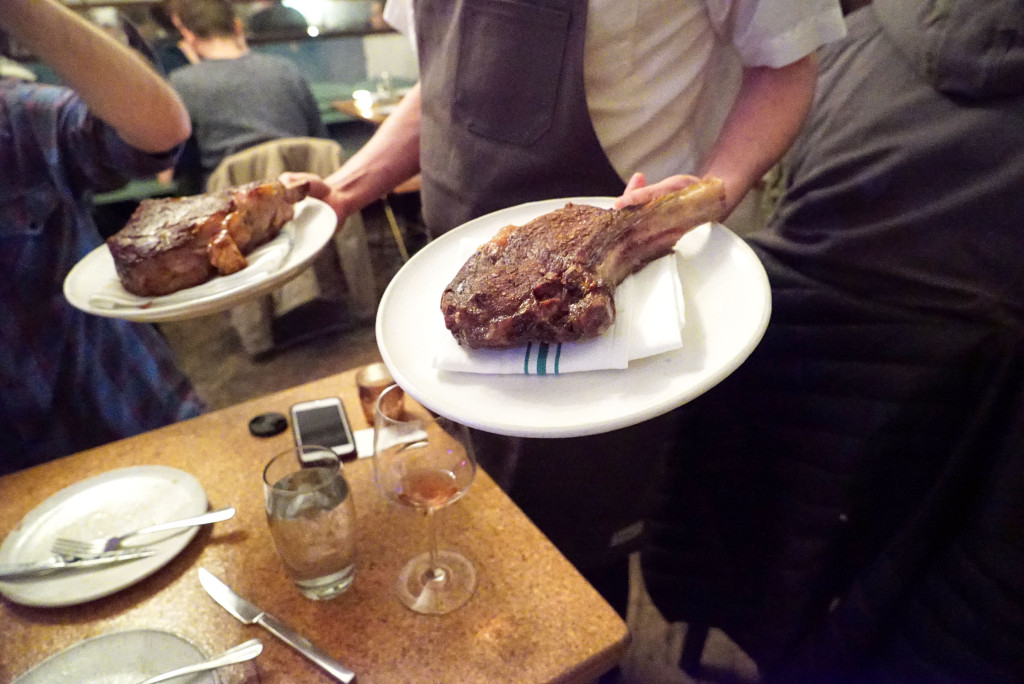
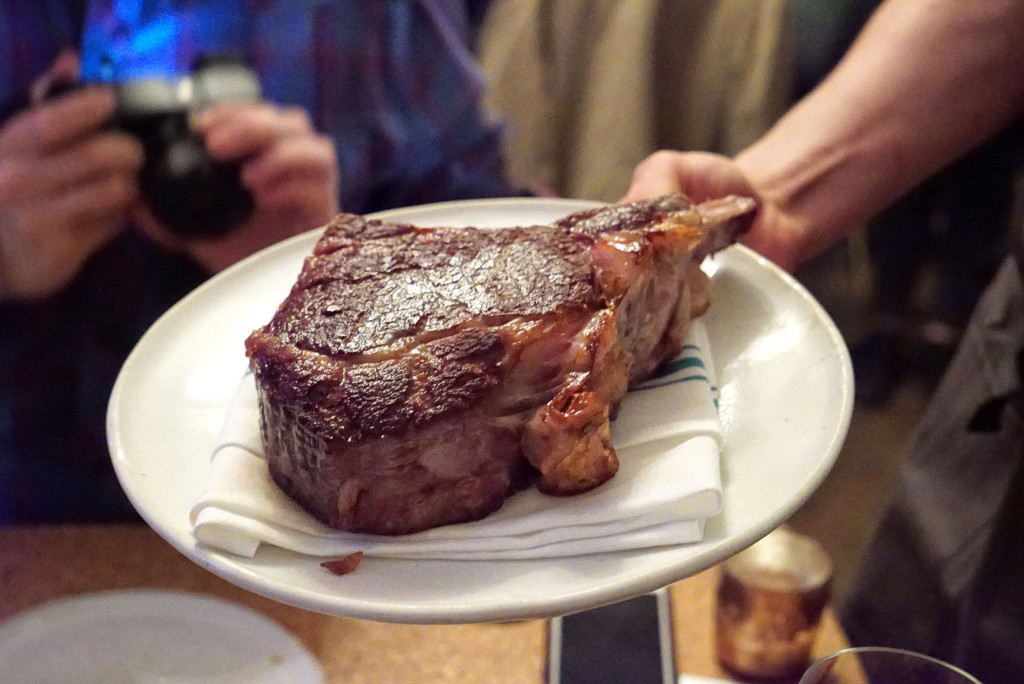
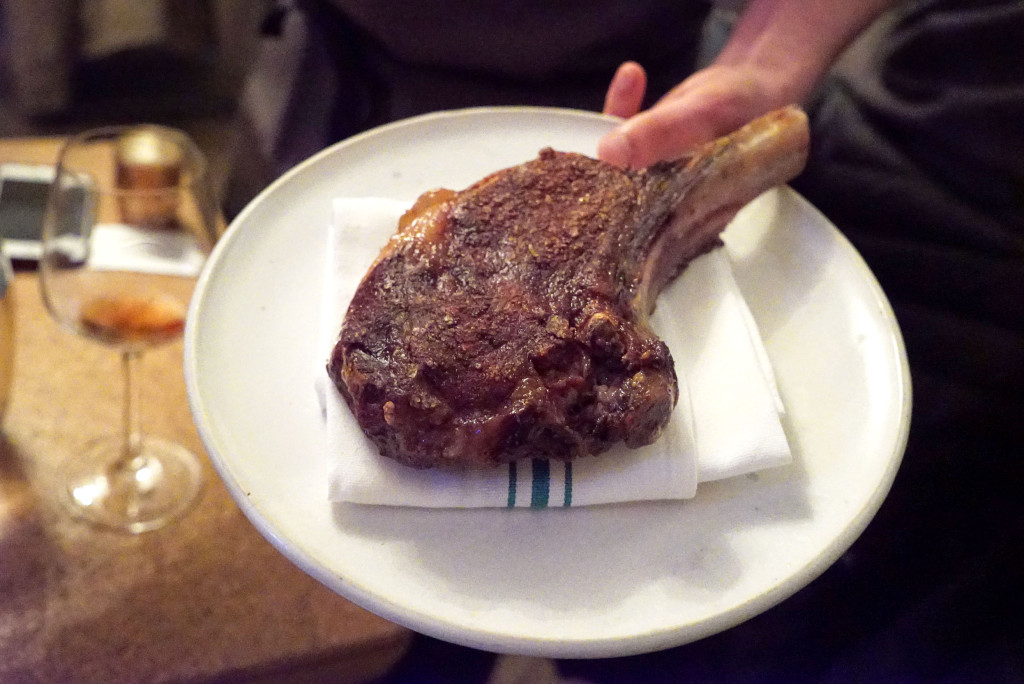
Post slicing:
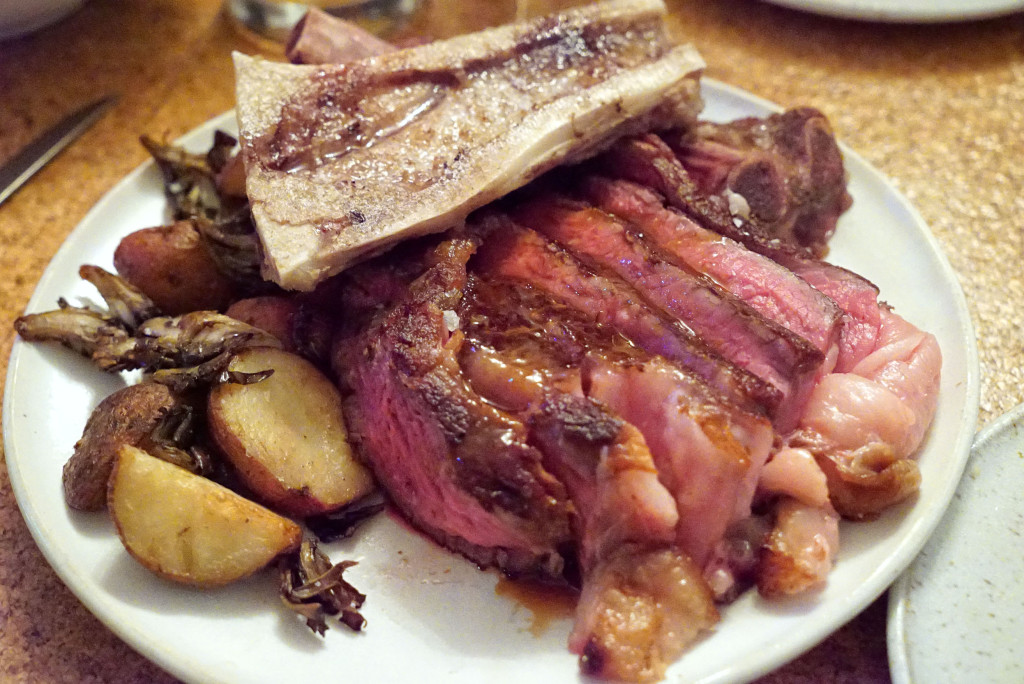
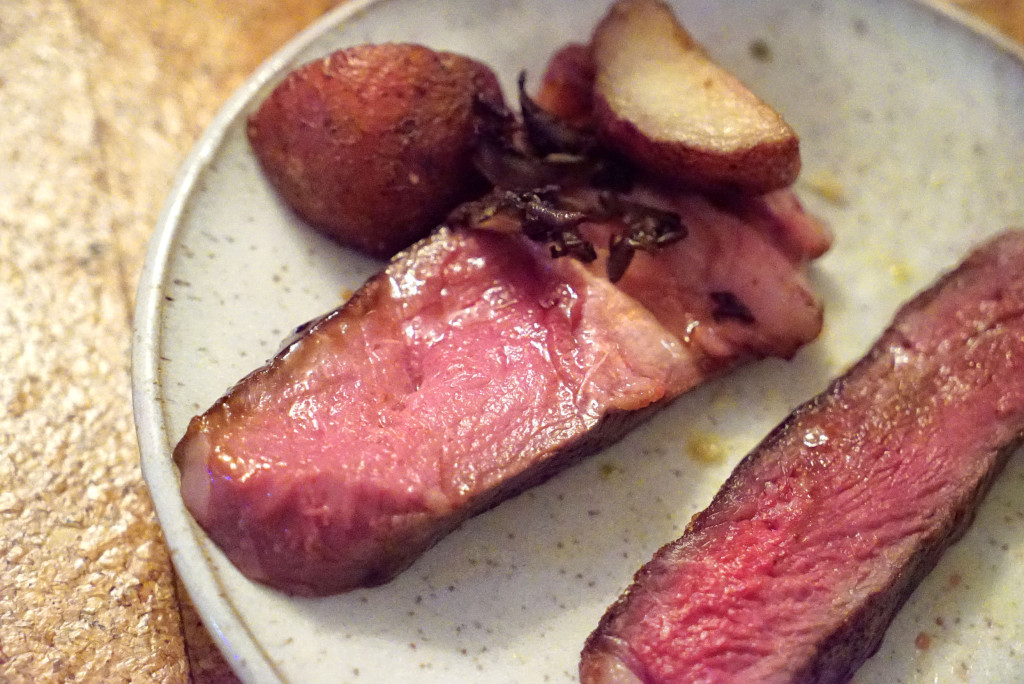
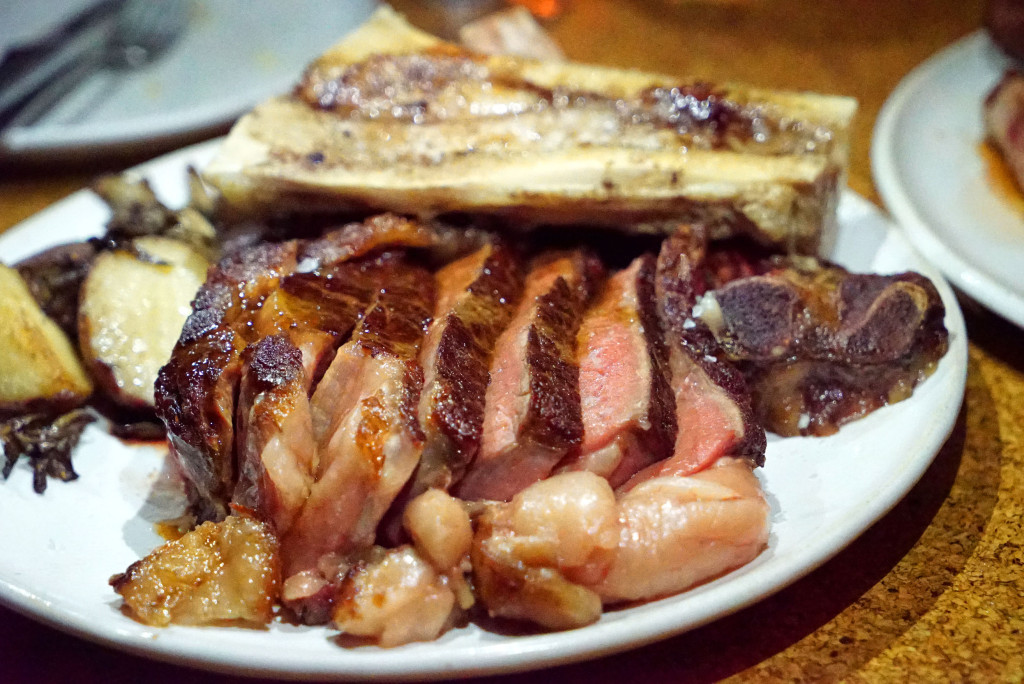
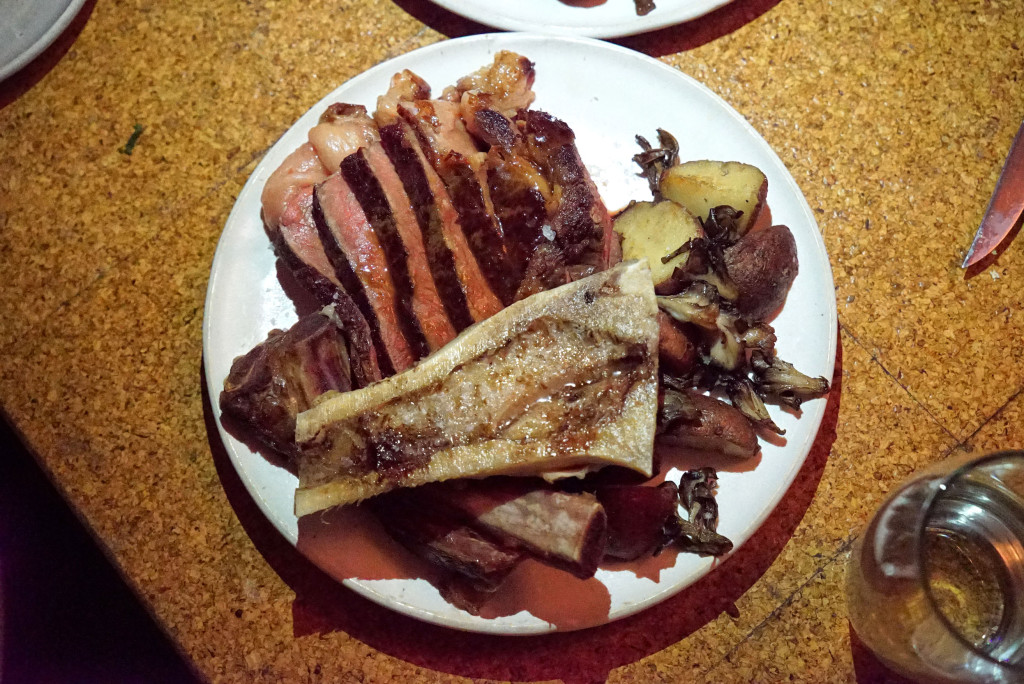
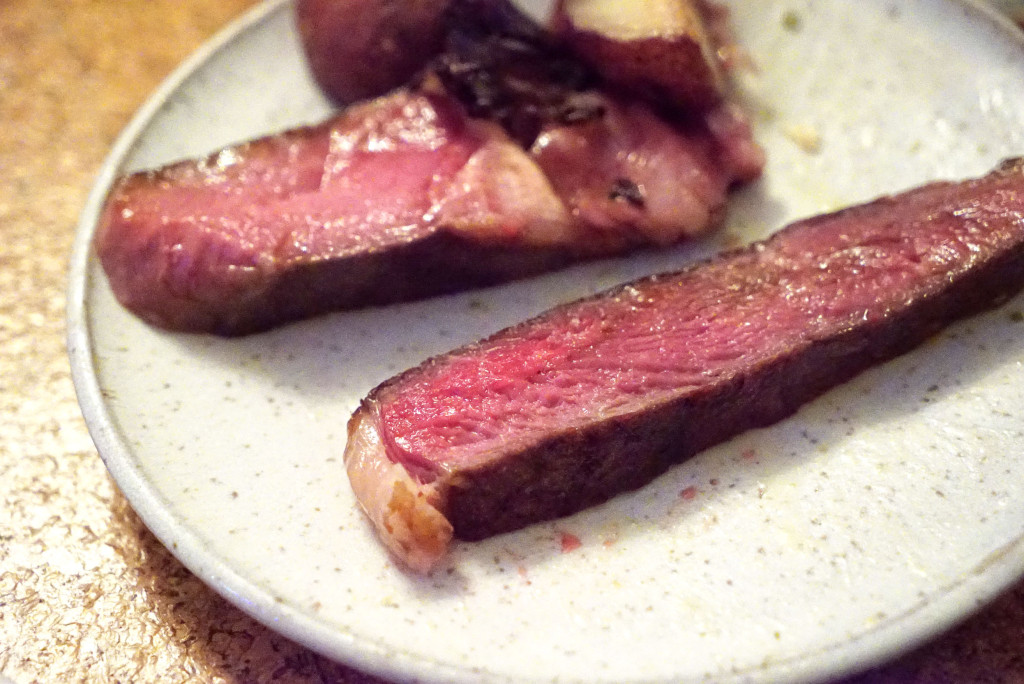
Gnawing on the bone is always fun:
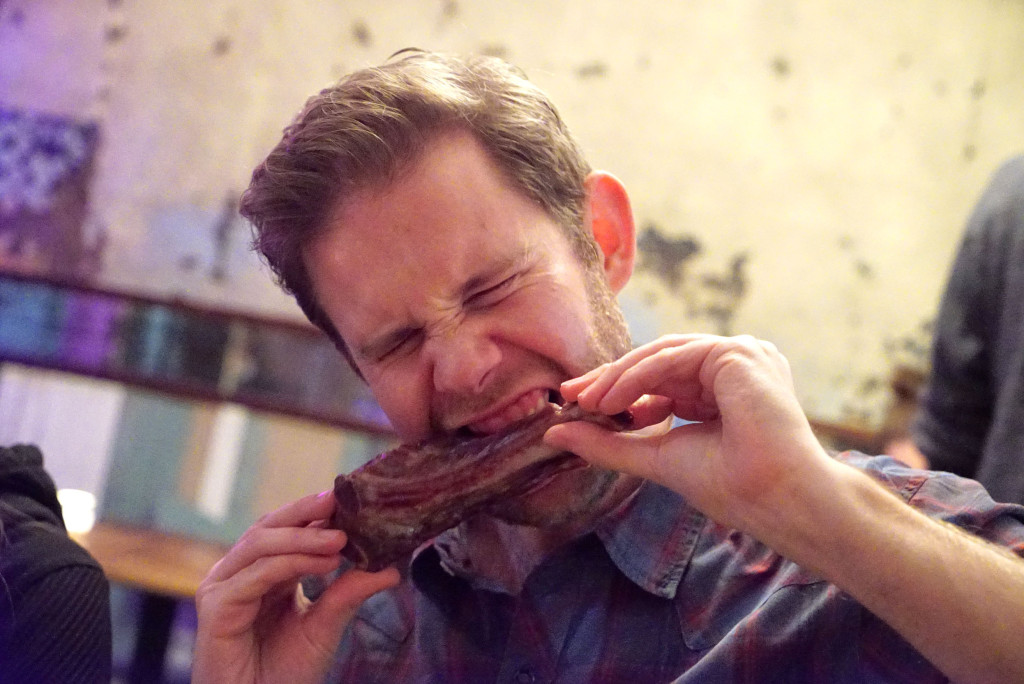
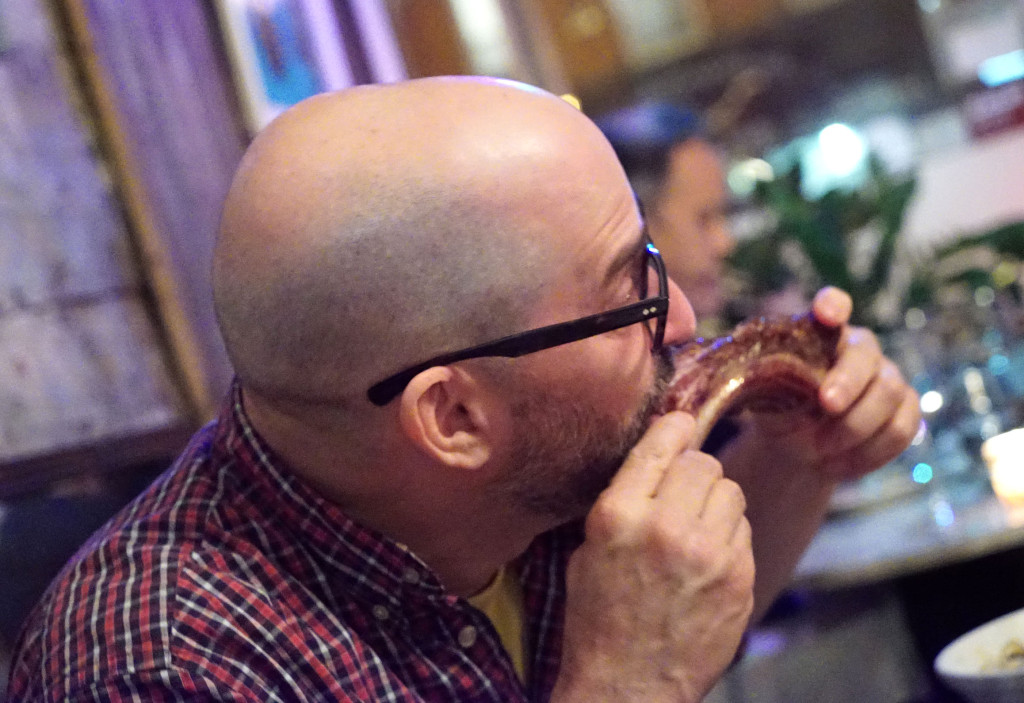
Dessert 1: bread pudding.
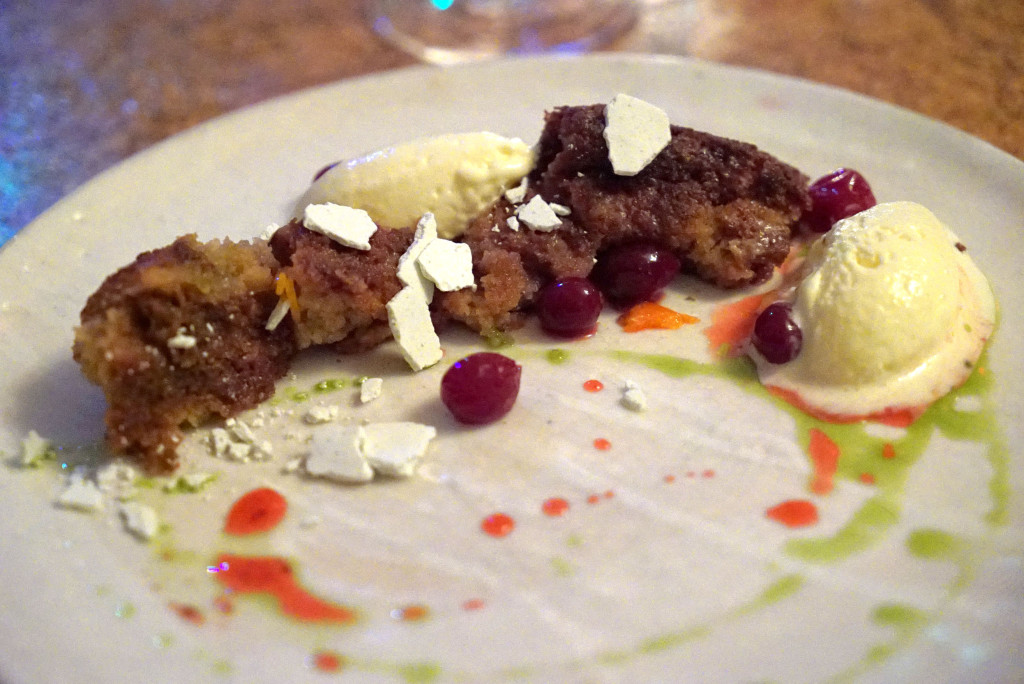
Dessert 2: herbaceous chocolate ganache.
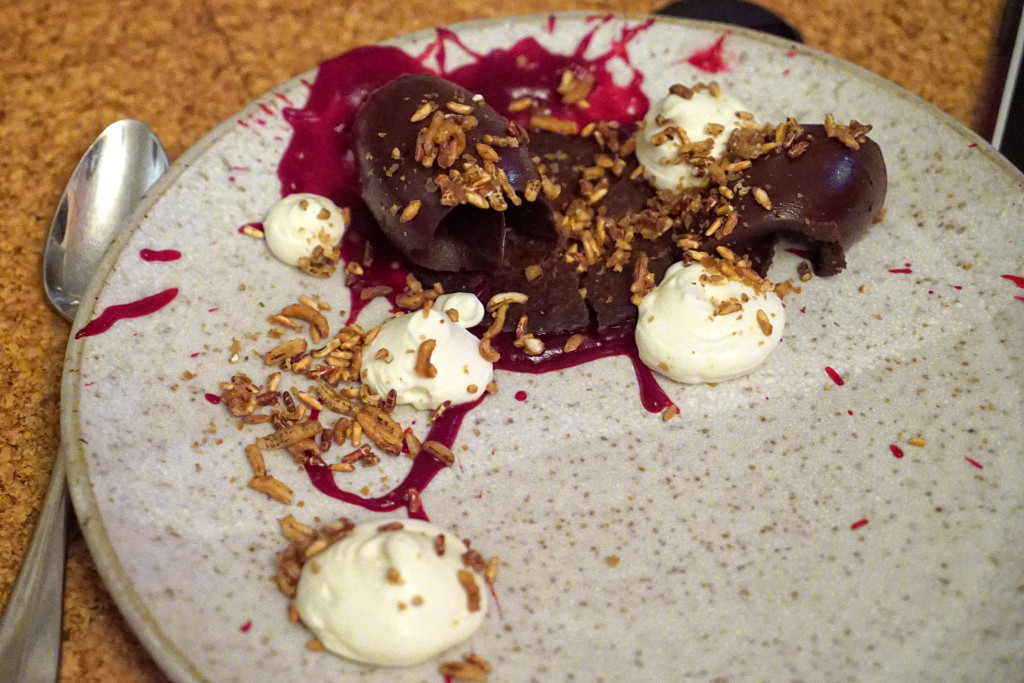
We even drank some Japanese whisky from a bone marrow slide!
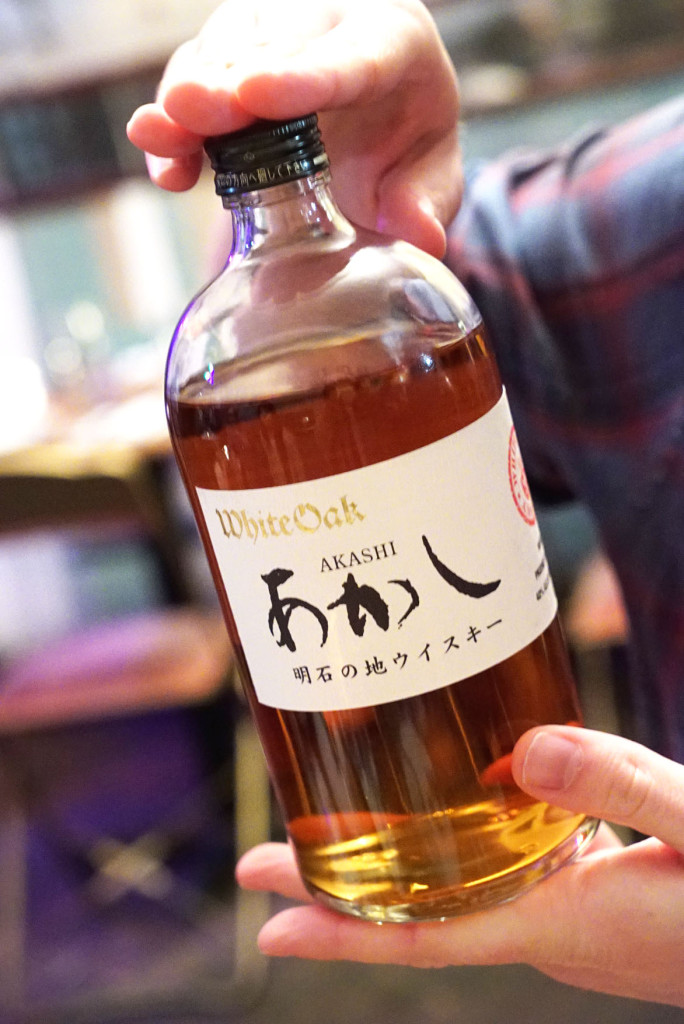


Chef John even got in on the action. Marrow luges rule!!!
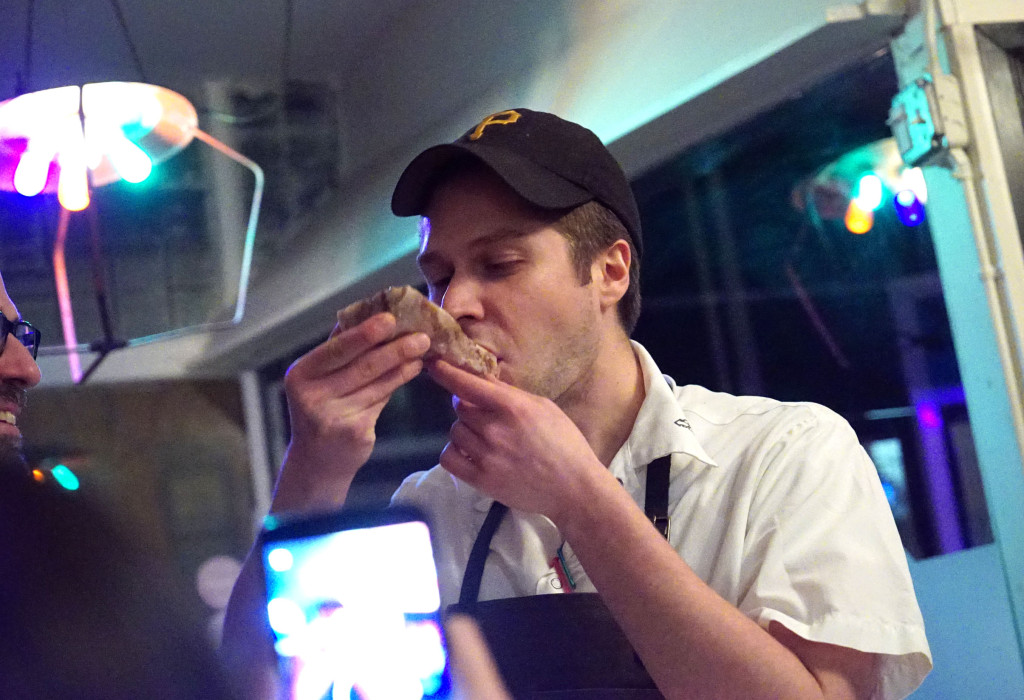
THE PINES
284 3rd Ave.
Brooklyn, NY 11215
